
Research into quality assurance in energy efficiency
and low carbon schemes in the domestic market
Final report
June 2015
Pye Tait Consulting
Royal House, 110 Station Parade, Harrogate,
HG1 1EP
Tel: 01423 509433 Fax: 01423 509502
Email: info@pyetait.com Web: www.pyetait.com
Cert No: 5120

Quality assurance in energy efficiency and low carbon schemes
Page 2 of 136
Table of contents
Executive summary ...................................................................................................................... 8
1. Introduction ........................................................................................................................... 14
1.1 Background to the research ........................................................................................................ 14
1.2 Research objectives .................................................................................................................... 15
1.3 Methodology ............................................................................................................................... 15
1.4 Report structure .......................................................................................................................... 19
2. The current landscape of domestic energy efficiency and low carbon ...................................... 20
2.1 Introduction ................................................................................................................................ 20
2.2 Relevant energy efficiency and low carbon schemes and initiatives and their quality assurance
mechanisms ...................................................................................................................................... 21
2.3 Other mechanisms underpinning quality assurance applicable for domestic energy efficiency
and low carbon ................................................................................................................................. 59
2.4 How the quality assurance framework fits together .................................................................. 78
3. Issues with quality assurance in the domestic energy efficiency market ................................... 81
3.1 Introduction ................................................................................................................................ 81
3.2 A highly complex landscape ........................................................................................................ 81
3.3 Lack of one central body with overarching responsibility and accountability ........................... 83
3.4 Gaps in consumer protection ...................................................................................................... 87
3.5 Certification bodies ..................................................................................................................... 88
3.6 Accreditation process ................................................................................................................. 90
3.7 Guarantees and warranties ........................................................................................................ 92
3.8 Standards for installers ............................................................................................................... 96
3.9 Lack of impartiality ...................................................................................................................... 98
3.10 Audit ........................................................................................................................................ 101
3.11 Flaws in assessment tools and methodology ......................................................................... 104
3.12 Training and competence ....................................................................................................... 106
3.13 Risks and potential consequences for consumers .................................................................. 112
4. Conclusions and recommendations ....................................................................................... 115
4.1 Conclusions ............................................................................................................................... 115
4.2 Recommendations .................................................................................................................... 124
Bibliography ............................................................................................................................ 127

Quality assurance in energy efficiency and low carbon schemes
Page 3 of 136
List of figures
Figure 1: Summary of core actions required to improve quality assurance and therefore achieve
better consumer protection ................................................................................................................. 11
Figure 2: Respondents to the Call for Evidence, by type of response .................................................. 17
Figure 3: Respondents to the Call for Evidence, by nation ................................................................... 17
Figure 4: Respondents to the Call for Evidence, by categories that best describe them ..................... 18
Figure 5: Green Deal process ................................................................................................................ 22
Figure 6: Hierarchy of Green Deal organisations .................................................................................. 23
Green Deal Home Improvement Fund .................................................................................................. 33
Figure 7: Hierarchy of Energy Company Obligation (ECO) organisations ............................................. 36
Figure 8: Hierarchy of Microgeneration Certification Scheme organisations ...................................... 39
.............................................................................................................................................................. 40
Figure 9: Delivery process for Arbed 2 and quality assurance for consumers ..................................... 55
Figure 10: Respondent views on the fitness of purpose of guarantees and warranties ...................... 92
Figure 11: Respondent views on the fitness of purpose of manufacturer kite marks ......................... 94
Figure 12: Respondent views on the fitness of purpose of the Green Deal Home Improvement Fund
............................................................................................................................................................ 101
Figure 13: Customer journey showing potential consumer protections and risks within the quality
assurance framework for Green Deal ................................................................................................. 118
Figure 14: Customer journey showing potential consumer protections and risks within the quality
assurance framework for ECO ............................................................................................................ 119
Figure 15: Customer journey showing potential consumer protections and risks within the quality
assurance framework for MCS ............................................................................................................ 120
Figure 16: Customer journey showing potential consumer protections and risks within the quality
assurance framework for HEEPS ......................................................................................................... 121
Figure 17: Customer journey showing potential consumer protections and risks within the quality
assurance framework for Arbed 2 ...................................................................................................... 122
Figure 18: Customer journey showing potential consumer protections and risks within the quality
assurance framework for Nest ............................................................................................................ 123
List of tables
Table 1: Summary of key research findings .......................................................................................... 10
Table 2: Research recommendations ................................................................................................... 11
Table 3: Respondents to the in-depth telephone interviews ............................................................... 19
Table 4: Overview of the main Government domestic energy efficiency and low carbon schemes in
England, Scotland and Wales ................................................................................................................ 20
Table 5: Green Deal organisations, their functions and role in the quality assurance framework ...... 24
Table 6: Green Deal Quality Assurance framework processes and procedures ................................... 28
Table 7: GDHIF organisations, their functions and role in the quality assurance framework .............. 34
Table 8: Energy Company Obligation organisations and their roles in the quality assurance
framework ............................................................................................................................................. 36

Quality assurance in energy efficiency and low carbon schemes
Page 4 of 136
Table 9: Energy Company Obligation quality assurance framework processes and procedures ......... 38
Table 10: MCS organisations, their functions and role in the quality assurance framework ............... 41
Table 11: Microgeneration Certification Scheme Quality Assurance framework processes and
procedures ............................................................................................................................................ 44
Table 12: HEEPS organisations, their functions and role in the quality assurance framework ............ 54
Table 13: Arbed organisations, their functions and role in the quality assurance framework ............ 56
Table 14: Nest organisations, their functions and role in the quality assurance framework ............... 58
Table 15: UK Competent Person Schemes and the organisations involved ......................................... 62
Table 16: Organisations involved in the quality, certification and kite marks ...................................... 69
Table 17: Organisations involved in guarantees and warranties .......................................................... 75
Table 18: Main quality assurance framework mechanisms, Green Deal, ECO and MCS ...................... 79
Table 19: Main quality assurance framework mechanisms, HEEPS, Arbed 2 and Nest ....................... 80
Table 20: Reasons for ratings of usefulness for PAS 2030 .................................................................... 97
Table 21: Reasons for ratings of usefulness of the Level 3 Diploma in Green Deal Advice based on
National Occupational Standards (NOS) ............................................................................................. 107
Table 22: Reasons for ratings of usefulness for Common Minimum Technical Competencies (CMTCs)
............................................................................................................................................................ 108
Table 23: Reasons for ratings of usefulness for the Competent Persons Scheme ............................. 111

Quality assurance in energy efficiency and low carbon schemes
Page 5 of 136
Glossary
ABS
Area Based Scheme
APHC
Association of Plumbing and Heating Contractors
BBA
Bri
tish Board of Agrément
BESCA
Building Engineering Services Competence Association
BINDT
British Institute of Non
-
Destructive Testing
BRE
Building Research Establishment
BREEAM
Building Research Establishment
Environmental Assessment Methodology
BSI
British Standards Ins
t
itution
CCA
Consumer Credit Act
CCL
Climate Change Levy
CERT
Carbon Emission Reduction Target
CESP
Community Energ
y Savings Programme
CIGA
Cavity Insulation Guarantee Agency
CITB
Construction Industry Training Board
CMTC
Common Minimum Technical Competencies
CPD
Continuing Professional Development
CPS
Competent Persons Scheme
CRC
Carbon Reduction Commitment
CW
IS
Cavity Wall Insulation Systems
CWISC
Cavity Wall Insulation Self Certification scheme
DAWWI
Deposit and Workmanship Warranty Insurance Scheme
DCLG
Department of Communities and Local Government
DECC
Department of Energy and Climate Change
ECA
Elec
trical Contractors Association

Quality assurance in energy efficiency and low carbon schemes
Page 6 of 136
ECO
Energy Company Obligation
(commenced in January 2013)
ECO 2
The second phase of the obligation period (1
st
April 2015
–
31
st
March 2017)
EIA
Environmental Impact Assessment
EPC
Energy Performance Certifica
te
ESO
E
uropean Standards Organisation
EST
Energy Saving Trust
FCA
Financial Conduct Authority
FENSA
Fenestration Self
-
Assessment
scheme
FIT
Feed
-
In Tariff
GD ORB
Green Deal Oversight and Registration Body
GDA
Green Deal Advisor
GDAO
Green Deal Assessor O
rganisation
GDAR
Green Deal Advice Report
GDFC
Green Deal Finance Company
GDHIF
Green Deal Home Improvement Fund
GDP
Green Deal Provider
GGF
Glass and Glazing Federation
HEEPS
Home Energy Efficiency Programmes for Scotland
HIES
Home Insulation & En
ergy Systems Quality Assured Contractors Scheme
HETAS
Heating Equipment Assessment and Approval Scheme
IEMA
Institute of Environmental Management and Assessment
ISO
International Organisation for Standardisation
LABC
Lo
cal Authority Building Control
MCS
Microgeneration Certification Scheme
MIS
Microgeneration Installation Standard

Quality assurance in energy efficiency and low carbon schemes
Page 7 of 136
NICEIC
National Inspection Council for Electrical Installation Contracting
NOS
National Occupation
al
Standard
s
NVQ
National Vocational Qualification
OA
Occupancy A
greement
OFGEM
Of
fice of Gas and Electricity Mark
ets
OFT
EC
Oil Firing Technical Association
PAS
Publicly Available Specification
PCN
Personnel Certification in Non
-
Destructive Testing
QANW
Qualit
y Assured National Warranties
QCF
Qualifications and C
redit Framework
QMS
Quality Management System
RdSAP
Reduced Data Standard Assessment Procedure
REAL
Renewable Energy Assurance Limited
RECC
Renewable Energy Consumer Code
REIGA
Renewable Energy Installation Guarantee Agency
REW
Resource Efficient
Wales
RHI
Renewable Heat Incentive
RHPP
Renewable Heat Premium Payment
SAP
Standard Assessment Procedure
SQCF
Scottish Qualifications and Credit Framework
SWIGA
Solid Wall Insulation Guarantee Agency
SVQ
Scottish Vocational Qualification
UKAS
U
nited Kingdom Accreditation Service
UK LPG
Trade association for the Liquefied Petroleum Gas industry in the UK

Quality assurance in energy efficiency and low carbon schemes
Page 8 of 136
Executives ummary
Overview of the research
The drive to improve energy efficiency in domestic homes has gained momentum
in recent ye
ars,
propelled by a mix of legislation and incentivised schemes to encourage consumers to reduce
their energy consumption and become more energy efficient.
The main benefits include:
For consumers:
For
policy
-
makers
:
H
ome is more comfortable
Home is cheaper to run
Helps to tackle climate change
Contributes to reduction of fuel poverty
Helps to achieve national energy efficiency and
carbon reduction targets
A more energy efficient home is typically achieved throu
gh the installation of measures such as
boilers and cavity or solid wall insulation. To deliver the energy savings for the consumer as well as
contribute towards the high-level strategic policy goals, such measures must be:
•
••
• Appropriate for the property
•
••
• Installed correctly
If either of these criteria are not fully satisfied,
not only are Government policy objectives
compromised, but also the consumer is potentially at risk of suffering financial and/or emotional
detriment as a result of problems in the home, something issues raised by Citizens Advice clients
demonstrate, which may take a number of years to come to light.
The Citizens Advice Service therefore commissioned this research
to assess the
strengths and
weaknesses of quality assurance in the domestic energy efficiency and low carbon market,
identify the issues, and understand what needs to change in order to strengthen the quality
assurance landscape for consumers.
This report is based on primary evidence gathered from a range of individual
s and organisations
currently operating in the market in England, Scotland and Wales, combined with secondary desk-
based research to map the relevant organisations and their quality assurance functions. The main
focus of the work was on the principal Government schemes and initiatives in the domestic
energy efficiency and low carbon market, namely:

Quality assurance in energy efficiency and low carbon schemes
Page 9 of 136
Name
Description
Geographical
coverage
Green Deal
A financing
mechanism
enabling a
range of
energy
efficiency measures to be installed in domestic homes
and businesses at no upfront cost, following an energy
assessment. Finance is paid back through anticipated
savings on fuel bills resulting from their installation.
England,
Scotland and
Wales
Energy Company
Obligation (ECO)
Government scheme which
obliga
tes larger energy
suppliers to deliver energy efficiency measures to
domestic premises in Great Britain.
England,
Scotland and
Wales
Microgeneration
Certification Scheme
(MCS)
Industry
-
led quality assurance scheme that certifies
microgeneration products and installation companies
against a set of installer standards and product scheme
requirements.
England,
Scotland and
Wales
Home Energy
Efficiency
Programmes for
Scotland (HEEPS)
A Scottish Government initiative with an objective to
tackle fuel poverty and increase energy efficiency in
homes. Local authorities fund the installation of energy
efficiency technologies and measures for households in
their local area.
Scotland
Arbed
A Welsh Government programme that
undertakes
retrofit area-based schemes across Wales, with an
objective to improve energy efficiency in homes,
reduce fuel bills and contribute to the alleviation of fuel
poverty.
Wales
Nest
A
Welsh Government
demand
-
led fuel poverty scheme,
aimed at helping to reduce the number of households
in fuel poverty and make Welsh homes warmer and
more energy-efficient.
Wales
Key findings and conclusions
Table 1 presents a summary of the main research findings, and the implications for the consumer,
which indicate that there is no guarantee that work will be ‘right first time’, with the risk
consumers potentially experience financial and emotional detriment as a result.

Quality assurance in energy efficiency and low carbon schemes
Table 1: Summary of key research findings
Table 1: Summary of key research findings Table 1: Summary of key research findings
Table 1: Summary of key research findings
Complexity Issues with assessment and
certification
Issues with guarantees and
warranties
Audit, standards and training Devolved nations approach
Multiple schemes, particularly
in England with plethora of
quality assurance ‘badges’ e.g.
Quality Mark, Code of Practice
rather than one overarching
standard that consumers
easily recognise eg GasSafe
Assessments typically
underpinned by Energy
Performance Certificates
(EPCs) not designed for energy
efficiency schemes, thus may
mislead about the potential
for energy and costs savings
Existing range of guarantees
and warranties do not offer
universal coverage across all
energy efficiency measures.
Inconsistencies in requirement
for guarantees and/or
warranties between schemes
Audits do not always focus on
quality of assessment and
advice, but on carbon savings
achieved (particularly for
ECO). Installations for audit
can be ‘cherry-picked’ rather
than randomly sampled
Area-based approach (a
component of some schemes)
means fewer organisations
involved in scheme delivery
and easier for consumers to
understand who to contact
and how to seek redress
Range of organisations that
‘own’/manage schemes or
have a role in the quality
assurance landscape,
particularly in England, which
are not fully ‘joined up’
Inconsistent approach in
certifying installers to PAS
2030, with no requirement for
installers to demonstrate a
previous track record, thus
standard of quality can vary
Consumers not always made
aware of exclusion clauses and
caveats within guarantees and
warranties which may
undermine their value and, in
some cases, render them void
Audits are not driven by risk,
do not incorporate longer-
term monitoring and do not
share results between
organisations to identify
industry-wide failures
Clear responsibility allocated
to a small number of
organisations responsible for
quality assurance. Impartial
assessment not linked to
recommendation of measures
No one overarching body with
responsibility for quality
assurance in energy efficiency
eg energy efficiency/low
carbon Ombudsman
Multiple certification bodies
but little information sharing –
scope for rogue traders to
register with a new body to
continue operating
No universal requirement for
insurance-backed guarantees
to protect consumers if
companies undertaking their
work go into administration
PAS 2030 not deemed
sufficiently robust enough as
the main technical standard
for energy efficiency work,
More stages in the assessment
process including multiple
checks to ensure proposed
measures are suitable for
installation in properties
Lack of impartiality in Green
Deal infrastructure creates
scope for mis-selling measures
that may be inappropriate
Limited powers available to
certification bodies, able to
remove certification but not
enforce redress for consumers
Warranties typically
underpinned by PAS 2030 but
not considered sufficiently
robust as a quality standard
Inconsistency in levels and
quality of training for
assessors and installers, risk
they are not fully competent
Stronger audit and aftercare
regime, particularly in Wales
(100% of properties inspected
plus longer-term monitoring)
Difficult for consumer to
understand ‘what good looks
like’ and make decisions
based on impartial advice
Weak links allow for
inconsistency in the quality of
installations and scope for
rogue traders to operate
Guarantees and warranties
may not be fully fit for
purpose, risk that consumers
not adequately protected
Risk that quality issues arising
from sub-standard work take
a long time to be identified
due to limitations of audit
A more streamlined approach
which reduces risk for
consumers who are better
informed and protected
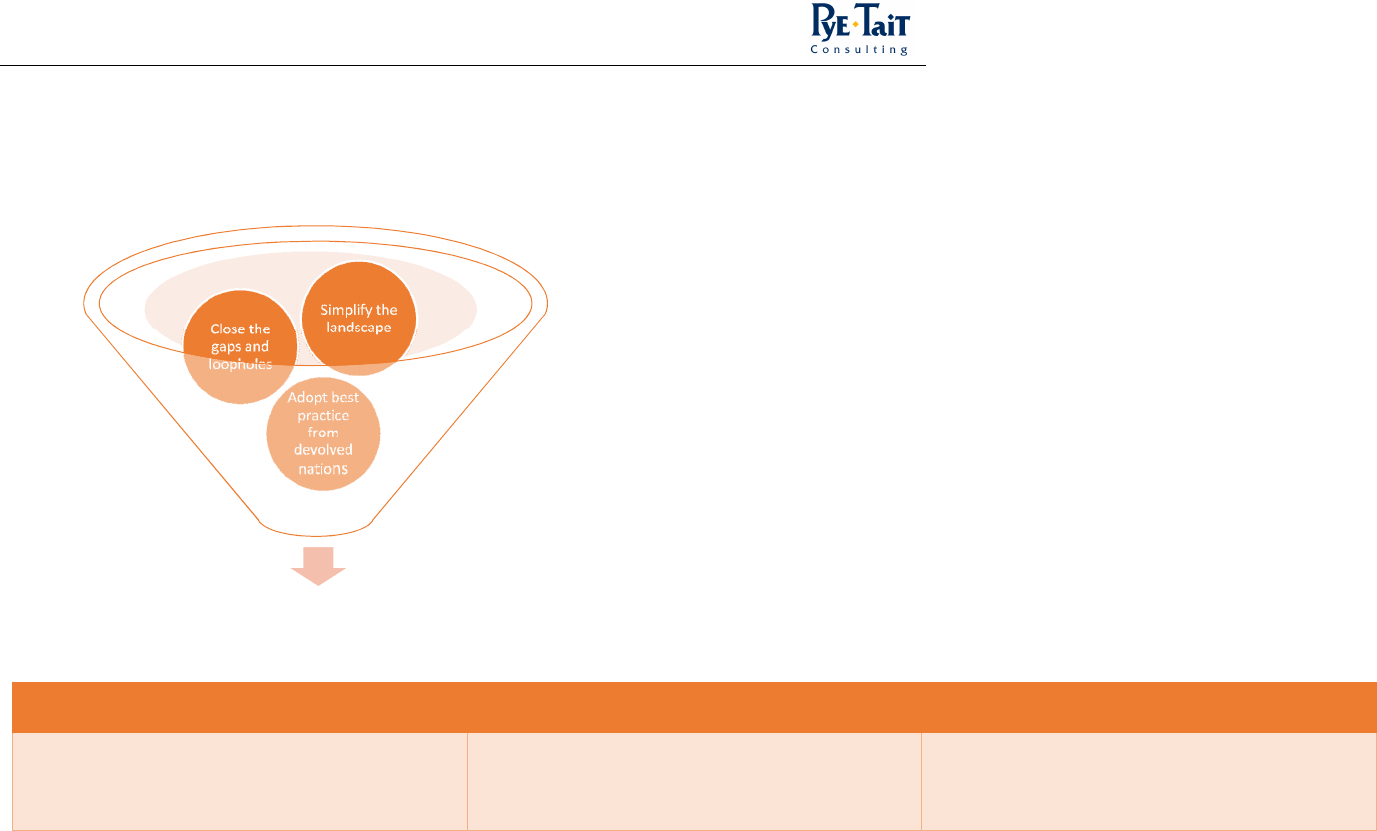
Quality assurance in energy efficiency and low carbon schemes
Page 11 of 136
Research recommendations
Recommendations
for the Citizens Advice Service are presented within
the following categories summarised in Figure 1
, explained in
detail in Table 2
:
Figure 1: S
Figure 1: SFigure 1: S
Figure 1: Summary of core actions required to improve quality assurance and therefore achieve better consumer protection
ummary of core actions required to improve quality assurance and therefore achieve better consumer protection ummary of core actions required to improve quality assurance and therefore achieve better consumer protection
ummary of core actions required to improve quality assurance and therefore achieve better consumer protection
Table 2: Research recommendations
Table 2: Research recommendations Table 2: Research recommendations
Table 2: Research recommendations
Simplify the quality assurance landscape Close the gaps and loopholes in the quality
assurance framework
Learn from best practice of devolved nation
schemes
Advocate for the UK Government to explore
transferring responsibility and accountability of all
energy efficiency related schemes and mechanisms
managed by multiple departments, into one
Advocate for the UK Government to put in place a
risk-driven audit regime including information
sharing of audit results, auditing of quality of
advice/assessment as well as installations, and a
Consider how best practice in the Scottish and Welsh
schemes might be incorporated into Great Britain-
wide initiatives, notably Green Deal, ECO and MCS,
with particular attention given to:
Better consumer protection
Adopt best
practice
from
devolved
nations
Close the
gaps and
loopholes
Simplify the
landscape

Quality assurance in energy efficiency and low carbon schemes
Page 12 of 136
department (likely to be DECC) requirement for longer-term monitoring to identify
problems that may emerge over time
1
- decoupling advice and assessment from
recommendation of measures
- improving information given to consumers
about guarantees and warranties
- improving aftercare and incorporating longer-
term monitoring (for example technical
inspections take place a year after the work was
completed for Arbed 2)
Advocate for UK and national Governments the
creation of one
2
energy efficiency and low carbon
framework that integrates quality assurance with
technical operating standards, and includes a
process for customers to make complaints and seek
redress. This could include guidance for certification
bodies in setting and enforcing quality standards,
dealing with non-compliance of assessors and
installers, a requirement for insurance-backed
guarantees
3
and for consumers to receive
independent financial advice for applicable schemes
such as the Green Deal
Consider how the PAS 2030 could be strengthened
as the main technical standard for energy efficiency
work. This is likely to require clearer wording to
reduce the scope for ambiguity and inconsistent
interpretation, plus stronger consumer protection
through reference to high quality product warranties
and insurance-backed guarantees (see below)
The Financial Conduct Authority (FCA) should set one
core standard for robust high quality guarantees and
warranties for energy efficiency and low carbon
work
Increasing the sample size for audit/inspection to
100% as it is for the Welsh schemes, may be too cost
prohibitive, and may require further research to
identify potential funding streams
Advocate for The UK Government to create a single
Ombudsman to cover energy efficiency and low
carbon, considering how this would fit in with the
wider redress landscape
4
Advocate for the UK Government to incorporate
stronger consumer protection into ECO, notably
offering some form of redress for consumers where
sub-standard work is carried out. For future
schemes, this should be extended to the Scottish
Government designing schemes in Scotland
A regular programme of mystery shopping across all
schemes in scope of this research, focusing
particularly on the advice and assessment
component which at present is under-represented at
audit in England schemes but is more
comprehensively addressed in the devolved nations
Develop a guidance document and checklist for Advocate for assessors and installers to require on-
1
Determining the most appropriate time frame for longer-term monitoring may require further specialist technical input
2
Further discussion/research may be required to consider whether this should be Great Britain-wide or whether there should be one framework per nation
3
This is already being addressed for MCS
4
Further discussion may be required to consider whether this should be Great Britain-wide or whether there should be one organisation per nation

Quality assurance in energy efficiency and low carbon schemes
Page 13 of 136
consumers that will help identify potential problems
with assessment and installation processes, including
aspects to look for such as Quality Mark ‘badges’
going CPD and for minimum entry criteria and a
minimum number of Guided Learning Hours (GLH),
in order to drive up quality of training provision

Quality assurance in energy efficiency and low carbon schemes
1.Introduction
1.1 Background to the research
Research context
The international climate change treaty ratified in Kyoto in 1997 has been a catalyst for UK
Government strategy to reduce carbon emissions and increase energy efficiency. Core objectives
were established in 2009 to reduce the level of carbon emissions from a 1990 base by at least 22
per cent by 2012, 33 per cent by 2020 and 80 per cent by 2050
5
.
Governments across the UK are driving the agenda through a mix of legislation and incentivised
schemes to encourage home owners to insulate and reduce their energy footprint – mainly
through more efficient heating systems and replacing some electricity usage with home-produced
electricity from solar PV/wind.
T
he Energy Act 201
1 provided for the launch
of
the Green Dea
l,
which alongside the Energy
Company Obligation, formed the Coalition Government’s new approach for improving the energy
efficiency of households and non-domestic properties in Great Britain.
The role of
the
Citizens Advice
The Citizens Advice service provides free, confidential and impartial advice to help people resolve
their problems. The Citizens Advice service represents the interests of consumers across the
essential regulated industries, including energy, using robust evidence in order to influence critical
policy decisions and interventions to support changes where necessary. Citizens Advice Scotland,
with a 61 member bureaux and consumer helpline together form Scotland’s largest independent
advice network. Citizens Advice Scotland supports consumers to solve problems and campaigns
for change where this is needed.
A need for better understanding of the quality ass
urance framework in energy efficiency
Installing energy efficiency measures in domestic homes can help consumers reduce their energy
consumption and save money on their energy bills. Improving energy efficiency of the housing
stock is also crucial to combatting fuel poverty and achieving carbon emission reduction targets.
However if the energy efficiency measures are not appropriate for the home, or are not installed
correctly, the end result can be long-term problems for the consumer, as well as failing to deliver
anticipated cost or energy savings. If such issues persist, they contribute to a general lack of trust
among consumers, which can undermine the market and the aims of government policy in this
area.
5
HM Government (2011) The Carbon Plan: Delivering our low carbon future
https://www.gov.uk/government/uploads/system/uploads/attachment_data/file/47613/3702-the-carbon-plan-delivering-
our-low-carbon-future.pdf Devolved nations set their own targets

Quality assurance in energy efficiency and low carbon schemes
Page 15 of 136
This
research
has been prompted by the com
plexity of the quality assurance landscape across
Government energy efficiency and low carbon schemes. The Citizens Advice Service has concerns
that the range of quality marks, approaches to certification, organisations, warranties and
standards are difficult for consumers and businesses to understand and navigate. The Citizens
Advice Service is also aware of concerns in some parts of the market that the quality assurance
landscape may not be delivering high quality assessments and installation.
1.2 Research objectives
The
Citizens Advice
Service
is seeking evidence of what does, and what does not, work in terms of
quality assurance in the domestic energy efficiency market. The main objective of this research is
to gain an understanding of the strengths and weaknesses of the wider landscape and
infrastructure specific to quality assurance underpinning consumer protection
6
. As feedback to
date has been predominantly anecdotal, a robust evidence base is now required in order to gain a
full and comprehensive understanding of the issues.
This translates into
three
core objectives:
1. To map the domestic energy efficiency and low carbon market, key schemes and
initiatives including the organisations involved, their roles and systems in place for
consumer protection in terms of quality assurance frameworks and processes to ensure
their full implementation;
2. to identify issues and problems within the energy efficiency and low carbon market in the
context of quality assurance frameworks and the delivery of quality; and
3. to provide recommendations for best practice in quality assurance based on the
assessment and gap analysis of strengths and weakness of the current market and quality
assurance frameworks.
1.3 Methodology
1.3.1
1.3.1 1.3.1
1.3.1
Definition of
Definition ofDefinition of
Definition of
quality assurance
quality assurancequality assurance
quality assurance
in t
in tin t
in t
his context
his contexthis context
his context
For the purpose of this research,
the Citizens Advice Service defines quality assurance
as:
Appropriate standards, processes and organisations that are in place to minimise the risk to the
consumer of sub-standard energy efficiency and low carbon assessments or installations that
results in some form of detriment – for example personal distress, harm or financial loss.
6
Additionally the Citizens Advice Service has commissioned a review of the adequacy of energy advice and redress

Quality assurance in energy efficiency and low carbon schemes
Page 16 of 136
1.3.2
1.3.21.3.2
1.3.2
Summary of research methodology
Summary of research methodology Summary of research methodology
Summary of research methodology
The research sought to capture
the knowledge and understanding of individuals an
d organisations
currently operating in the market and have knowledge of the technical issues related to quality of
installation and how the current framework of standards are working - or not working - in
practice.
This research has predominantly used a qualitative approach, combining secondary data collated
and assessed through desk-based research, with primary data gathered through an online call for
evidence and in-depth telephone interviews. Given this broadly qualitative approach, there was
no expectation of a comprehensive and statistically representative sample of the population;
however the evidence gathered via this approach enabled the research to obtain a wide-ranging
reflection of key market participants in relation to their role, size, geographic and technology
coverage, and involvement in different Government energy efficiency and low carbon schemes.
Desk
-
based researc
h has mapped the organisations and quality assurance functions associated
with the domestic energy efficiency and low carbon market, as well as identifying a number of key
research questions about potential issues in the landscape. Analysis of the secondary data was
used to design a comprehensive call for evidence document, which sought responses from:
• Energy efficiency installers and assessors
• Green Deal accredited installers, assessors and providers
• energy supply companies particularly those obligated under the Energy Company
Obligation (ECO)
• energy efficiency certification bodies
• manufacturers or guarantee/warranty providers of energy efficiency schemes or measures
• Government bodies and local authorities
• professional, trade and employer representative bodies and
• consumer protection bodies
The
call for e
vidence was launched online on 17
th
December 2014, and ran for 6 weeks u
ntil 28
th
January 2015. The call for evidence enabled information to be gathered from a wide range of
stakeholders in the most timely and cost-efficient way, and provided insight into the range and
type of issues occurring in the market.
Building upon this evidence base, in-depth, targeted telephone interviews were used to explore
emerging issues in greater depth, including what actions might be taken to simplify or improve the
landscape of quality assurance.
1.3.3
1.3.31.3.3
1.3.3
Profile of research respondents
Profile of research respondentsProfile of research respondents
Profile of research respondents
Th
e call for e
vidence received a total of 58 responses, of which just over 60 per cent represented
individual, personal views, with the remainder being official responses representing an

Quality assurance in energy efficiency and low carbon schemes
Page 17 of 136
organisation (
Figure
2
).
Figure
Figure Figure
Figure
2
22
2
: Respondents
: Respondents: Respondents
: Respondents
to the Call for Eviden
to the Call for Evidento the Call for Eviden
to the Call for Eviden
ce, by type of response
ce, by type of response ce, by type of response
ce, by type of response
Base 58
The majority of respondents (78.9 per cent) are based in England, with the remainder in Scotland
(8.8 per cent) and Wales (12.3 per cent) (Figure 3).
Figure
FigureFigure
Figure
3
33
3
:
::
:
Respondents to the Call for Evidence, by nation
Respondents to the Call for Evidence, by nation Respondents to the Call for Evidence, by nation
Respondents to the Call for Evidence, by nation
Base 57
The majority of responses were submitted by energy efficiency installers and
assessors (Figure
4
).
Respondents predominantly represented energy efficiency rather than low carbon (20 per cent of
respondents); however it should be noted that in the interest of having a holistic approach the
latter was included in scope, the main emphasis of the research was intended to be on energy
efficiency.
23
35
Official response Personal view
45
5
8
England Scotland Wales
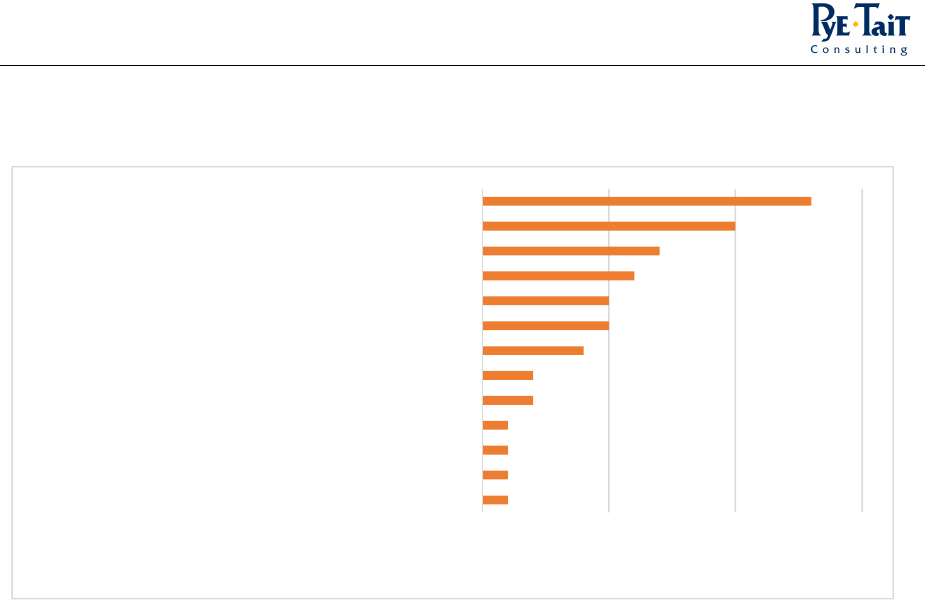
Quality assurance in energy efficiency and low carbon schemes
Page 18 of 136
Figure
Figure Figure
Figure 4
44
4:
::
:
Respondents to the Call for Evidence, by categories that best describe them
Respondents to the Call for Evidence, by categories that best describe them Respondents to the Call for Evidence, by categories that best describe them
Respondents to the Call for Evidence, by categories that best describe them
Base 58
It should be noted that the energy supplier organisations targeted were those that are obligated
i.e. undertaking work under the Energy Company Obligation (ECO).
Telephone depth interviews were undertaken with a sample of
21
respondents able to comment
about schemes in England, Scotland and Wales, from the following respondent categories based
on criteria as stated in Table 3 below.
1
1
1
1
2
2
4
5
5
6
7
10
13
0 5 10 15
Work for energy efficiency certification body
Work for energy supplier organisation
Work in field of quality assurance in energy efficiency
Work for trade or employer representative body in the energy sector
Customer - had energy efficiency measures assessed and installed
Guarantee/warranty provider
Work for a professional organisation in the energy sector
Green Deal accredited installer
Work for a Green Deal provider
Manufacturer of energy efficiency products
Green Deal accredited assessor
Energy efficiency assessor
Installer of energy efficiency measures
Number of respondents
Categories that best describe respondent

Quality assurance in energy efficiency and low carbon schemes
Page 19 of 136
Table
Table Table
Table
3
33
3
: Respondents to the in
: Respondents to the in: Respondents to the in
: Respondents to the in
-
--
-
depth telephone interviews
depth telephone interviewsdepth telephone interviews
depth telephone interviews
Respondent category
7
Selection criteria
Number of
interviews
Installer of energy efficiency
measures
One organisation represented a wider network of
installers and was thus able to present a broader
perspective
Other respondents were selected to probe for
additional detail about the range of key emerging
themes
4
Energy efficiency assessor To probe for additional detail about the range of key
emerging themes
3
Energy supplier organisation Obligated suppliers selected to prove for additional
detail about ECO and audit emerging themes
2
Certification body To gain more detail/clarity about issues relating to
certification body roles
2
Guarantee/warranty provider To seek additional detail about emerging themes on
guarantees and warranties
2
Professional organisation in the
energy sector
To gain additional input and clarification about
emerging themes
3
Providers/managers of energy
efficiency schemes in scope of
the research
To probe for further detail in relation to quality
assurance for specific schemes
5
TOTAL 21
1.4 Report structure
As the infras
tructure of the domestic energy efficiency
and low carbon
market is so complex, with
a wide range of organisations and schemes/initiatives, this report begins with a description of the
current landscape, and how it fits together, in Chapter Two.
Chapter Three then presents the research findings in relation to what is working well, and the
shortcomings of the quality assurance framework, as well as aspects that respondents consider
need to change or be improved.
Chapter Four presents the research conclusions and recommendations.
7
Please note, a number of individuals were contacted to take part in a telephone interview that had not previously
responded to the call for evidence, to seek additional detail/clarity that could not be obtained from the respondents to the
online call for evidence
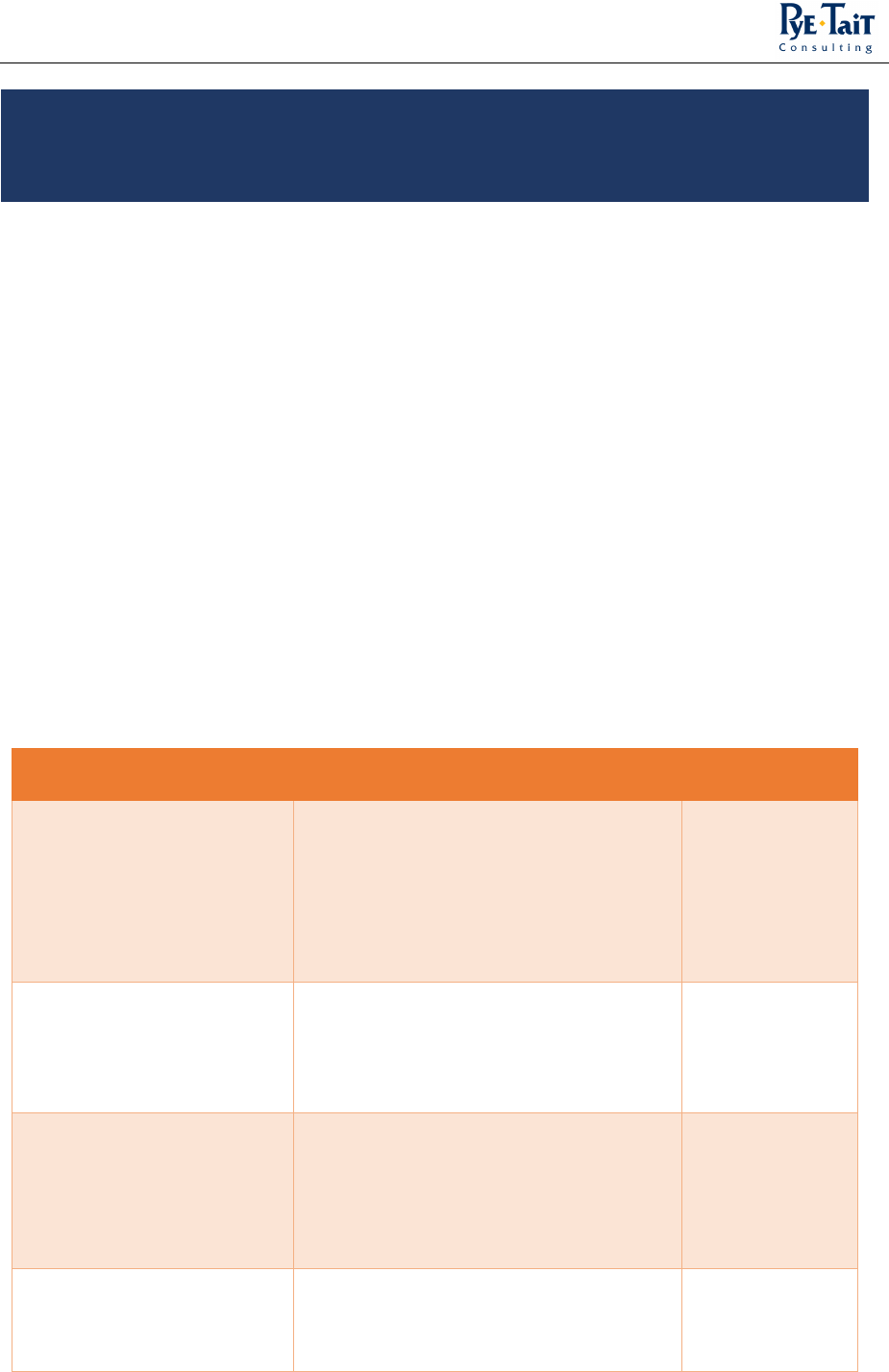
Quality assurance in energy efficiency and low carbon schemes
Page 20 of 136
2.Thecurrentlandscape ofdomesticenergyefficiencyand
lowcarbon
2.1 Introduction
This chapter presents a summary of the
main
Government schemes and initiatives within the
domestic energy market, including the organisations responsible for their management and
quality assurance processes and procedures. An overview of these is provided in Table 4 below.
This is supplemented by information about other mechanisms that should help to underpin
quality assurance and consumer protection for domestic energy efficiency assessments and
installations. Mostly these explicitly relate to energy efficiency measures and products, however
other generic consumer protections are also described, as these may play a role in assuring
quality.
A summary of how these different schemes and quality assurance mechanisms operate as a whole
in the domestic market is presented at the end of this chapter.
Table 4
Table 4Table 4
Table 4
: Overview of the main Government domestic energy efficiency and low carbon
: Overview of the main Government domestic energy efficiency and low carbon: Overview of the main Government domestic energy efficiency and low carbon
: Overview of the main Government domestic energy efficiency and low carbon
schemes in
schemes in schemes in
schemes in
England, Scotland and Wales
England, Scotland and Wales England, Scotland and Wales
England, Scotland and Wales
Scheme name
Scheme description
Geographical
coverage
Green Deal
A financing
mechanism
enabling a
range
of energy efficiency measures to be
installed in domestic homes and
businesses at no upfront cost. Finance is
paid back through anticipated savings on
fuel bills resulting from their installation.
England, Scotland
and Wales
Energy Company Obligation
(ECO)
Government scheme which
obligates
larger energy suppliers to deliver energy
efficiency measures to domestic premises
in Great Britain.
England, Scotland
and Wales
Microgeneration Certification
Scheme (MCS)
Industry
-
led quality assurance scheme
that certifies microgeneration products
and installation companies against a set of
installer standards and product scheme
requirements.
England, Scotland
and Wales
Home Energy Efficiency
Programmes for Scotland
(HEEPS)
A
Scottish Government initiative with an
objective to tackle fuel poverty and
increase energy efficiency in homes.
HEEPS is a cluster of programmes. The
Scotland

Quality assurance in energy efficiency and low carbon schemes
Page 21 of 136
focus in this report is on the Area
-
Based
Schemes. Under these, local authorities
fund the installation of energy efficiency
technologies and measures for households
in their local area.
Arbed
A
Welsh Government
programme that
undertakes retrofit area-based schemes
across Wales, with an objective to
improve energy efficiency in homes,
reduce fuel bills and contribute to the
alleviation of fuel poverty.
Wales
Nest
A
Welsh Government
demand
-
led fuel
poverty scheme, aimed at helping to
reduce the number of households in fuel
poverty and make Welsh homes warmer
and more energy-efficient.
Wales
2.2 Relevant energy efficiency and low carbon schemes and initiatives and their quality
assurance mechanisms
2.2.1 Green Deal
2.2.1 Green Deal2.2.1 Green Deal
2.2.1 Green Deal
The Green D
eal, launched in January 2013,
establish
ed
a new financial mechanism to permit a
range of measures, such as insulation, heating or lighting, to be installed in people’s homes and
businesses at no upfront cost. Householders are able to obtain finance to fund appropriate energy
efficiency measures through the Green Deal, paid back through the anticipated savings on fuel
bills resulting from their installation. Actual cash savings cannot be guaranteed, since only building
users are able to control how much energy they actually consume.
Properties
are only
eligible for the Green Deal if they meet t
he
Golden Rule
–
financial savings
must be equal to or greater than the cost of repayment over the term of the Green Deal Plan.
The Green Deal p
rocess is summ
arised in Figure 5
below:
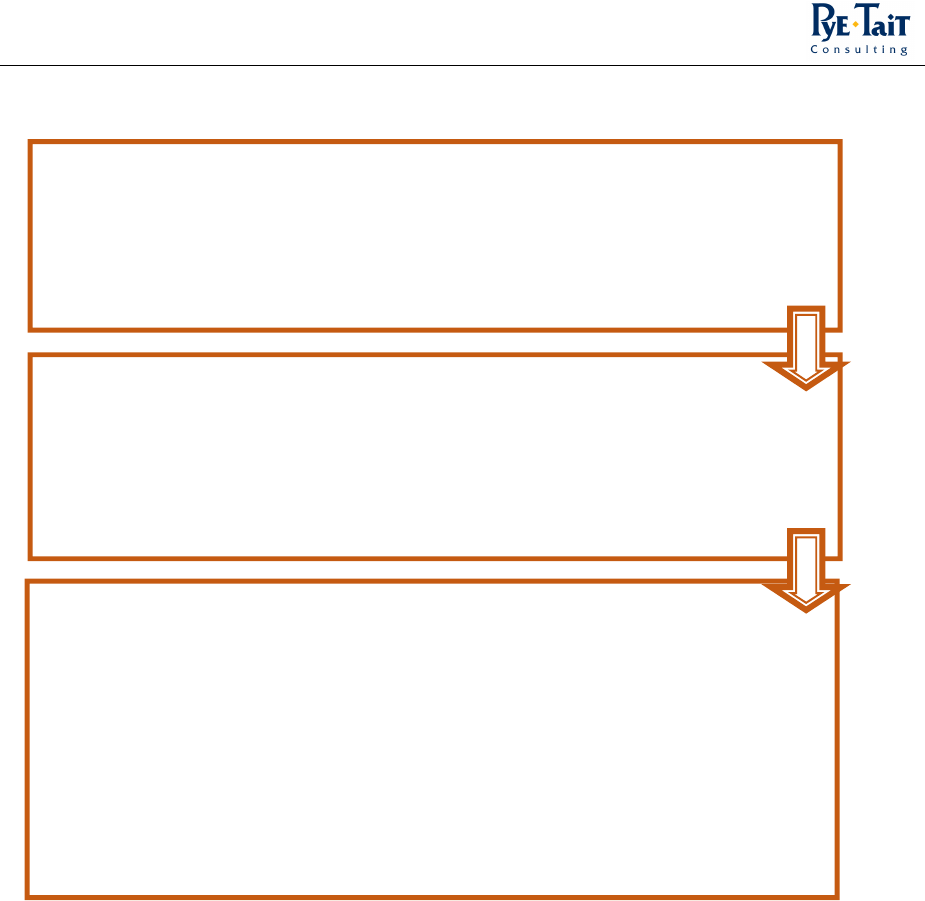
Quality assurance in energy efficiency and low carbon schemes
Page 22 of 136
Figure 5
Figure 5Figure 5
Figure 5
: Green
: Green: Green
: Green
Deal process
Deal processDeal process
Deal process
A wide range of organisations are involved in the delivery of the Green Deal. These organisations
are shown as a hierarchical structure in Figure 6. The remit of each of these organisations is
explained in Table 5, which also includes a summary of the functions that are in place in relation
to quality assurance and consumer protection. Table 6 then explains the quality assurance
framework for Green Deal in more detail.
Assessment
Green Deal Advisor visits a property to assess the buildings energy efficiency and talks to
occupier about their energy use to assess potential for energy efficiency improvements. Makes
recommendations appropriate to the property and produces a Green Deal Advice Report
(GDAR) (in two parts based on EPC and occupancy assessment). Lodges GDAR on central
register within 2 weeks of the assessment.
Information
GDAR outlines whether improvements are expected to pay for themselves through savings on
energy bills. Quotations include savings estimates, timescales, first year instalments and
payback periods for each suggested energy efficiency measure. Following the assessment
consumers can choose whether they want to install the recommended measures and whether
to use Green Deal finance or another route such as savings or a personal loan, and the company
to do the work.
Plan
Consumers must obtain consent where necessary to make improvements to the property before
agreeing terms of a Green Deal Plan, at which point they enter a cooling-off period. There are
three stages to a Green Deal Plan:
1. New Green Deal Plan – consumer has obtained a quote and confirmed they wish
to proceed
2. Pending Green Deal Plan – signed by the consumer and progress made to start
installation of measures, with finalisation of the Plan required before charges made
3. Live Green Deal Plan – measures have been installed, charges confirmed and energy
supplier has information to issue charges, confirmed by letter to consumer
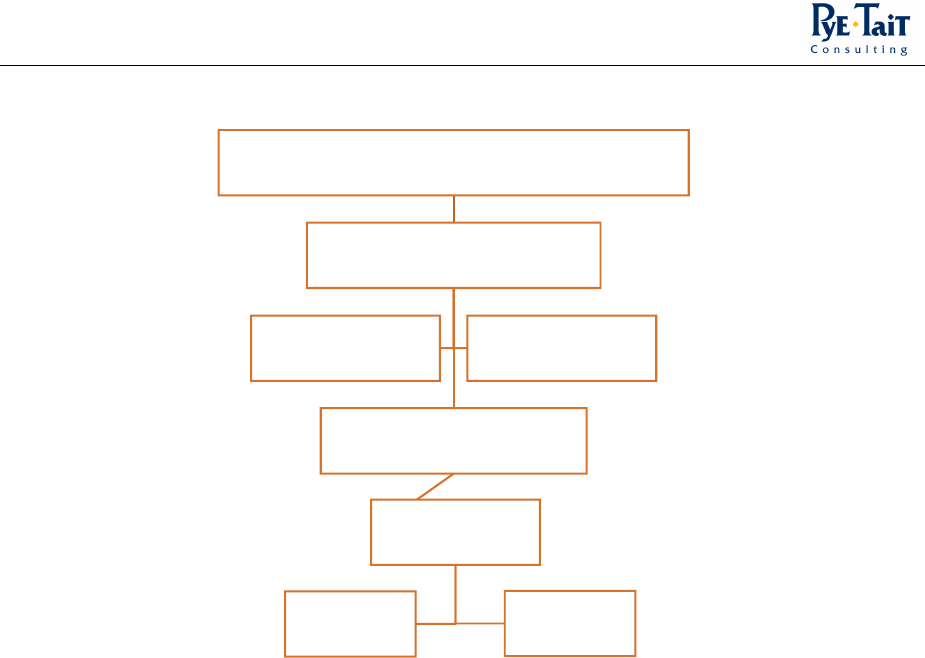
Quality assurance in energy efficiency and low carbon schemes
Page 23 of 136
Figure 6
Figure 6Figure 6
Figure 6
:
::
:
Hierarchy of Green Deal organisations
Hierarchy of Green Deal organisationsHierarchy of Green Deal organisations
Hierarchy of Green Deal organisations
Secretary of State for Energy and Climate Change
Green Deal Oversight and
Registration Body
Green Deal certification
bodies
Green Deal
Providers
Green Deal
installers
Green Deal
advisors
UK Accreditation
Service (UKAS)
Ombudsman
Services

Quality assurance in energy efficiency and low carbon schemes
Page 24 of 136
Table
Table Table
Table 5
55
5: Green Deal organi
: Green Deal organi: Green Deal organi
: Green Deal organisations, their functions and role in the quality a
sations, their functions and role in the quality asations, their functions and role in the quality a
sations, their functions and role in the quality assurance framework
ssurance frameworkssurance framework
ssurance framework
Organisation
Role and responsibility
Department for Energy and
Climate Change (DECC)
8
9
10
•
Issues the Green Deal Code of Practice
• Sets out the standards for Green Deal installations
• Imposes sanctions on offending participants and certification
bodies
Green Deal Oversight and
Registration Body (GD ORB)
11
12
•
Manages and monitors:
audits of certification bodies
participants’ performance and compliance with the Code
of Practice, and gathers evidence of any non-compliance
an independent appeals process to respond to breaches
of the Green Deal Code of Practice
the use of the Green Deal
• Additional roles:
advises Department for Energy and Climate Change, or
the Ombudsman, on the Green Deal Code of Practice and
on actions to strike-off offending accreditation schemes,
certification bodies and individual participants where
appropriate
ensures UK Accreditation Service (UKAS) and certification
bodies operate clear monitoring strategies
controls the use of the Green Deal Quality Mark
maintains a register of accredited Green Deal providers,
installers and assessors
produces an annual Green Deal report
imposes sanctions on participants when necessary
UK Accreditation Service
(UKAS)
13
•
Accredits Green Deal certification bodies to deliver
Government developed and authorised certification schemes
Renewable Energy
Assurance Limited (REAL)
14
•
Sub-contracted by Gemserv Ltd to monitor the Green Deal
8
Department of Energy and Climate Change (23 June 2014) Green Deal Code of Practice (version 4)
9
https://www.gov.uk/government/uploads/system/uploads/attachment_data/file/66666/3745-role-green-deal-oversight-body.pdf
Accessed: 21/11/14
10
Department of Energy & Climate Change (November 2012) Government response to: ‘Home insulation: a report on the call for evidence
to be carried out by the OFT’’
11
Department of Energy and Climate Change (23 June 2014) Green Deal Code of Practice. (version 4)
12
https://www.gov.uk/government/uploads/system/uploads/attachment_data/file/66666/3745-role-green-deal-oversight-body.pdf
Accessed: 21/11/14
13
http://www.aphc.co.uk/certification_schemes.asp Accessed: 24/11/14
14
Renewable Energy Assurance Limited. About Us. www.renewableenergyassurance.org.uk/about [latest access: 01/04/2015]

Quality assurance in energy efficiency and low carbon schemes
Page 25 of 136
Code of Practice
Ombudsman services
15
•
Where a Green Deal Plan is in place:
Has a remit to resolve complaints (of up to 6 years in the
past) from consumers if a Green Deal provider is
unwilling or unable to provide assistance in the case of
something going wrong with a Green Deal Plan
Green Deal participants
and certification bodies
16
•
Ensure the competence of staff, agents, contractors or
subcontractors to work in line with the Green Deal Code of
Practice and Publically Available Specification (PAS 2030):
on-site visits are carried out to audit the installation
service delivery (minimum of 1 per cent per annum, or a
minimum of 1)
check training and qualification records of employees and
sub-contractors to ensure they meet PAS 2030
check with Green Deal providers that the installer meets
consumer service and other requirements stipulated by
the Green Deal Code of Practice
check that installers operate a complaints procedure and
procedures to offer the correct responses to consumers.
• Required to:
be accredited by the UK Accreditation Service (UKAS)
(certification bodies only)
make available a copy of the Green Deal Code of Practice
to any person upon request
co-operate with relevant ombudsman services
investigating complaints, information requested as part of
a redress on behalf of a Green Deal consumer
inform the Green Deal Oversight and Registration Body if
in receipt of a sanction by the Secretary of State for
Energy and Climate Change
• Are permitted to use the Green Deal Quality Mark on any
documentation or marketing materials pertaining to the
Green Deal
Green Deal assessors and
assessor organisations
17
•
Ensures Green Deal advisors comply with the Green Deal
15
http://www.ombudsman-services.org/green-deal.html Accessed: 21/11/14
16
Department of Energy and Climate Change (23 June 2014) Green Deal Code of Practice. (version 4)
17
https://www.gov.uk/green-deal-energy-saving-measures

Quality assurance in energy efficiency and low carbon schemes
Page 26 of 136
Code of Practice
• Lodges Green Deal assessments in the Landmark Register
• Required to:
meet and comply with the Green Deal Code of Practice
make it clear whether they are authorised for domestic,
non-domestic, or both types of property assessment
Green Deal providers
18
19
•
Provide consumers with a Green Deal plan based upon
recommendations from an accredited assessor organisation.
• Pay for installation costs of products and systems under the
Green Deal via a loan (providers recoup this money from
energy suppliers who add the charges to the consumer’s
electricity bill)
• Arrange for the installation of the agreed products and
systems through an authorised Green Deal installer
• Provide Green Deal specifications to the installer
• Equip installers with handover instructions
• Maintains a contractual relationship with the consumer
• Ensures all work
20
:
is notifiable under the Building Regulations 2010, or must
hold a building warrant prior to work being undertaken
(Scotland only)
receives necessary building control approval i.e.
completion certificate from a Local Authority
receives a final certificate from an approved instructor or
a compliance certificate if work was self-certified under
an Authorised Competent Person Scheme
Required to sign-up to the Ombudsman Service Scheme
21
.
Green Deal installers
22
•
Install one or more energy efficiency improvements financed
by the Green Deal
• Required to meet and comply with:
Publicly Available Specification (PAS 2030) – competence
demonstrated through achieving relevant Qualifications
18
BSI (2012) PAS2030:2012 Edition 2: Improving the energy efficiency of existing buildings. Specification for installation process, process
management and service provision.
19
https://www.gov.uk/government/uploads/system/uploads/attachment_data/file/66666/3745-role-green-deal-oversight-body.pdf
Accessed: 21/11/14
20
Department of Energy & Climate Change (June 2014) Green Deal Code of practice (Version 4)
21
http://www.ombudsman-services.org/green-deal.html Accessed: 21/11/14
22
BSI (2012) PAS2030:2012 Edition 2: Improving the energy efficiency of existing buildings. Specification for installation process, process
management and service provision.

Quality assurance in energy efficiency and low carbon schemes
Page 27 of 136
and Credit Framework (QCF) qualifications or gaining
membership to a Competent Person Scheme (CPS)
23
Green Deal Code of Practice
UKAS Accreditation Body certification
Building Regulations
monitoring of installation work if so required
• All must be registered under:
Gas Safe Register scheme (if installing gas boilers and
heating systems)
• Required to:
obtain a location-specific design specification for each
energy efficiency product or system, prior to any
installation
produce a method statement detailing the installation
process for product or system installed (within the scope
of PAS 2030
notify its certification body of all installations completed
under the Green Deal within seven days of completion
determine all installation staff possess relevant skills and
competence levels
provide competency and qualification details of all those
who are working on-site during an installation
keep records of all Green Deal installations for a minimum
of 6 years
maintain a complaints handling procedure detailing the
circumstances in which the installer is required to handle
a complaint
enter into a relevant warranty scheme which requires
them to resolve any problems with the product or system
they have installed should they stop working; warranties
such as the NICEIC Insulation Scheme last for up to 25
years
24
provide evidence of correction within 8 weeks of an
unsatisfactory on-site inspection by a certification body,
citing implications of non-correction by 12 weeks from the
date of assessment
23
Lock, T (2013) PAS 2030 Training, Ready for Retrofit. Energy Saving Trust. www.regensw.co.uk/wp-
content/uploads/2014/08/r4r_pas_2030_slides_19_september_2013_300eab15d40f5be4.pdf [latest access: 02/04/2015]
24
NICEIC The NICEIC Insulation Warranty Scheme

Quality assurance in energy efficiency and low carbon schemes
Page 28 of 136
Green Deal advisor
25
•
Employed or contracted by an authorised Green Deal assessor
organisation, remit encompasses a role to:
• Visit properties and using the Standard Assessment
Procedure (SAP), assess a property’s energy performance
• Produce a unique Occupancy Assessment (OA)
• Lodge Green Deal Advice Reports (GDARs)
• All required to:
hold a Green Deal Advisor qualification
adhere to the National Occupational Standards (NOS) on
Green Deal Advice Report writing
26
be registered on the Landmark Registry
B
ritish
S
tandards
Institution (BSI)
27
•
Developed and monitors a Kitemark scheme incorporating the
requirements of the Green Deal Quality Mark and the Energy
Efficient Buildings Kitemark
Table 6
Table 6Table 6
Table 6: Green Deal Quality Assurance framework processes and procedures
: Green Deal Quality Assurance framework processes and procedures: Green Deal Quality Assurance framework processes and procedures
: Green Deal Quality Assurance framework processes and procedures
Process and/or procedure
Function
Green Deal Code of
Practice
Sets out requirements to be me
t by Green Deal participants and
Certification Bodies, aiming to ensure all deliver good consumer
service, provide appropriate training, and maintain suitable redress
mechanisms.
The Code is designed to ensure that consumers
28
:
• receive a standardised level of service
• are not subject to unfair or misleading selling practices
Publically Available
Specification (PAS) 2030
The standard for all Green Deal Installers and applies to the
installation, management and provision of energy efficiency and
low carbon products and systems in existing buildings.
Other documents that support the application of PAS 2030
include
29
:
• PAS 2031 (see below)
25
https://www.gov.uk/green-deal-energy-saving-measures
26
https://www.gov.uk/green-deal-energy-saving-measures
27
http://www.bsigroup.co.uk/en-GB/the-green-deal/Energy-Efficient-Buildings-Kitemark/ Accessed: 3/12/14
28
Department of Energy and Climate Change (2010) The Green Deal: A Summary of the Government’s proposals
29
BSI (2012) PAS2030:2012 Edition 2: Improving the energy efficiency of existing buildings. Specification for installation process, process
management and service provision

Quality assurance in energy efficiency and low carbon schemes
Page 29 of 136
•
British Standards
• Institution of Gas Engineers and Managers’ Standards
• Energy Networks Association Engineering Recommendations
• UK LPG (trade association for the liquefied petroleum gas
industry in the UK) Code of Practice 22
• Department of Communities and Local Government Domestic
Building Services Compliance Guide
• Construction Industry Training Board (CITB) 01 General
Requirements and Guidance for the Installation of Loft
Insulation
• Common Minimum Technical Competencies Annexes
Publically Available
Specification (PAS)
2031:2015
30
31
Introduced by the Department for Energy and Climate Change in
January 2015, and superseding PAS 2031:2012, the standards set
out the certification system by which all Green Deal Certification
Bodies must assess Green Deal installers’ compliance with PAS
2030 in the installation, management and provision of energy
efficiency measures and systems.
The standards are solely to be used in association with PAS 2030.
Green Deal installer
scheme
32
33
34
Installers are required to become Green Deal approved and to
achieve certification from a UKAS accredited certification body
before they can operate as a Green Deal installer and use the
Green Deal Quality Mark. This certification is based upon
evaluating the installer against the criteria laid down in their
chosen certification scheme, including the core PAS 2030
requirements for the energy efficiency measure they wish to
install.
The evaluation may include assessments based upon company
procedures and on-site assessments of work. As part of the
certification scheme, installers are also required to register with
the Oversight and Registration Body.
Com
petent Person
Scheme permitting approved individuals and enterprises to self
-
30
BSI (2015) PAS 2031: 2015 Certification of energy efficiency measure (EEM) installation services: Overview.
www.shop.bsigroup.com/ProductDetail/?pid=000000000030300356 [first accessed: 01/04/2015]
31
BSI (2013) PAS 2030 and PAS 2031 The Green Deal. www.bsigroup.co.uk/Documents/standards/case-studies/BSI-working-with-
government-PAS-2030-PAS-2031-The-Green-Deal-case-study-UK-EN.pdf [first accessed: 01/04/2015]
32
Kent County Council (2013) Become a Green Deal Installer
33
http://www.aphc.co.uk/certification_schemes.asp Accessed: 24/11/14
34
Department of Energy & Climate Change (2013) Becoming an authorised Green Deal organisation. www.gov.uk/becoming-an-
authorised-green-deal-organisation [first accessed: 01/04/2015]

Quality assurance in energy efficiency and low carbon schemes
Page 30 of 136
Scheme
35
36
certify that their work is compliant with the Building Regulations.
Registered individuals will:
• be required to comply with all aspects of the Building
Regulations
• host inspections against the technical requirements of Building
Regulations (a minimum of one on-site inspection of a
member’s work up to every three years, subject to track
record, and installers may be registered with different
certification bodies/scheme operators, but it is unclear
whether this element is incorporated within certification
bodies’ technical audits)
• maintain an up-to-date complaints procedure
• receive notification of any work that falls below Building
Regulations
Minimum Technical Competency describes the minimum
knowledge, practical skills and levels of experience required by an
individual or enterprise to operate under a Competence Person
Scheme. Green Deal Installers are required to demonstrate that
they meet the relevant Minimum Technical Competencies to their
certification body to remain in a Competent Person Scheme. This
may include:
• a written test
• workplace observation by a certification body Assessor
• questions about a range of different topics
Those registered on a Competent Person Scheme will be in
possession of a Minimum Technical Competency Card.
The Scheme is also applicable for the Microgeneration Certification
Scheme (MCS) and ECO.
Green Deal Quality Mark
37
Established to identify authorised Green Deal participants and to
protect consumers from rogue traders claiming to offer Green Deal
services without the appropriate authorisation.
The Quality Mark is to be used on all participants’ Green Deal
documentation and marketing material. It is governed by a Code
35
http://www.besca.org.uk/Schemes/CPS Accessed: 27/11/14
36
Department of Communities and Local Government (2012) Building Regulations: Competent Person Self-Certification Scheme –
Conditions of Authorisation From 6 June 2012
37
Department of Energy & Climate Change (2010) The Green Deal: A summary of the Government’s proposals

Quality assurance in energy efficiency and low carbon schemes
Page 31 of 136
of Practice which s
ets out the requirements for using the Quality
Mark; all participants must:
• include their registration number when displaying the Quality
Mark so consumers may check their credentials
• clearly present the scope of activities they are authorised to
conduct under the Quality Mark
• display the sentence: “Authorised for measures listed on…”
and include the website on which their authorised measures
are listed (if they are registered for multiple measures)
Consumer contract
38
This is a requirement under general c
onsumer law. Either a verbal
or written contract of work must be established between a Green
Deal Provider and the consumer, based on an offer and acceptance
of work to be carried out on a property. If a Green Deal Provider
breaks this contract, the consumer has the right to take action.
Green Deal complaints and
sanctions system
39
40
41
Green Deal providers are responsible for dealing with consumer
complaints. If a consumer is unsatisfied with the response to their
concern, they may take their unresolved complaint to the relevant
certification body. In the event a consumer is not able to register a
complaint or if their issue has not been resolved to their
satisfaction, the Ombudsman service will be involved, if the
complaint is in scope.
The Secretary of State for Energy and Climate Change has the
power to impose sanctions on accreditation schemes, certification
bodies and individual Green Deal participants in response to
breaches to the Green Deal Code of Practice.
This includes breaches of:
• consent provision
• disclosure and acknowledgement provisions
• relevant requirements by Green Deal Providers and installers
Other reasons to impose sanctions include:
• a failure to take a consumer credit modifying step after
cancellation
38
http://www.adviceguide.org.uk/england/consumer_e/consumer_protection_for_the_consumer_e/consumer_contracts_e.htm
Accessed: 1/12/14
39
The Statutory Office (2012) Energy Conservation: The Green Deal Framework (Disclosure, Acknowledgement, Redress etc.) Regulations
2012: Draft Statutory instruments
40
Ombudsman Services. The Green Deal. www.ombudsman-services.org/green-deal.html [latest access: 01/04/2015]
41
The Statutory Office (2012) Energy Conservation: The Green Deal Framework (Disclosure, Acknowledgement, Redress etc.) Regulations
2012: Draft Statutory instruments

Quality assurance in energy efficiency and low carbon schemes
Page 32 of 136
The Secretary of State must take receipt of a complaint or
information pertaining to a breach of the Code of Practice before
issuing a sanction. Normally the Secretary of State would be
advised of the case by the Green Deal ORB. Sanctions can lead to
the withdrawal of a Green Deal Provider’s authorisation if they are
deemed to be no longer fit to offer this service.
Green Deal Guarantee
In accordance with the Green Deal Code of Practice, the Green
Deal Guarantee is designed to ensure that Green Deal participants
enter into an insurance contact which is beneficial to both the
consumer and the Provider.
The insurance is required to:
• be valid for the lifetime of the Guarantee
• be protected by the Financial Services Compensation Scheme
• ensure all problems which affect the functioning of an
improvement relating to the installation, materials or design
are rectified free of charge
• permit the consumer and Green Deal Provider to access the
Financial Ombudsman Service
• ensure that all terms of the guarantee are fulfilled in the event
that the Green Deal Provider does not comply with the
Ombudsman service, a compliance notice or is insolvent
42
Green Deal Warranty
43
All Green Deal Providers are required to include a minimum five
year warranty on all products and services installed with Green
Deal funding, and 10 year warranty cover for all consequential
building damage, under the Green Deal Code of Practice.
Exceptions include: solid wall insulation and cavity wall insulation –
all require a minimum of 25 years warranty cover.
Green Deal Kite
mark
44
Developed by BSI, the Kitemark indicates that a product or service
has met necessary safety and performance requirements of the
Green Deal Quality Mark and the Energy Efficient Buildings
Kitemark.
42
Department of Energy & Climate Change (June 2014) Green Deal Code of practice (Version 4)
43
Department of Energy & Climate Change (June 2012) Final Stage Impact Assessment for the Green Deal and Energy Company Obligation
44
http://www.bsigroup.co.uk/en-GB/the-green-deal/Energy-Efficient-Buildings-Kitemark/ Accessed: 3/12/14

Quality assurance in energy efficiency and low carbon schemes
Page 33 of 136
Green Deal Home Improvement Fund
Open to all households in England and Wales, the Green Deal Home Improvement Fund (GDHIF)
incentive scheme was introduced in June 2014, and is made up of three monetary releases. It
provides a source of capital for homeowners to offset costs incurred while implementing certain
energy efficiency and low carbon measures to their houses
45
.
The terms and conditions of the GDHIF depend on the conditions of the particular release relating
to the fund. Most of the capital allocated to the fund is geared towards saving consumers money
on solid wall insulation installations. Then there are further measures that are also able to garner
monetary support from the government, where a consumer installs at least two eligible measures
in a property. The GDHIF ‘any Two Measure’ offer included 11 energy saving improvements
46
:
•
a condensing gas boiler on mains gas
• double or triple glazing as a replacement for single
glazing
• secondary glazing
• energy efficient replacement external doors
• cavity wall insulation
•
floor insulation
• flat-roof insulation
• insulation for a room in the roof
• a replacement warm air unit
• fan-assisted storage heaters
• a waste water heat recovery
system
There have been three separate releases of the GDHIF:
1. The first set aside £120 million which was made available on the 9
th
June 2014, and was
closed to new applicants early on 24
th
July 2014 owing to all available fund having been
claimed.
47
48
2. The second release was made available on 10
th
December 2014, which made £30 million
available, of which £24 million was designated for solid wall insulation.
49
The rest, up to
£6 million, was intended to be spent on two measures per household from a list of home
improvements available under the scheme.
50
This main release was exhausted in 24
hours of GDHIF’s re-launch, however owing to a staggering of funds for this stage, more
money was available after the main release was used up.
51
45
DECC (June 2014) Department for Energy and Climate Change Blog, https://decc.blog.gov.uk/2014/06/09/the-green-deal-home-
improvement-fund-upfront-cash-to-help-you-save-more-on-your-energy-bills/ [Accessed 19/03/2015]
46
http://gdorb.decc.gov.uk/installers/green-deal-home-improvement-fund
47
Department of Energy & Climate Change, (November 2014) Domestic Green Deal and Energy Company Obligation in Great Britain,
Monthly report: Statistical release: Experimental statistics
48
The Telegraph, 10.12.2014 [Accessed via http://www.telegraph.co.uk/finance/personalfinance/household-bills/11279871/How-to-save-
5600-on-home-improvements-with-Green-Deal-cashback.html on 19.03.2015]
49
https://www.gov.uk/government/news/green-deal-home-improvement-fund-details-announced
50
Department of Energy & Climate Change, (December 2014), Press Release: ‘Green Deal home improvement fund details announced’
[Accessed via https://www.gov.uk/government/news/green-deal-home-improvement-fund-details-announced on 19.03.2015]
51
The Telegraph, 10.12.2014 [Accessed via http://www.telegraph.co.uk/finance/personalfinance/household-bills/11279871/How-to-save-
5600-on-home-improvements-with-Green-Deal-cashback.html on 19.03.2015]

Quality assurance in energy efficiency and low carbon schemes
Page 34 of 136
3.
The third release came on 16
th
March 2015.
52
This allocated £70 million more to the fund,
and kept the reduced form that the second release had brought about.
Table 7 summarises the organisations involved in delivery of the GDHIF and how they operate in
the quality assurance framework.
Table 7
Table 7Table 7
Table 7:
::
:
GDHIF
GDHIF GDHIF
GDHIF organi
organiorgani
organisations, their functions and role in the quality a
sations, their functions and role in the quality asations, their functions and role in the quality a
sations, their functions and role in the quality assurance framework
ssurance frameworkssurance framework
ssurance framework
Organisation
Role and responsibility
Department for Energy and
Climate Change (DECC)
•
Established and funds the Green Deal Home Improvement
Fund
Capita
•
Contracted by the Department for Energy and Climate
Change (DECC) to run the Green Deal Home Improvement
Fund
Green Deal
provider or
installer
53
Green Deal providers and installers can contract with a
consumer to provide work under the Green Deal Home
Improvement Fund. They must be registered with the GDHIF
specifically and complying with its terms and conditions.
Green Deal Home
Improvement Fund
consumers
54
•
All are required to:
obtain a Green Deal Advice Report (GDAR) or Energy
Performance Certificate (EPC) that is less than two years
old
provide the Department for Energy and Climate Change
(DECC) with a quote from a GDHIF registered installer or
provider for work specified on the GDAR or EPC and
included on the list of GDHIF approved measures
proof of property ownership (landlords/undertakings
only)
Green Homes Cashback Scheme
In Scotland, the equivalent to the GDHIF was the Green Homes Cashback Scheme, which at the time
of writing had completed three phases, the most recent having closed to new applications in
February 2015. The first phase of the cashback scheme for social housing providers offered 23
projects funding in 2013/14. The second phase offered funding to 24 projects in 2014/15. The value
52
Department of Energy & Climate Change, (March, 2015), Press Release: ‘£70 million for home energy efficiency through the Green Deal
Home Improvement Fund Release 3‘
53
https://www.gov.uk/green-deal-energy-saving-measures/get-money-back-from-the-green-deal-home-improvement-fund
54
The Telegraph, 10.12.2014 [Accessed via http://www.telegraph.co.uk/finance/personalfinance/household-bills/11279871/How-to-save-
5600-on-home-improvements-with-Green-Deal-cashback.html on 19.03.2015]

Quality assurance in energy efficiency and low carbon schemes
Page 35 of 136
of phases 1 and 2 was £13.6 million. As at the end of February 2015, vouchers worth £8.3 million had
been paid in respect of phase 3
55
.
2.2.2 Energy Company Obligation
The Energy Company Obligation (ECO) was launched alongside the Green Deal in January 2013, and
is a Government scheme which obligates larger energy suppliers to deliver energy efficiency
measures to domestic premises in Great Britain
56
. It comprises three main obligations
57
:
Carbon Saving Obligation: installation of measures such as solid wall and hard-to-treat
cavity wall insulation, which typically cannot be financed solely through the Green Deal.
Following an announcement by the UK Government in December 2013, the list of eligible
primary measures was expanded to include easy-to-treat cavity wall insulation and loft
insulation;
Carbon Saving Communities Obligation: provides insulation measures to households in
defined areas of low income and ensures 15 per cent of this obligation is used to upgrade
the most hard-to-reach low income households in rural areas;
Affordable Warmth Obligation: supplies heating and insulation measures for occupiers of
private tenure properties in receipt of selected means-tested benefits. Typically supports the
most vulnerable low income consumers, such as the low-income elderly.
The new obligation period, known as ECO 2, launched on 1 April 2015. It will run for the next two
years to 31 March 2017. It extends the original lifetime of the scheme which ended on 31 March
2015.
Figure 7 shows the organisational infrastructure for the delivery of ECO. This is followed by Table 8,
which summarises the roles of each of these organisations, and Table 9, which describes the quality
assurance functions within ECO.
55
http://www.energysavingtrust.org.uk/green-homes-cashback-statistics [accessed 22nd May 2015]
56
In line with the report of the Smith Commission, the UK Government is intending to devolve the delivery of ECO to the Scottish
Parliament. The level of support will still be determined at a UK level. The UK Government will reserve responsibility for how the money is
raised, including the scale, costs and apportionment of the obligations. The Smith Commission (2014) Report of the Smith Commission for
further devolution of powers to the Scottish Parliament https://www.smith-commission.scot/wp-
content/uploads/2014/11/The_Smith_Commission_Report-1.pdf
57
DECC (2013), Green Deal and ECO Monthly Statistics
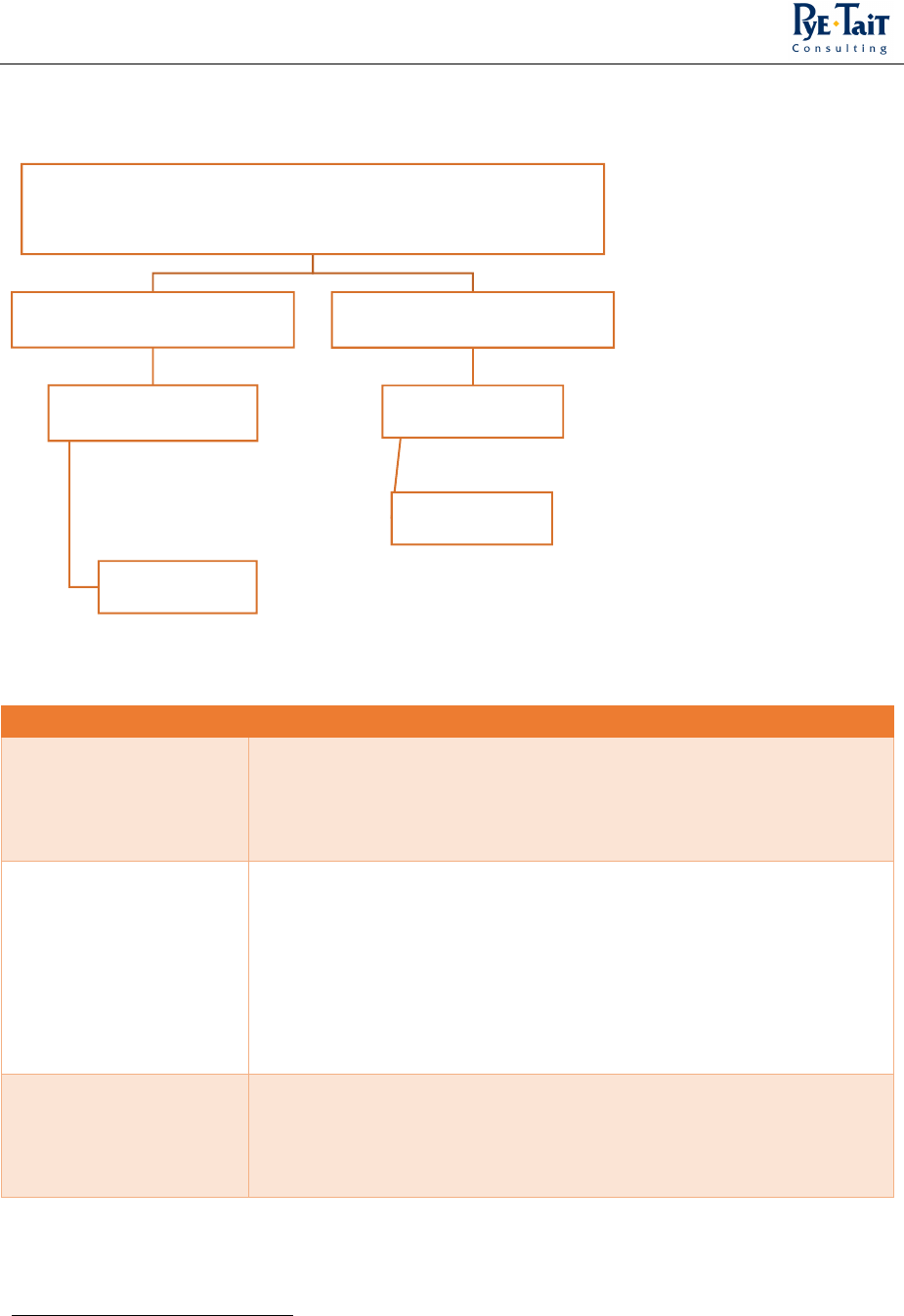
Quality assurance in energy efficiency and low carbon schemes
Page 36 of 136
Figure
Figure Figure
Figure 7
77
7: Hierarchy of Energy Company Obligation (ECO) organisations
: Hierarchy of Energy Company Obligation (ECO) organisations: Hierarchy of Energy Company Obligation (ECO) organisations
: Hierarchy of Energy Company Obligation (ECO) organisations
Table
Table Table
Table 8
88
8: Energy Company Obligation organisations
: Energy Company Obligation organisations : Energy Company Obligation organisations
: Energy Company Obligation organisations and their roles in the quality a
and their roles in the quality aand their roles in the quality a
and their roles in the quality assurance framework
ssurance frameworkssurance framework
ssurance framework
Organisation
Role and responsibility
Department for Energy
and Climate Change
58
•
Set out the standards which Energy Company Obligation (ECO)
Installers must meet.
• Advises Ofgem on the administration of ECO
Ofgem
59
•
Responsible for administering the Energy Company Obligation
(ECO) by:
allocating a proportion of the overall ECO targets to those
Energy Suppliers who qualify for the scheme
monitoring and enforcing compliance with ECO
auditing, detecting and preventing fraud
UK Accreditation Service
(UKAS)
•
Accredits the ECO Certification Bodies to monitor and manage ECO
Installers to ensure full compliance with the Publically Available
Specification (PAS) 2030 standards.
58
Department of Energy & Climate Change (November 2012) Government response to: ‘Home insulation: a report on the call for evidence
to be carried out by the OFT’’
59
Department of Energy & Climate Change (October 2012) Helping households to cut their energy bills.
Department for Energy and Climate Change
UKAS
Certification bodies
ECO installers
Ofgem
Energy suppliers
Monitoring
agents

Quality assurance in energy efficiency and low carbon schemes
Page 37 of 136
Energy suppliers
60
61
62
63
•
Required to:
determine how much subsidy they will provide to each
consumer depending upon their individual circumstances and
the quantity of Green Deal finance being used
report on their delivery against their obligation – this
information will be checked by an audit
instruct an independent qualified agent to undertake technical
monitoring on a sample of the Energy Company Obligation
(ECO) installations
ensure the installation of an energy efficiency measure is
carried out in accordance with the relevant PAS 2030
standards.
ECO certification
bodies
64
•
Accredited by UK Accreditation Service (UKAS) to monitor ECO
Installers and ensure they are certified to PAS 2030 standards.
ECO monitoring agents
65
•
An independent agent, instructed by an Energy supplier,
responsible for monitoring a sample (5 per cent) of an Energy
supplier’s ECO installations:
verify that the sample installations match the product
supplier’s notification
ECO installers
66
67
•
Must comply with and be certified to the PAS 2030 standards
• Must ensure that all insulation systems covered under ECO are
provided with an insulation warranty, as dictated by Ofgem.
Manufact
urer and/or
importer
68
•
Liable for any damage caused by defective good, in accordance
with the Consumer Protection Act 1979
• Applicable also for manufacturers and/or Importers operating
under the Microgeneration Certification Scheme (MCS).
60
Department of Energy & Climate Change (October 2012) Helping households to cut their energy bills.
61
Ofgem E-serve (March 2013) Energy Companies Obligation (ECO): Guidance for Suppliers
62
Department of Energy & Climate Change (October 2012) Helping households to cut their energy bills.
63
Ofgem (2015) Energy Company Obligation (ECO) Guidance – Delivery: Energy Efficiency and Social Programmes
64
Department of Energy & Climate Change (November 2012) Government response to: ‘Home insulation: a report on the call for evidence
to be carried out by the OFT’’
65
Ofgem E-serve (March 2013) Energy Companies Obligation (ECO): Guidance for Suppliers
66
Department of Energy & Climate Change (November 2012) Government response to: ‘Home insulation: a report on the call for evidence
to be carried out by the OFT’’
67
NICEIC. The NICEIC Insulation Warranty Scheme
68
Citizens Advice Bureau (2012) Advice Guide: Safety

Quality assurance in energy efficiency and low carbon schemes
Page 38 of 136
Table 9
Table 9Table 9
Table 9: E
: E: E
: Ene
nene
nergy Company Obligation quality a
rgy Company Obligation quality argy Company Obligation quality a
rgy Company Obligation quality assurance framework processes and procedures
ssurance framework processes and proceduresssurance framework processes and procedures
ssurance framework processes and procedures
Process and/or
procedure
Function
Publically Available
Specification (PAS)
2030 Standards
69
The same set of standards by which Green Deal Providers and Installers are
mandated to operate. All Energy Company Obligation (ECO) Installers must
be certified to the PAS 2030 standard.
Energy Company
Obligation (ECO)
Technical
Monitoring
70
71
Energy suppliers are responsible for ensuring 5
per cent
of their ECO
installations are subjected to technical monitoring by a qualified
independent agent. This monitoring does not need to be replicated for any
installations completed and monitored under the Green Deal.
Energy suppliers are also subject to an audit:
• following a successful audit, suppliers are provided with a full
report and recommendations on how to ensure they remain
compliant with ECO
• following a failed audit, suppliers may be subject to enforcement
action, further auditing or monitoring, or the right to attribute
savings to energy efficiency measures may be revoked
Technical monitoring rules will be revised for the second phase of ECO
(2015-17) with the intention of improving the effectiveness of the audit
process and resulting enforcement.
Competent Person
Scheme
72
A Scheme
also available to Green Deal and Microgeneration Certification
Scheme (MSC) participants; it permits approved individuals and enterprises
to self-certify that their work is compliant with the building regulations.
ECO warranty
73
A requirement of all ECO
installers to provide an insulation warranty to
consumers for every installation. This warranty aims to ensure that
consumers are protected in the event that their installer is unable to rectify
a fault with their installation. Warranties such as the NICEIC Insulation
Scheme last for up to 25 years, and the original installer of the measure is
required to rectify any issue with the measure or system they installed.
For replacement boilers, a warranty of at least one year will only be required
from January 2015
74
.
69
Department of Energy & Climate Change (November 2012) Government response to: ‘Home insulation: a report on the call for evidence
to be carried out by the OFT’’
70
Ofgem E-serve (March 2013) Energy Companies Obligation (ECO): Guidance for Suppliers.
71
Ofgem E-serve (April 2015)
Energy Company Obligation 2015-17 (ECO2) Guidance: Delivery
72
http://www.besca.org.uk/Schemes/CPS Accessed: 27/11/14
73
NICEIC. The NICEIC Insulation Warranty Scheme

Quality assurance in energy efficiency and low carbon schemes
Page 39 of 136
2.2.3 Microgeneration Certification Scheme
Established with an objective to be one of the major quality assurance systems governing the energy
sector, the Microgeneration Certification Scheme (MCS) incorporates both technical standards and
the installation requirements set out by the Renewable Energy Consumer Code (RECC). It aims to
protect consumers against fraudulent and poor quality energy generation products and services.
MCS certification of both the installer and the product they are installing is a requirement of the
Feed-in Tariff (FiT), the domestic Renewable Heat Incentive (RHI), and the Community and
Renewable Energy Scheme (Scotland only), and all MCS Installers are mandated to operate
according to the relevant installer standards
75
.
• Feed-in Tariff Scheme (FiT) was established in 2010 to encourage consumers to invest in
installed renewable generation technologies in their properties. These consumers receive
payments from their electricity supplier for generating energy and exporting energy back to the
electricity grid
76
.
• Renewable Heat Incentive (RHI) was established in 2014 to encourage households to install
renewable heating in their properties. It succeeds the Renewable Heat Premium Payments
Scheme (RHPP) for households which provided households a payment to off-set the cost of
installing energy efficiency technologies
77
. The RHI provides quarterly payments to householders
over 7 years to offset the additional costs of a RH system over that of a conventional system.
The hierarchy of organisations involved in delivering the MCS is shown in Figure 8.
The remit of each of these organisations is explained in Table 10, which also includes a summary of
the functions that are in place in relation to quality assurance and consumer protection.
Table 11 describes MCS quality assurance framework processes and procedures.
Figure 8
Figure 8Figure 8
Figure 8:
::
:
Hierarchy of Microgeneration Certification Scheme organisations
Hierarchy of Microgeneration Certification Scheme organisations Hierarchy of Microgeneration Certification Scheme organisations
Hierarchy of Microgeneration Certification Scheme organisations
74
Department
https://www.gov.uk/government/uploads/system/uploads/attachment_data/file/342178/The_Future_of_the_Energy_Company_Obligati
on_Government_Response.pdf
75
Renewable Energy Consumer Code (October 2014) Renewable Energy Consumer Code: For supplying small-scale renewable and low
carbon heat or power generating systems to domestic consumers
76
Consumer Focus: Centre for Consumers and Essential Services, University of Leicester (October 2011) Making the connection:
Strengthening the advice, complaint handling and redress framework
77
Consumer Focus: Centre for Consumers and Essential Services, University of Leicester (October 2011) Making the connection:
Strengthening the advice, complaint handling and redress framework
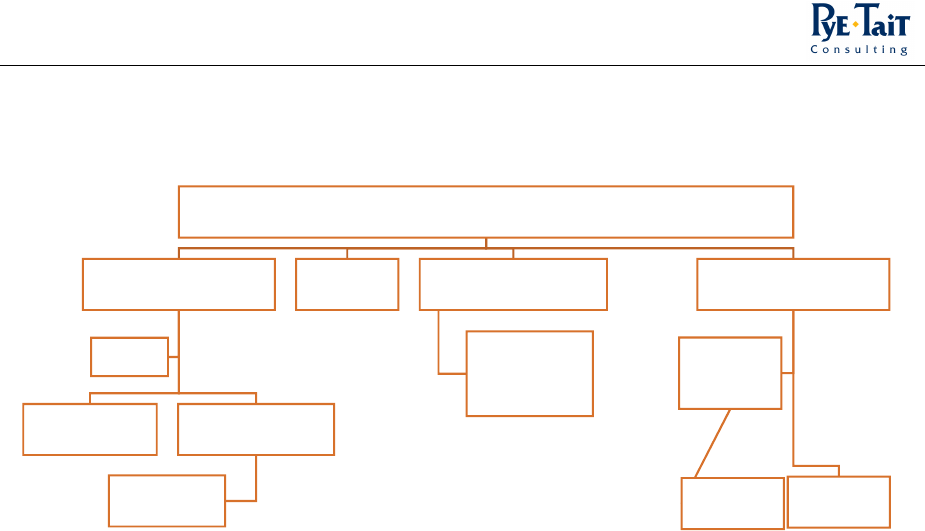
Quality assurance in energy efficiency and low carbon schemes
Page 40 of 136
Department for Energy and Climate Change
Gemserv
MCS Steering
Group
Certification
bodies
MCS
installers
UKAS
EST/Carbon
Trust
Trading Standards
Institute
Renewable
Energy
Assurance Ltd
Ofgem
RHI
consumer
FiT licensed
electricity
suppliers
FiT
generators

Quality assurance in energy efficiency and low carbon schemes
Page 41 of 136
Table
Table Table
Table 10
1010
10:
: :
: MCS
MCSMCS
MCS
organi
organiorgani
organisations, their functions and role in the quality a
sations, their functions and role in the quality asations, their functions and role in the quality a
sations, their functions and role in the quality assurance framewo
ssurance framewossurance framewo
ssurance framework
rkrk
rk
Organisation
Role and responsibility
Department of
Energy and Climate
Change
Appointed:
Gemserv as the administrators of the Microgeneration
Certification Scheme (MCS)
EST and the Carbon Trust to provide public information about the
Feed-in Tariff Scheme (FiT)
Ofgem as FiT and Renewable Heat Incentive (RHI) administrators
Advises Ofgem on the administration of FiT and RHI
Responsible for administering payments made under the RHI in
collaboration with EST
Gemserv
78
Administers the MCS on behalf of the
UK Government
Renewable Energy
Assurance Ltd
(REAL)
79
Administers the Renewable Energy Consumer Code, approved by the
Trading Standards Institute
Ofgem
80
Administers designated functions relating to the FiT and RHI
Responsible for:
registering community and energy school installations
paying RHI participants for the installation of eligible heat
generators or biomethane products
monitoring compliance and undertaking inspections to ensure the
FiT and RHI scheme regulations are being adhered to
Energy Sa
ving Trust
(EST)
81
Responsible for:
providing public information about the FiT and RHI through ESAS
and online
Trading Standards
Institute
82
83
Approved the MCS Code of Practice
Supports the Renewable Energy Consumer Code (RECC) as part of its self-
regulation initiative: the Consumer Codes Approval Scheme.
UK Accreditation
Accredits the certification bodies responsible for delivering certification
78
Renewable Energy Consumer Code (October 2014) Renewable Energy Consumer Code: For supplying small-scale renewable and low
carbon heat or power generating systems to domestic consumers.
79
Renewable Energy Assurance Limited. About Us. www.renewableenergyassurance.org.uk/about [latest access: 01/04/2015]
80
Ofgem e-serve (July 2013) Renewable Heat Incentive: Annual Report
81
Consumer Focus: Centre for Consumers and Essential Services, University of Leicester (October 2011) Making the connection:
Strengthening the advice, complaint handling and redress framework.
82
Microgeneration Certification Scheme. Why MSC? www.microgenerationcertification.org/about-us/why-mcs [latest access: 01/04/2015]
83
Microgeneration Certification Scheme. Renewable Energy Consumer Code
www.microgenerationcertification.org/consumers/renewable-energy-consumer-code [latest access: 01/04/2015]

Quality assurance in energy efficiency and low carbon schemes
Page 42 of 136
Service (UKAS)
84
based upon the MCS installer standards
IDRS Ltd
85
86
The independent dispute resolution pr
ovider who will provide the
independent conciliation service on behalf of REAL should the consumer
request this service
Certification bodies
Required to:
to conduct an annual visit to Installers registered under the MCS
Quality Mark
provide MCS Quality Mark logo to Installers who successful
complete their registration
MCS Steering Group
87
A group consisting of industry representatives, such as consumer groups
and trade associations (appears separate from Gemserv, with a defined
hierarchy)
Required to oversee the strategic direction for the MCS
Oversees the following industry representative Panel and Groups:
MCS Management Panel
MCS Standards Management Group
MCS Technical Working Groups
MCS Competence Development Working Group
MCS Certification Bodies Forum
Licensed electricity
suppliers
88
Required to:
make an annual declaration of their FiT status
participate in the Periodic and Annual Levelisation processes
assess installation work against the criteria for MCS certified
registration
manage the FiT application process
make FiT payments to eligible FiT Generators
ensure the accuracy of information provided by FiT Generators
Installers in the
Microgeneration
Required to operate according to:
the MCS 001 Installer Certification Scheme Regulations
84
Renewable Energy Consumer Code (October 2014) Renewable Energy Consumer Code: For supplying small-scale renewable and low
carbon heat or power generating systems to domestic consumers.
85
IDRS Limited. Who we are. www.idrs.ltd.uk/?p=7&lang=e [latest access: 02/04/2015]
86
Renewable Energy Consumer Code (2014) Renewable Energy Consumer Code www.recc.org.uk/scheme/consumer-code [latest access:
01/04/2015]
87
Microgeneration Certification Scheme. Scheme Governance www.microgenerationcertification.org/about-us/scheme-governance [latest
access: 01/04/2015]
88
Ofgem E-serve (July 2013) Feed-in Tariff: Guidance for Licensed Electricity Suppliers

Quality assurance in energy efficiency and low carbon schemes
Page 43 of 136
Certification
Scheme
89
90
91
relevant MIS technology specific schemes for the measures they
are approved to install e.g. MIS 3001 Solar Heating Standard
Microgeneration Certification Scheme (MCS) Code of Conduct
Renewable Energy Consumer Code (RECC)
Required to:
be certified, or be working towards certification, under the MCS
and RECC, for the technology type they install to remain a
member of the Code – failure to achieve this certification within
six months of membership will result in the termination of the
Installer’s membership to the Code
create the MCS certification for each installation task after
entering into a contract with a consumer
register an installation with an insurance company or other
provider to ensure their consumer is covered under a relevant
warranty scheme
apply for any relevant product guarantees (not mandatory)
Feed
-
in Tariff (FiT)
generators
Consumers who have had
microgeneration
systems installed in their
properties by a MCS accredited Installer, and whom can export surplus
energy to the Main Grid.
British Standards
Institution (BSI)
92
A UKAS accredited body permitted to assess products for MCS Kitemark
approval
Developed the MCS Kitemark Scheme
Manufacturer and/or
Importer
93
Liable for any damage caused by defective good, in ac
cordance with the
Consumer Protection Act 1979
89
Consumer Focus: Centre for Consumers and Essential Services, University of Leicester (October 2011) Making the connection:
Strengthening the advice, complaint handling and redress framework
90
Renewable Energy Consumer Code (October 2014) Renewable Energy Consumer Code: For supplying small-scale renewable and low
carbon heat or power generating systems to domestic consumers.
91
http://www.microgenerationcertification.org/consumers/insurance-and-warranties Accessed: 02/12/14
92
BSI. Kitemark, Microgeneration Products: New technology with traditional values
93
Citizens Advice Bureau (2012) Advice Guide: Safety

Quality assurance in energy efficiency and low carbon schemes
Page 44 of 136
Table 11
Table 11Table 11
Table 11: Microgeneration Certification Scheme Quality Assurance framework processes and procedures
: Microgeneration Certification Scheme Quality Assurance framework processes and procedures : Microgeneration Certification Scheme Quality Assurance framework processes and procedures
: Microgeneration Certification Scheme Quality Assurance framework processes and procedures
Process and/or
procedure
Function
Microgeneration
Certification Scheme
Code of Practice
94
Incorporatin
g requirements of the Renewable Energy Consumer Code
(RECC), the Code of Practice is designed to ensure all Microgeneration
Certification Scheme (MCS) Installers provide consumers with accurate
information about the available financial incentives for installing energy
generators in their property, including:
• the Feed in Tariff Scheme (FiT)
• Renewable Heat Incentive (RHI) for heat generators
• Scottish Government’s Community and Renewable Energy Scheme
(CRES)
In order to comply with the MCS Code of Practice, Installers are required
to:
• calculate the income from financial incentives such as Feed in Tariff
(FiT) using a model based on a reasonable set of assumptions i.e. the
Government’s model for Domestic Renewable Heat Incentive
• disclose these calculations to the consumer
• be signed up to RECC
Microgeneration
Certification Scheme
Quality Mark
95
Designed to symbolise high quality products or installers, the Quality
Mark may only be used by individuals or displayed on products licensed
to do so. Registered individuals are subject to an annual visit by their
Certification body in order to maintain their membership.
The Quality Mark is internationally recognised and a list of the approved
products is available on the MCS website.
It should only be used by those licensed to do so – any MCS installer who
does not comply with the guidelines of their license agreement faces the
risk of their permission to use the MCS Quality Mark being withdrawn.
Installer Certification
Scheme (MCS 001)
96
Established with the aim
to conduct regular and independent
assessments of MCS installers of a range of different technologies to
ensure all relevant standards are being met to the benefit of their
consumers.
94
Renewable Energy Consumer Code (October 2014) Renewable Energy Consumer Code: For supplying small-scale renewable and low
carbon heat or power generating systems to domestic consumers.
95
http://www.microgenerationcertification.org/installers-manufacturers/mcs-logo-marketing Accessed: 24/11/14
96
MCS (November 2014) Microgeneration Installation Standard: MCS 001: Installer certification scheme requirements: Issue 2.4

Quality assurance in energy efficiency and low carbon schemes
Page 45 of 136
Installers are awarded certification and the corresponding Certificati
on
Mark if all assessments have been completed satisfactorily. This
certification is only valid as long as the installer operates with
technologies in the scope of their certification.
The technologies and systems in scope include:
•
solar domestic hot
water
• solar photovoltaic
• ground-source heat
pumps
•
air-source heat
pumps
• micro CHP
• micro wind
• biomass
MCS Technology
Specific Schemes
97
There are 10 technology specific schemes for each of the measures and
systems covered under the MCS 001 Standard with dedicated regulations
that set out the standards which must be met by all MCS installers in the
measure they are approved to install:
• MIS 3001 Solar Heating Standards
• MCS 024 Solar Domestic Hot Water Energy Calculation; Thermal
Solar Performance Energy Calculator
• MIS 3002 Solar PV Standard
• MIS 3003 Small and Micro Wind Systems
• MIS 3004 Biomass Standard
• MIS 3005 Heat Pump Standard
• MCS 021 Heat Emitter Guide
• MCS 022 Supplementary Information Ground loop sizing tables;
Supplementary Tables of Heat Emitter Outputs
• MIS 3007 Heat led Micro CHP Systems
• MIS 3007-2 Electricity led Micro CHP Systems
Installer Certification
Scheme (MCS 001)
98
Established with the aim to conduct regular and independent
assessments of MCS Installers of a range of different technologies to
ensure all relevant standards are being met to the benefit of their
consumers.
Installers are awarded certification and the corresponding Certification
Mark if all assessments have been completed satisfactorily. This
certification is only valid as long as the Installer operates with
technologies in the scope of their certification.
97
Microgeneration Certification Scheme. Installer Standards. www.microgenerationcertification.org/mcs-standards/installer-standards
[latest access: 01/04/2015]
98
MCS (November 2014) Microgeneration Installation Standard: MCS 001: Installer certification scheme requirements: Issue 2.4

Quality assurance in energy efficiency and low carbon schemes
Page 46 of 136
The technologies and systems in scope include:
•
solar domestic hot
water
• solar photovoltaic
• ground-source heat
pumps
•
air-source heat
pumps
• micro CHP
• micro wind
• biomass
Competent Person
Scheme
99
A Scheme also available to Green Deal and ECO participants; it permits
approved individuals and enterprises to self-certify that their work is
compliant with the Building Regulations.
Benchmark
Certification: MCS
100
An independen
t verification and certification scheme aiming to ensure all
MCS Installers meet and operate according to the requirements set out
in MCS 001 and the relevant MIS technical standards.
Membership to the scheme is not mandatory for all MCS Installers.
Certification lasts for 12 months and 30 days, after which members are
contacted for renewal.
Consumer contract
101
This is a requirement under general consumer law.
Renewable Energy
Consumer Code
(RECC) Scheme
102
103
A consumer code, administered by REAL and
sponsored by the Trading
Standards Institute, which covers all MCS sales activity conducted by
MCS participants, including:
• contracts, such as: terms of business; cancellation rights; deposits
and part payments; timetable and consumer preparation
• completion of orders, such as: responsibility for the work; design,
delivery and installation; and testing and commissioning
• pre- and post-sale activity, such as: advertising and sales promotion;
behaviour of sales employees or representatives; performance
information; proposals, estimates and quotes; permissions,
approvals and grants; and pre-contractual information
99
http://www.besca.org.uk/Schemes/CPS Accessed: 27/11/14
100
Benchmark Certification Limited (18
th
January 2013) Scheme Rules
101
http://www.adviceguide.org.uk/england/consumer_e/consumer_protection_for_the_consumer_e/consumer_contracts_e.htm
Accessed: 1/12/14
102
Renewable Energy Consumer Code (2014) Renewable Energy Consumer Code www.recc.org.uk/scheme/consumer-code [latest access:
01/04/2015]
103
Renewable Energy Consumer Code (October 2014) Renewable Energy Consumer Code: For supplying small-scale renewable and low
carbon heat or power generating systems to domestic consumers

Quality assurance in energy efficiency and low carbon schemes
Page 47 of 136
The RECC scheme includes a consumer complaints procedure; the Code
directly states that
104
:
• the consumer must tell the Code member he or she agreed the
contract with, about any complaint they have as soon as possible,
and no later than three months, after they have first noticed the
problem;
• the Code member will consider the details of the complaint and
report the findings clearly to the consumer within seven working
days of receiving the complaint;
• if appropriate, the Code member will arrange to inspect the
consumer’s system, within seven days of receiving the complaint,
and within 24 hours of receiving the complaint where a consumer is
without heating or hot water as a result of the situation that has led
to the complaint;
• the Code member will try to find an agreed course of action to
resolve the complaint speedily and effectively to the consumer's
satisfaction;
• if the consumer is not satisfied with the remedy offered by the Code
member, and the complaint is (partly or wholly) about technical
aspects of the installation of an energy generator, they should direct
it to the relevant MCS installer certification body;
• if the Code administrator receives a complaint from a consumer that
is about technical aspects of the installation of an energy generator,
the Code administrator will forward it to the relevant MCS installer
certification body, having first obtained the consumer’s permission
to do so;
• if the consumer is not satisfied with the remedy offered by the Code
member, and the complaint is about any other issues linked to the
Code, they should direct it to the Code administrator by completing
the online complaints registration form here or by requesting a hard
copy from the Code administrator;
• the Code administrator will check that the consumer has already
given the Code member the opportunity to resolve the complaint;
104
Renewable Energy Consumer Code (2014) Renewable Energy Consumer Code www.recc.org.uk/scheme/consumer-code [latest access:
01/04/2015]

Quality assurance in energy efficiency and low carbon schemes
Page 48 of 136
• if satisfied the Code administrator will register and acknowledge the
complaint within seven days of receiving it, and will also notify the
Code member of the complaint;
• Code members will not take action through the courts without first
trying to solve the problem;
• if the complaint has not been resolved, the Code administrator will
assign the complaint to one of its complaint handlers who will
mediate between the consumer and the Code member, taking the
facts of the matter into account and using their best endeavours to
suggest an acceptable solution;
• in the event that the complaint cannot be resolved with the
assistance of the Code administrator's complaint handlers, either the
Code member or the consumer may request to use the independent
conciliation or arbitration services set out below.
There is also an independent conciliation service, arbitration service and
disciplinary procedure, the Code directly states that:
• if a consumer's complaint against a Code member has not been
resolved, the Code member or consumer may ask for the complaint
to be passed to the independent conciliation service;
• if the consumer requests to use the independent conciliation service,
the Code member must accede to that request;
• if requested to do so, the Code administrator will pass the complaint
to IDRS Ltd. (IDRS) who will provide the independent conciliation
service on its behalf;
• before proceeding to conciliation the consumer and the Code
member will agree to do their best to comply with the conciliator's
recommendations which will then be implemented and the
complaint closed without recourse to any further action;
• the Code administrator will inform the other people identified as
being involved in the dispute and direct them to the rules available
here;
• the consumer may be required to fill in a conciliation form and, if so,

Quality assurance in energy efficiency and low carbon schemes
Page 49 of 136
they should sen
d the completed form to IDRS or as otherwise
directed;
• the other parties involved in the dispute may also be required to
send any relevant information to IDRS, or as otherwise directed, as
soon as possible, but in any event within 10 working days;
• the independent expert will review the written evidence in the light
of the consumer protection legislation in force, and may discuss the
details and possible solutions with the people involved;
• if the conciliator's recommendations are not acceptable to either
side, they must explain why to the Code administrator and the
independent expert;
• before applying for independent arbitration a consumer must have
attempted to resolve the complaint;
• before applying for independent arbitration the consumer or Code
member must inform the Code administrator of their intention to do
so;
• the consumer must complete the application form available from the
Code administrator and return it to IDRS with a fee of £100 + VAT;
(this fee will be refunded to the consumer by the Code member if
the independent arbitrator finds in his or her favour, or recommends
it to be refunded);
• the Code member must accede to a consumer’s request for
arbitration, provided that the parties have been unable to resolve
the complaint using the complaints procedure as described in this
Code. The Code member will also be required to pay a fee of £100 +
VAT to IDRS.
Microgeneration
Certification System
Complaints and
Sanctions System
A system which is designed to ensure consumers are able to resolve
any
technical concerns they may have about the installation of any small-
scale renewable energy generating system installed in the property.
• Consumers are first advised to contact their MCS Installer to address
their complaint.
• If the issue is unresolved then consumers are permitted to contact
the relevant MCS certification body.
If a complaint pertains to a non-technical aspect of the Installer service

Quality assurance in energy efficiency and low carbon schemes
Page 50 of 136
or the contract of work, the consumer is advised to contact the
Renewable Energy Assurance Limited Scheme (REAL), as long as the MCS
Installer is a member of the Scheme.
Microgeneration
Certification Scheme
Warranty
105
A financial protection scheme designed to protect:
• the consumers’ deposits
• the workmanship warranty provided to the consumer upon
completion of the installation
• consumers if their MCS Installer ceases trading and are thereby
unable to fulfil the requirements of the Renewable Energy Consumer
Code (RECC)
Example warranty schemes include: the Deposit and Workmanship
Warranty Insurance Scheme (DAWWI) devised by the RECC in
collaboration with Warranty Service Ltd
Microgeneration
Certification Scheme
Kitemark
106
107
Developed by BSI, the Kitemark aims to ensure all registered products
are reliable and perform to industry standards. The MCS Kitemark can be
displayed by:
• energy products, including:
thermal and solar photovoltaic
heat pumps
biomass heating
• power products, such as:
solar thermal and solar photovoltaic
wind turbines
The Kitemark can be applied to products which meet the MCS
Technology Specific Scheme standards:
• MCS 004 Solar thermal panels
• MCS 005 Solar photovoltaic (PV) panels
• MCS 006 Micro and small wind turbines
• MCS 007 Heat pumps
• MCS 008 Solid biomass heating appliances
• MCS 012 Pitched roof kits for PV panels
• MCS 014 Heat-led micro combined heat and power (CHP) units
105
National Warranties: A Kinnell Group Company (2014) The Deposit and Workmanship Warranty Insurance Scheme
106
BSI. Kitemark, Microgeneration Products: New technology with traditional values
107
BSI. BSI Kitemark for microgeneration products. www.bsigroup.com/Documents/product-certification/BSI-Microgeneration-Brochure-
UK-EN.pdf [latest access: 02/04/2015]

Quality assurance in energy efficiency and low carbon schemes
Page 51 of 136
•
MCS 015 Electricity-led micro combined heat and power (CHP) units
• MCS 017 Bespoke building integrated solar PV panels
To access the UK Domestic Government Grant projects for particular
technologies, all MSC installers and product manufacturers must be
certified with the MCS Kitemark.
2.2.4 Home Energy Efficiency Programmes for Scotland (HEEPS)
HEEPS is an initiative launched by the Scottish Government in 2013 which local authorities fund the
installation of energy efficiency technologies and measures in local households, with an objective to
tackle fuel poverty and increase energy efficiency in homes. It is designed to be a 10 year
programme of investment. Relevant local contractors are registered on the Programme’s contractor
framework, from which local authorities can select contractors to carry out the installation work.
The local authority monitors the installation and the contractor’s compliance with the Programme,
in addition to managing the contract between them and the contractor.
At the time of writing HEEPS incorporates the following programmes:
•
Affordable Warmth
This scheme is offered to households classified by the UK Government’s Affordable Warmth group
as being vulnerable to fuel poverty, and available to homeowners or tenants of private sector
landlords in receipt of qualifying benefits. Energy efficiency measures are installed and funded via
ECO;
•
Area Based Schemes (ABS)
108
This is an area-based approach designed to initially target the most deprived areas, based on a needs
basis, using evidence drawn from data sources such as child poverty statistics, the Scottish House
Condition Survey and indices of multiple deprivation. The ABS component of the programme is
delivered by Scottish local authorities, who take responsibility for developing schemes suitable for
their local area. Of the total budget of £60 million for 2014-15, Scotland’s 32 local authorities have a
direct allocation of £42 million, with the remainder available to local authorities on a competitive
basis, thereby allowing them scope to be innovative and co-develop larger schemes. There is also an
expectation that HEEPS: ABS operates alongside ECO, which could be used as a means to generate
further income to deliver measures. A range of energy efficiency measures can be installed in
homes, depending on the scheme design, and are free to householders, and available for all types of
tenures.
108
Previously known as the National Retrofit Programme. The area-based component of the scheme is the main focus for this research

Quality assurance in energy efficiency and low carbon schemes
Page 52 of 136
•
Energy Assistance Scheme
The Energy Assistance Scheme is a further component of the programme which makes support
available to households deemed to be most vulnerable to fuel poverty but are not eligible for
Affordable Warmth and are not resident in a current ABS area. Home owners and tenants of private
sector landlords that are eligible, qualify for grants of up to £4,000
109
, which can be used to fund
insulation and heating measures in the home. The Scottish Government allocated £16 million to this
scheme for 2014-15. The Energy Assistance stopped taking referrals in March 2015, and will be re-
launched, with a slightly different emphasis, as Warmworks from September 2015.
There is also a HEEPS Loan Scheme, offering interest-free loans of up to £10,000 to install a range of
energy efficiency measures, which is available to owner occupiers and registered private sector
landlords. The repayment period runs up to 10 years. Applicants must have a Green Deal Advice
Report and work must be carried out by a Green Deal certified installer.
HEEPS builds upon a number of similar former Scottish Government energy efficiency schemes
including:
• Home Insulation Scheme (HIS) (2009 - 2011): an area-based scheme designed to improve
energy efficiency in homes through promotion and installation of free of charge or
discounted measures. It was replaced by the Universal Home Insulation Scheme (UHIS),
which provided energy efficiency measures such as cavity wall insulation, free of charge.
UHIS was managed by local authorities and was closed to new applicants in March 2013;
• Warm Homes Fund (2009 - 2013): provided grants and loans to support renewable energy
schemes, managed by the Energy Saving Trust, and open to registered social landlords and
local authorities;
• Energy Assistance Package (2009 - 2013
110
): a range of measures available to support
homeowners likely to have difficulty paying their fuel bills or keeping their home sufficiently
warm; and
• Boiler Scrappage Scheme (2010 - 2013): a £400 subsidy for homeowners to replace
inefficient boilers, managed by the Energy Saving Trust (EST).
Table 12 describes the range of organisations and their roles involved in the delivery of HEEPS. In
addition, Green Deal assessors and installers have a role to play in relation to the HEEPS Loan
Scheme as described above.
109
In some cases up to £6,500
110
Superceded by the Energy Assistance Scheme in April 2013. The Home Energy Scotland Hotline that provided free energy advice as part
of the scheme, continued to run

Quality assurance in energy efficiency and low carbon schemes
Page 53 of 136

Quality assurance in energy efficiency and low carbon schemes
Page 54 of 136
Table 12
Table 12Table 12
Table 12: HEEPS o
: HEEPS o: HEEPS o
: HEEPS organi
rganirgani
rganisations, their functions and role in th
sations, their functions and role in thsations, their functions and role in th
sations, their functions and role in the quality a
e quality ae quality a
e quality assurance framework
ssurance frameworkssurance framework
ssurance framework
Organisation
Role and responsibility
Scottish
Government
Manages and provides funding for
HEEP
S, as well as other energy
efficiency and fuel poverty programmes in Scotland.
Home Energy
Scotland
111
Manages calls in relation to HEEPS and runs the Home Energy Scotland
hotline. Offers a one-stop-shop source of free advice on energy efficiency
measures, low cost energy tariffs and identifies the most relevant scheme
available to meet the consumers’ needs, for which they are eligible, for
example a programme component of HEEPS, Green Deal, or ECO. This
service is funded by the Scottish Government and run by the Energy Saving
Trust.
Local advice centres can offer face-to-face support. An accompanying
outreach programme offers advice to the most vulnerable consumers.
Energy Action
Scotland
A not for profit organisation which campaigns for an end to fuel poverty in
Scotland and provides information for consumers about HEEPS.
Local Authorities in
Scotland
Manage the delivery
of HEEPS using local contractors who are
registered
on the Programme’s contractor framework to carry out installation of
energy efficiency measures.
Local authorities monitor the installation and the contractor’s compliance
with the Programme, in addition to managing the contractor.
Consumer
contract
112
This is a requirem
ent under general consumer law
.
2.2.5 Arbed
‘Arbed’
113
is the Welsh Government’s strategic energy performance investment programme as part
of its overarching commitments to reduce climate change, help eradicate fuel poverty, and boost
economic development and regeneration in Wales. Phase 1 of the programme predominantly
improved social housing (79 per cent) properties, with the remainder (21 per cent) privately owned
or rented. Phase 1 invested approximately £30 million in public funding, combined with a further
111
Home Energy Scotland is funded by the Scottish Government and run by the Energy Saving Trust
112
http://www.adviceguide.org.uk/england/consumer_e/consumer_protection_for_the_consumer_e/consumer_contracts_e.htm
[Accessed: 01/12/14]
113
Meaning “Save”

Quality assurance in energy efficiency and low carbon schemes
Page 55 of 136
£10 million from energy suppliers and £22 million from Registered Social Landlords, to install energy
efficiency measures in over 7,500 homes in Wales. Phase 1 ran from 2009 to 2012.
Phase 2 of the Arbed programme started in May 2012 and is funded by the Welsh Government and
the European Regional Development Fund (ERDF). It is a 3-year programme, giving every local
authority in Wales the opportunity to submit 2 applications to the Welsh Government per year
114
.
Key objectives of the Arbed phase 2 programme are to:
• improve the energy efficiency of a minimum of 4800 existing homes in the most deprived
areas of Wales by the end of 2015;
• reduce a minimum of 2.54 KTC (Kilo tons of carbon) of greenhouse gas emissions by the end
of 2015; and
• boost local economies by using local businesses to manufacture, supply and install as many
of the measures as possible and provide training and employment opportunities for local
workers.
Arbed 2 is an area-based scheme, delivered by 2 managers, Willmott Dixon in North and Mid Wales,
and Mellin Homes in South Wales. Scheme delivery incorporates a number of quality assurance
processes for consumers (Figure 9).
Figure 9
Figure 9Figure 9
Figure 9: Delivery process for Arbed 2 an
: Delivery process for Arbed 2 an: Delivery process for Arbed 2 an
: Delivery process for Arbed 2 and quality assurance for consumers
d quality assurance for consumers d quality assurance for consumers
d quality assurance for consumers
114
With a view to commissioning 10-15 schemes per year
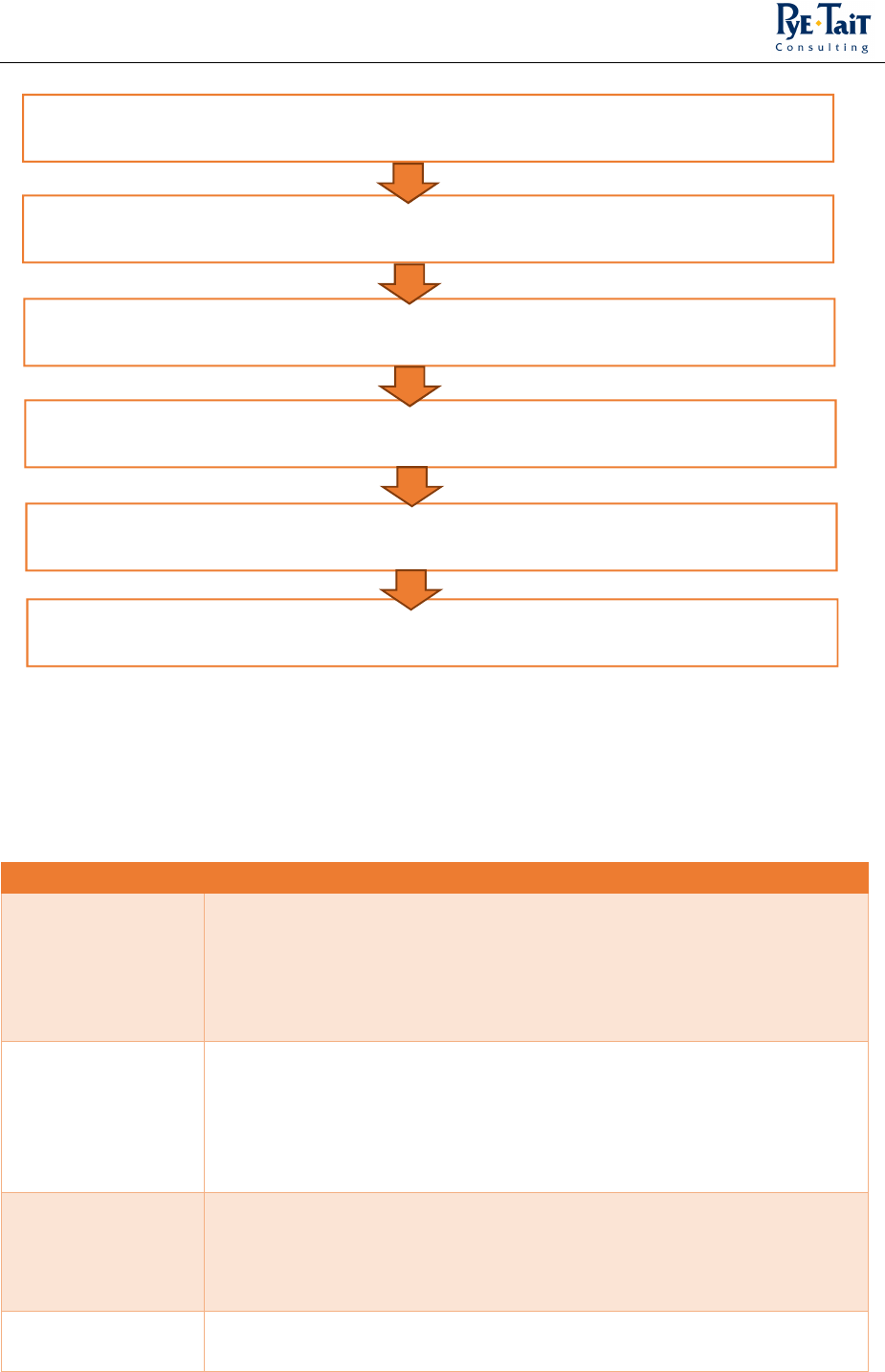
Quality assurance in energy efficiency and low carbon schemes
Page 56 of 136
Table 13 provides a summary of the main organisations involved in the delivery and quality
assurance of the Arbed 2 programme in Wales.
Table 13
Table 13Table 13
Table 13: Arbed organisations, their functions and role in the quality a
: Arbed organisations, their functions and role in the quality a: Arbed organisations, their functions and role in the quality a
: Arbed organisations, their functions and role in the quality assuran
ssuranssuran
ssurance framework
ce frameworkce framework
ce framework
Organisation
Role and responsibility
Welsh
Government
Overall management
and
part funding of the delivery of Arbed 2
. Approves
all proposed area-based schemes and assures quality through data
submitted by scheme managers, as well as external research conducted
with consumers (post-installation satisfaction surveys).
Willmott Dixon
Energy Services
Scheme manager for Arbed 2 in North and Mid Wales. Site management is
conducted in-house, therefore Willmott Dixon retain direct responsibility
for quality assurance. The customer engagement process is sub-
contracted.
Severn Wye
Sub
-
contractor to Willmott Dixon Energy Services, to carry out the
customer engagement for areas proposed to receive support via the Arbed
2 programme.
Mellin Homes
S
cheme manager for Arbed 2 in South Wales.
Quality is assured through a
mix of technical inspections and consumer satisfaction surveys.
Completion of initial assessment of all properties in scope in the area and survey data used to
prepare a scheme proposal submitted to the Welsh Government
Once scheme accepted, further technical appraisals of properties take place to ensure proposed
measures are suitable, and proposal/paperwork discussed in detail with consumers
An inspection is conducted at the property after the work is completed, to check quality of the
installation. Consumers are asked to complete a customer satisfaction survey
Consumers receive a completion pack after the work is finished, with property specific energy
advice, any relevant warranties and guarantees and contact details in case of queries
A year after the work has been completed, a further technical inspection takes place (100% of
properties)
Initial engagement and raising awareness with consumers in a particular area to conduct surveys
assessing homes for energy efficiency measures; consumer given energy efficiency information

Quality assurance in energy efficiency and low carbon schemes
Page 57 of 136
Consumer
contract
115
This is a requirem
ent under general consumer law.
2.2.6 Nest
The Nest scheme was launched by the Welsh Government in 2010, with an objective to help reduce
the number of households in fuel poverty, and make homes warmer and more energy-efficient. The
scheme initially offered a wide range of advice and support about energy efficiency, reducing fuel
bills and renewable technologies. A grant component of the scheme enables householders that own
or privately rent their property (where landlord permission is obtained) are eligible for Nest whole
house improvements. Private landlords are able to refer a maximum of 3 properties to the Nest
scheme.
In order to assess whether a householder qualifies for a grant, a Nest assessor visits the property
and conducts an assessment to recommend a tailored package of improvements, for example
insulation or a new boiler. An installation plan is put together using this information and the
proportion of the work to be funded by the Nest programme is then agreed. The majority of the
‘whole-house’ installations are free to the homeowner. To qualify, homes must be classified as
having an F or G energy rating.
A team of Nest partnership development managers work with other organisations such as local
authorities and charities, to raise awareness of the scheme, and these organisations are able to
directly refer consumers to Nest. The scheme is due to run until 2016.
Since the scheme was launched, the advice component has been reduced within Nest, and replaced
by the remit of Resource Efficient Wales, which was launched by the Welsh Government in October
2014.
Table 14 provides a summary of the main organisations involved in the delivery and quality
assurance of the Nest scheme in Wales.
115
http://www.adviceguide.org.uk/england/consumer_e/consumer_protection_for_the_consumer_e/consumer_contracts_e.htm
Accessed: 1/12/14

Quality assurance in energy efficiency and low carbon schemes
Page 58 of 136
Table 14
Table 14Table 14
Table 14:
: :
: N
NN
Nest
estest
est
organisations, their functions and role in the quality a
organisations, their functions and role in the quality aorganisations, their functions and role in the quality a
organisations, their functions and role in the quality assurance framework
ssurance frameworkssurance framework
ssurance framework
Organisation
Role and responsibility
Welsh
Government
Provides funding for and overall management of the N
est
scheme in
Wales.
British Gas
Contracted by the Welsh Government to deliver the Nest scheme.
Qualified assessors and installers (either directly employed or sub-
contracted) also undertake internal British Gas training to ensure
competence.
Responsible for ensuring installers and assessors are qualified and able to
undertake work to a quality standard, also inform consumers of quality
assurance processes and the complaints procedure.
Audits are conducted on all properties post installation, whereby an
assessor checks the systems are working and consults the consumer to
ensure they are satisfied and understand what has been installed.
Installations are guaranteed for 2 years. During this 2-year period the
consumer is able to telephone British Gas for advice (aftercare).
Energy Saving Trust
(EST)
Sub
-
contractor to British Gas, with a role in promoting the scheme and
providing the advice component (now reduced with the majority of
support in the provision of grants).
Resource Efficient
Wales (REW)
A contact centre and website
to offer a one
-
stop
-
shop for consumers
about all matters relating to resource efficiency, including information
about Government-backed schemes, and general advice and guidance.
Local authorities in
Wales
Work in partnership with Nest
by referring consumers to the scheme.
Charities in Wales
Work in partnership with Nest
by referring consumers to the scheme.
Consumer
contract
116
This is a requirem
ent under genera
l consumer law.
116
http://www.adviceguide.org.uk/england/consumer_e/consumer_protection_for_the_consumer_e/consumer_contracts_e.htm
Accessed: 1/12/14

Quality assurance in energy efficiency and low carbon schemes
Page 59 of 136
2.3 Other mechanisms underpinning quality assurance applicable for domestic energy
efficiency and low carbon
2.3.1 National Occupational Standards (NOS) and qualifications

Quality assurance in energy efficiency and low carbon schemes
Page 60 of 136
A series of National Occupational Standards (NOS) have been devised for use in accordance with
energy efficiency installations predominantly associated with the Green Deal. These NOS set out the
professional and technical standards which must be met by professionals operating under the Green
Deal. Relevant NOS titles include:
• Undertake home visits to carry out Occupancy Assessment and give advice
• Conduct assessment in a safe, effective and professional manner
• Produce and issue Energy Performance certificates relating to domestic property
• Explain long-term nature of cost savings
National Awarding Organisations have used many of these NOS to inform their dedicated Green Deal
Qualification and Credit Framework (QCF) and National Vocational Qualifications (NVQs), attainment
of which is a route to demonstrating Green Deal advisors’ and installers’ compliance with PAS 2030,
including the QCF Level 3 Diploma in Domestic Green Deal Advice
117
.
In addition, there are other NOS which are applicable for Green Deal installers, such as:
• Install cavity wall insulation
• Install electrical systems in buildings and structures
• Minimise the risk of damage
• Safe work practices
Common Minimum Technical Competencies (CMTCs) for a Competent Person Scheme are developed
from the NOS in conjunction with the Department for Communities and Local Government (DCLG),
the Competent Scheme Forum, prospective Competent Person Scheme operators and the relevant
Sector Skills Council. CMTCs have also been developed for inclusion to certain annexes of the PAS
2030, and CMTC Annexes are developed from the relevant NOS in conjunction with each industry
certification scheme and in conjunction with the relevant Sector Skills Council.
Although all Green Deal Advisors are required to achieve a qualification in providing Green Deal
advice, installers are only mandated to meet and comply with the standards set out in the Green
Deal Code of Practice and PAS 2030.
In addition, a series of technical and product-specific qualifications are on the market and are often
included as part of the certification process of Competent Person Schemes. Examples include
118
:
• QCF Level 3 Award in the Installation of Heat Pump Systems
• SQA Certificate in Environmental Technology Systems
• Level 3 NVQ Diploma in Domestic Heating
117
Asset Skills: the Sector Skills Council for the places where we live and work. Level 3 Diploma in Green Deal Domestic Advice
118
Department for Communities and Local Government (December 2011) Common Minimum Technical Competency Requirements

Quality assurance in energy efficiency and low carbon schemes
Page 61 of 136
2.3.2 Competency schemes and certifications
Competent Person Schemes (CPS) were introduced by the UK Government through the Department
of Communities and Local Government (DCLG) to allow individuals and enterprises to self-certify
that their work complies with the building regulations as an alternative to submitting a building
notice or using an approved inspector.
119
A Competent Person must be registered with a scheme that has been approved by DCLG. Schemes
authorised by the DCLG are listed on its website.
120
Contractors on this register are regularly assessed to the standards of their sector and able to self-
certify their work as meeting the requirements of the building regulations.
121
There are different schemes for different types of building work:
1. Air pressure and testing of buildings
2. Cavity and solid wall installation in an existing building
3. Combustion appliances
4. Electrical installations
5. Heating and hot water systems
6. Mechanical ventilation and air-conditioning systems
7. Plumbing and water supply systems
8. Replacement windows, doors, roof windows or roof lights
9. Microgeneration and renewable technologies
a. Authorised schemes are: APHC, Benchmark, BSI, BESCA, BRE, Certsure, HETAS, NAPIT,
OFTEC and Stroma (Table 15).
In order to be registered, installers must demonstrate they meet the relevant minimum technical
competence requirements. Most of the Minimum Technical Competences are also used to assess
the competence of Green Deal Installers and, where relevant installers of the Microgeneration
Certification Scheme.
122
Processes and procedures for quality assurance and consumer complaints
The schemes that sit under CPS all have internal systems that manage their quality and deal with
complaints. This is one of the stipulations of the Competent Persons Scheme. The stages of the
scheme’s complaints procedure should be set out in detail, at a minimum on its public website, so
that those wishing to use the procedure are aware of the stages, and the procedures shall be
119
https://www.gov.uk/competent-person-scheme-current-schemes-and-how-schemes-are-authorised#how-schemes-are-authorised
Accessed: 27.11.2014
120
https://www.gov.uk/competent-person-scheme-current-schemes-and-how-schemes-are-authorised#how-schemes-are-authorised
Accessed: 27.11.2014
121
https://www.gov.uk/competent-person-scheme-current-schemes-and-how-schemes-are-authorised#how-schemes-are-authorised
Accessed: 27.11.2014
122
https://www.gov.uk/competent-person-scheme-current-schemes-and-how-schemes-are-authorised#how-schemes-are-authorised
Accessed: 27.11.2014

Quality assurance in energy efficiency and low carbon schemes
Page 62 of 136
consistent with the principles relating to complaints management of the Office of Fair Trading
Consumer Codes Approval Scheme.
123
Therefore, there is an overarching framework recommended by the Department of Communities
and Local Government to deal with complaints. The responsibility for a company’s non-compliance
with the Building Regulations and breach of scheme rules, lies with the scheme operator. They are
compelled to have effective sanctions in place for dealing with these members of the scheme
124
.
Furthermore, members of the scheme are assessed against an independent standard and build in
annual checks.
Table 15
Table 15Table 15
Table 15: UK Competent Person Schemes and the organisation
: UK Competent Person Schemes and the organisation: UK Competent Person Schemes and the organisation
: UK Competent Person Schemes and the organisations
ss
s
involved
involvedinvolved
involved
Scheme
Function
Organisation
involved
Association of
Plumbing and
Heating
Contractors
(APHC)
125
126
This is a trade body for plumbing and heating businesses.
Established in 1925 APHC represents plumbing and
heating installers from sole traders to large companies
across England and Wales. APHC aim to provide a system
to distinguish their members as professional and
reputable businesses. By vetting plumbing and heating
contractors as part of the CPS they intend to select firms
and individuals who demonstrate quality workmanship
and professionalism.
The schemes provide the opportunity for companies that
meet the approval requirements to promote themselves
as ‘certified companies’ under:
1. Competent persons schemes: compliant with building
regulations
2. Green Deal Installer scheme: undertake installation
work as part of government developed Green Deal
Scheme
3. Microgeneration Certification Scheme – undertake
installation work as part of this scheme
To be part of the APHC Certification Ltd the company
must meet the criteria laid down for each of the
This
is a part of the
CPS, and is an
umbrella
organisation,
therefore is
managed by the
governing
regulations of the
CPS and represents
its members
123
Department Of Communities And Local Government, (June 2012) Building Regulations: Competent Person Self-certification Schemes 1 -
Conditions Of Authorisation
124
Department Of Communities And Local Government, (June 2012) Building Regulations: Competent Person Self-certification Schemes 1 -
Conditions Of Authorisation
125
http://www.aphc.co.uk/certification_schemes.asp Accessed: 24.11.2014
126
APHC

Quality assurance in energy efficiency and low carbon schemes
Page 63 of 136
schemes.
Approval made up of a combination of desk based
assessments of company procedures and on-site
assessments of work carried out.
The British
Board of
Agrément Solid
Wall Insulation
Competent
Person Scheme
(BBA)
127
BBA is a major authority off
ering approval and inspection
services to manufacturers and installers supplying the
construction industry.
The BBA's certification and inspection services are
recognised by building control, local authorities, industry
insurers and key trade associations in the construction
industry.
Installers of solid wall systems can now join the BBA's
Competent Person Scheme (CPS) to self-certify their solid
wall insulation work. The BBA will issue a certificate to
the installer's consumer and advise the relevant Local
Authority that the work has taken place.
Originally set up in
1966 by
Government, but
now an
independent non-
profit distributing
organisation.
Benchmark
Benchmark Certificated businesses are part of the
Government backed Competent Persons Scheme.
All Benchmark Members have to agree to the Benchmark
consumer code, which is intended to demonstrate
commitment to consumer service and providing
guaranteed, high quality workmanship to their
consumers.
Benchmark delivers technical support and industry
updates to its members.
Authorised by The
Department for
Communities and
Local Government
(DCLG),
Independent
assessment of its
schemes through
UKAS.
Building
Engineering
Services
Competence
Assessment
Building Engineering Services Compete
nce Assessment
Limited (BESCA) is the building services industry’s
competent person’s scheme for the notification of
commercial and domestic work under the Building
Regulations in England and Wales.
A
uthorised by The
Department for
Communities and
Local Government
(DCLG)
127
British Board of Agrément, (September 2014), BBA Solid Wall Insulation Competent Person Scheme — how will it help installers?
[Accessed via http://www.bbacerts.co.uk/download/document-types/literature/BBAdatasheet_060i2.pdf 20.03.2015]

Quality assurance in energy efficiency and low carbon schemes
Page 64 of 136
Limited
(BESCA)
128
The scheme provides for any companies that need to
self-certify ‘controlled services’ work under the Building
Regulations.
BESCA’s schemes was authorised by DCLG to allow self-
certification of work requiring notification under parts of
the Building Regulations. To be an Accredited Certifier:
• Someone who has knowledge of the Building
Regulations and has a responsibility on a day-to-day
basis for the safety, technical standards and quality
of the in-scope controlled services.
British I
nstitute
of Non-
Destructive
Testing (BINDT)
The British Institute of Non
-
Destructive Testing (BINDT) is
an accredited certification body offering personnel
certification against criteria set out in international and
European standards through the internationally
recognised PCN Certification Scheme. The PCN
(Personnel Certification in Non-Destructive Testing) is an
international scheme for the certification of NDT
technicians and supervisors and meets BS EN ISO 9712
requirements.
NDT qualifications are provided through a number of
Authorised Qualifying Bodies and certificates of
competence are issued under the brand name of the PCN
Scheme.
A certificate of competence is a document issued under
the rules of the certification system indicating that the
certificated person is competent to perform the
inspection tasks defined in the relevant documents and
demonstrates your ability to detect flaws and defects,
and to satisfy specifications that call for certificated
competent inspectors.
PCN certification will also facilitate compliance with ISO
9001:2008 (clause 6.2.2) requirements for ‘competence,
awareness and training’.
Authorised by The
Department for
Communities and
Local Government
(DCLG).
Independent
assessment of its
schemes through
UKAS.
BM TRADA
BM TRADA CPS is designed to ensure that the work
Authorised by The
128
http://www.besca.org.uk/Schemes/CPS Accessed: 27/11/14

Quality assurance in energy efficiency and low carbon schemes
Page 65 of 136
C
ompetent
Persons
Scheme-
Replacement
Windows and
Doorsets in
Dwellings (BM
TRADA)
carried out by its members meets requirements set out in
Building Regulations and Local Authority Building Control
(LABC). The scheme conducts initial checks on installers
before they join, as well as regular inspections of their
installation work.
• A written test is to be completed.
• Following the test the assessor will observe the
installer or surveyor carrying out their work.
• They are questioned about a range of different
contexts
• Benefits are they it provides a uniform standard that
will have to be met across the country, with a means
of demonstrating competence through a Minimum
Technical Competence card.
Department for
Communities and
Local Government
(DCLG).
Independent
assessment of its
schemes through
UKAS.
British
Standards
Institution (BSI)
BSI is an independent, private, non
-
profit distributing
company which attempts to help organisations improve
their quality and performance, reduce their risk, manage
and protect their reputations, and help them to be more
sustainable.
Authorised by The
Department for
Communities and
Local Government
(DCLG).
Independent
assessment of its
schemes through
UKAS.
CER
TASS
Limited
(Certification
and
Assessment)
Certass is a not for profit organisation dedicated to
raising standards in the glazing industry. Established in
2006, Certass operates a glazing Competent Person
Scheme under government licence. The Thermal Rating
Register, also managed by Certass, ensures thermal
compliance of replacement windows and doors.
This means Certass financially and technically assesses its
members to ensure they meet current UK Building
Regulations. Certass notifies the local authority of
completed member installations and the Building
Regulation Compliance Certificate is issued to the
householder.
Authorised by The
Department for
Communities and
Local Government
(DCLG).
Independent
assessment of its
schemes through
UKAS.
National
Federation of
Roofing
Contractors
The Competent Roofer scheme is for roofing
refurbishment for over 50% of the roof for all roofing
disciplines and for all property types, domestic,
commercial and industrial.
Authorised by The
Department for
Communities and
Local Government

Quality assurance in energy efficiency and low carbon schemes
Page 66 of 136
Limited
(Competent
Roofer)
129
As part of Competent Roofer, the scheme members are
regularly inspected and updated on Building Regulations
to keep them compliant. They also have a ‘hot-line’
number which allows them to report non-compliance by
property owners or other companies.
Domestic property owners will automatically receive a 10
year insurance-backed guarantee which includes breach
of Building Regulations and contractor insolvency as part
of the compliance certificate, supplied on completion of
work.
(DCLG).
Independent
assessment of its
schemes through
UKAS.
ELECSA
130
ELECSA provides inspection, assessment and certification
services to contractors working with electrical and
renewable energy installations in private dwellings means
that ELECSA offers proven consistency, quality and
impartiality.
ELECSA provides Part P, MCS and BAFE assessment and
certification services to contractors installing electrical or
renewable technology systems in homes.
Owned by the
Electrical
Contractors’
Association (ECA).
Independent
assessment of its
schemes through
UKAS. It is now
under the tenure
of Certsure (a
building services
certification
organisation,
formed from a
partnerships with
the Electrical
Safety Council and
Electrical
Contractors’
Association).
CORGI Services
Limited (CSL)
This used to be the membership body of the CPS for gas
registration in England and Wales. This has now been
replaced by the Gas Safe Register.
Gas Safety Trust
Fenestration
Self-Assessment
This is the
government authorised Competent Persons
Scheme for the replacement of windows, doors and roof
Set up by the Glass
and Glazing
129
www.competentroofer.co.uk [Accessed 18.03.2015]
130
Certsure confirmed that ELECSA is a brand name rather than an acronym

Quality assurance in energy efficiency and low carbon schemes
Page 67 of 136
scheme
(
FENSA
)
lights in England and Wales.
Federation (GGF)
and other industry
bodies.
Independent
assessment of its
schemes through
UKAS
Ga
s Safe
Register
Gas Safe Register is the official gas registration body for
the United Kingdom, Isle of Man and Guernsey,
appointed by the relevant Health and Safety Authority for
each area. By law all gas engineers must be on the Gas
Safe Register.
The Register aims to protect the public from unsafe gas
work through:
• a dedicated national investigations team tracking
down individuals working illegally
• regular inspections of Gas Safe registered engineers
• educating consumers and raising awareness of gas
safety
• investigating reports of unsafe gas work
Run by Capita Gas
Registration and
Ancillary Services
Limited, a division
of Capita Plc.
Independent
assessment of its
schemes through
UKAS
Heating
Equipment
Assessment and
Approval
Scheme (HETAS)
HETAS operat
es a government approved training and
registration scheme for solid fuel and biomass installers.
Consumers can be assured of wood fuel quality by
choosing a supplier approved by the HETAS Solid Biomass
Assurance Scheme (SBAS).
HETAS also approves solid fuel and biomass heating
appliances to meet minimum efficiency and safety
standards, with a full list available in the HETAS Guide
and online.
HETAS represents the solid fuel and biomass industry at
government level, and is involved with building
regulations and setting standards both in the UK and
Europe.
Independent
assessment of its
schemes through
UKAS
National
Association of
Professional
Inspectors and
NAPIT are a Government approved Competent Person
Scheme operator for trades-people working within the
fields of domestic electrical, plumbing, heating and
ventilation work.
Independent
assessment of its
schemes through
UKAS

Quality assurance in energy efficiency and low carbon schemes
Page 68 of 136
Testers (
NAPIT
)
NAPIT members attempt to provide guaranteed, high
quality workmanship to all householders while
maintaining excellence as standard.
NAPIT have gained additional Government approvals
including a Microgeneration Certification Scheme for
renewable technologies.
Network VEK
A
Network VEKA is a not
-
for
-
profit organisation made up of
window, door and conservatory companies throughout
Britain and Ireland.
Companies cannot become members of Network VEKA
without undergoing rigorous vetting and must agree to
remain under continuous scrutiny to ensure the highest
standards.
Independent
assessment of its
schemes through
UKAS
National
Inspection
Council for
Electrical
Installation
Contracting
(NICEIC)
NICEIC is the UK electrical contracting industry's leading
independent voluntary body.
It offers certification services, Building Regulations
Schemes, products and support to electrical contractors
and many other trades within the construction industry.
NICEIC promotes the use of its registered contractors to
householders, landlords, industry and specifiers and talks
to Government and other stakeholders on wider issues,
such as better regulation and skills.
NICEIC registration aims to demonstrate a contractor’s
skills and professionalism, and the quality of its products
and services.
Under the tenure
of Certsure
Oil Firing
Technical
Association
(OFTEC)
OFTEC is the Trade Assoc
iation for the oil firing industry
in the UK and the Republic of Ireland.
OFTEC Registration Services provides Competent Person
Schemes under licence to the Department of
Communities & Local Government for technicians in the
oil heating and cooking industry and associated trades.
Independent
assessment of its
schemes through
UKAS
STROMA
Aims to ensure contractors can carry out design,
Independent

Quality assurance in energy efficiency and low carbon schemes
Page 69 of 136
Certification
installation and issue self
-
certification for compliance
with the Building Regulations for the installation of
heating and hot water systems, microgeneration and
renewable technologies.
assessment of its
schemes through
UKAS
2.3.3 Quality marks, certification marks and kite marks
Quality marks, certification marks and kite marks are ways in which domestic energy efficiency and
low carbon measures can be certified as legitimate. These vary depending on the product, or the
scheme that the different measures come under. In general, the marks or endorsement are intended
to assure the consumer of the verified nature of the product in keeping with a framework of national
standards. However, levels of quality assurance provided may differ between different marks. These
national standards also differ depending on the product or efficiency measure.
Table 16 summarises relevant organisations that run such quality and kite marking schemes, as well
as the complaints and quality assurance processes for each.
Table 16
Table 16Table 16
Table 16: Organisations involved in the quality, certification and kite marks
: Organisations involved in the quality, certification and kite marks: Organisations involved in the quality, certification and kite marks
: Organisations involved in the quality, certification and kite marks
Mark
Overview
Orga
nisations
involved
Complaint and
quality processes
Kitemark
131
132
Kitemark is a UK product and service
quality certification mark. It intends to
make sure the certified products are
reliable and perform to standards.
Certification is required by all
installers and product manufacturers
who want to be able to access the UK
domestic government grant projects
for some technologies.
Energy Efficient Buildings Kitemark:
‘Kitemark has significant business and
end consumer recognition at more
than 80% for consumers, underpinned
by quality, integrity and
independence’
Operated
through BSI, an
independent
organisation,
which is part of
the Competent
Skills Scheme.
The quality of
products associated
with the Kitemark
are checked
regularly, as the
licence to display a
Kitemark are
reassessed regularly
by BSI.
Complaints
regarding the quality
of the Kitemark
approved products
should be assessed
through the BSI.
BBA Logo
133
BBA offers product certification in the
This is run
Complaints and
131
BSI. Kitemark, Microgeneration Products: New technology with traditional values
132
http://www.bsigroup.co.uk/en-GB/the-green-deal/Energy-Efficient-Buildings-Kitemark/ Accessed: 3.12.2014
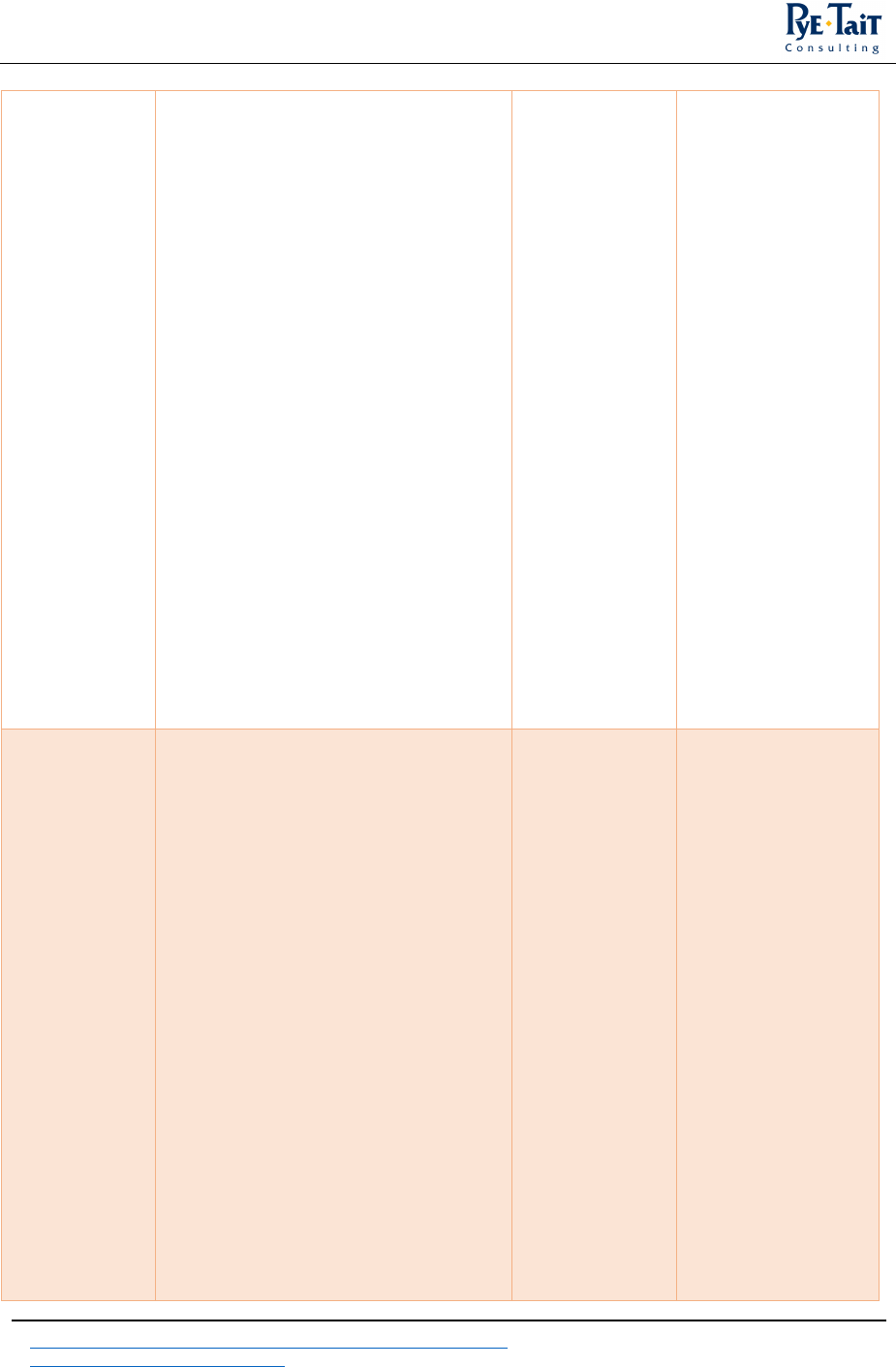
Quality assurance in energy efficiency and low carbon schemes
Page 70 of 136
following domestic measures:
• Cavity wall insulation
• Loft insulation
• Pitched roof insulation
• Flat roof insulation
• External wall insulation
• Draught proofing
• Floor insulation
• Energy efficient glazing and doors
When installers are approved they will
be licensed to use a BBA logo.
This logo can be used on letter heads,
advertisements, literature, quotations,
invoices, websites and vehicles. The
relevant installer number must be
shown directly below the logo, plus
the names of the measures for which
the approval has been achieved.
through the US
Government’s
Environmental
Protection
Agency.
assurance of quality
are processed
internally.
B
uilding
Research
Establishment
(BRE) Global
134
UKAS accredited, independent third
party approval organisation offering
certification of products, services and
systems to an international market,
including:
• Loss Prevention Certification
Board (LPCB) - many insurers
and specifiers look for the
LPCB mark of approval when
dealing with fire and security
issues.
• Building Research
Establishment Environmental
Assessment Methodology
(BREEAM) - the world's
leading environmental
assessment method to assess
new, existing buildings and
community scale development
This is
accredited by
UKAS, but is
independently
run.
Complaints and
quality control are
all internal to BRE
Global. There are
regular quality
checks on certified
products and
services.
133
http://www.energystar.gov/products/how-product-earns-energy-star-label Accessed:3/12/14
134
http://www.bre.co.uk/page.jsp?id=1763

Quality assurance in energy efficiency and low carbon schemes
Page 71 of 136
•
Microgeneration - certification
of products and installers
under the Microgeneration
Certification Scheme.
• Responsible sourcing - a BRE
Global framework standard
(BES 6001) demonstrates the
responsible sourcing of
construction products
• Environmental profiles - a
method of identifying and
assessing the environmental
effects associated with
building materials.
• ISO 9001 - the world's most
established quality framework
for assessing and certifying an
organisation's quality
management system
• ISO 14001 - an authoritative
demonstration of the quality
of an organisation's
environmental management
and commitment to the
environment.
• ISO 18001 - a specification
that helps to fully integrate
health and safety into
company policies and working
practices.
Keymark
The Keymark is a voluntary quality
mark for products and services.
Rigorous certification methodology
offers assurance that the service or
product demonstrates continued
compliance with all relevant European
Standards.
ANEC (European consumer
organisation for standardisation)
supports the Keymark as a visible and
It is jointly
owned by the
European
Standards
Organisations
(ESOs) CEN and
CENELEC. It is
operated by
certification
bodies that
have CEN
authorisation.
The Keymark licence
is not valid if a
Keymarked product
is
changed/modified,
however depending
on modifications it
might not be
necessary to carry
out complete new
initial type test

Quality assurance in energy efficiency and low carbon schemes
Page 72 of 136
independent confirmation of the
conformity of the product to
European standards.
Based on the Keymark scheme for
solar thermal products, testing,
inspection and certification are now
all organised into a single streamlined
process.
An annual
surveillance will be
carried out which
includes a detailed
inspection of the
product and
comparison with the
specification of the
original type tested
sample.
A special test can be
ordered through a
certification body by
anyone if the
requirements of the
certification
program or
registered values of
the certified product
is doubted.
The Solar
Keymark
135
The main quality label for solar
thermal. Part of the overall Keymark
Voluntary third-party certification
mark for solar thermal products,
demonstrates that the product
conforms to the relevant European
standards and fulfils additional
requirements.
To achieve the CEN solar thermal
product Keymark one shall follow the
general and specific rules:
• A quality system covering
production line based on the EN
ISO9000 series of standards
• Third party initial inspection of the
manufacturing site.
• Third party periodic surveillance.
It is jointly
owned by the
European
Standards
Organisations
CEN and
CENELEC. It is
operated by
certification
bodies that
have CEN
authorisation.
As above, this is
regularly checked.
135
The Solar Keymark, CEN Keymark Scheme (November 2010) The Solar Keymark/ The Quality Label for Solar Thermal Products in Europe

Quality assurance in energy efficiency and low carbon schemes
Page 73 of 136
Products covered:
• Solar thermal collectors
• Factory made solar thermal
systems
• Custom built systems
• Solar water heater stores.
E
nvironmental
Impact
Assessment
(EIA) Quality
Mark
136
This mark allows organisations that
lead the coordination of statutory EIAs
in the UK to make a ‘commitment to
excellence’ in their EIA activities and
have this commitment independently
reviewed.
Registrants have seven key
commitments:
• EIA management – effective
control.
• EIA team capabilities – all staff
undertake regular and relevant
continuing professional
development.
• EIA regulatory compliance –
delivering Environmental
Statements
• EIA context and influence -
coordinate effectively
• EIA content - undertake
assessments
• EIA practice – enhance the profile
of good quality EIA, on an annual
basis and by making appropriate
examples of our work.
• EIA presentation – commit to
deliver Environmental Statements
that set out information in
transparent way.
T
he scheme is
operated by
IEMA (Institute
of
Environmental
Management &
Assessment)
The EIA Quality
Mark Panel reviews
EIA Quality Mark
applications against
the EIA Quality Mark
application criteria.
This happens initially
when companies
wish to obtain the
EIA Quality Mark,
and there are
regular assessments
to make sure these
standards are being
met, internal to EIA.
Energy Saving
The Energy Saving Trust’s endorsed
Energy Saving
Products endorsed
136
http://www.iema.net/eiaq-what Accessed: 3/12/14

Quality assurance in energy efficiency and low carbon schemes
Page 74 of 136
Trust
Endorsed
Products
product standards claim to offer
consumers and businesses clear and
trusted information to help inform the
decision-making process when buying
new appliances and products.
Manufacturers of domestic energy
efficiency and low carbon measures
can apply to have their products
endorsed by the Energy Saving Trust
and included on the EST Online
database.
The Trust runs a database of endorsed
products, relating to domestic energy
efficiency measures, including
• Boilers
• Heating controls
• Glazing
• Chemical inhibitors
Products endorsed by the Energy
Saving Trust have to meet
recommended product and energy
performance criteria, agreed by
industry.
Trust
by the Energy Saving
Trust have to meet
recommended
product and energy
performance
criteria, agreed by
industry.
2.3.4 Warranties and guarantees
Warranties and guarantees are used in the domestic energy efficiency market as a proxy for quality
and a form of redress. They are an agreement between an installer and a consumer, ensuring that
any fault with an energy efficiency measure, occurring within the warranty or guarantee timescale, is
resolved free of charge by the installer. The term ‘guarantee’ typically refers to the work that has
been carried out, whereas the term ‘warranty’ usually relates to the actual project, for example,
workmanship may be guaranteed, while a boiler has its own warranty. However it should be noted
that the terms can also be used interchangeably, with some products having their own guarantees,
for instance.

Quality assurance in energy efficiency and low carbon schemes
Page 75 of 136
The Energy Companies Obligation (ECO) have established a list of ‘appropriate guarantees’
137
which
include:
• The Kinnell Green Deal Guarantee - specific to cavity wall insulation installations, Park Home
External Wall Insulation Systems and solid wall insulation installations
138
• The Jelf Insurance Partnership ECO Guarantee - specific to Cavity wall insulation
installations
139
• The Enterprise ECO Guarantee from Home Insulation & Energy Systems Quality Assured
Contractors Scheme (HIES) in conjunction with Consumer Protection Insurance Ltd and
Enterprise Insurance Plc. – specific to cavity wall Insulation and solid wall insulation
140
In addition there was previously the Renewable Energy Installation Guarantee Agency
(
REIGA)
Guarantee - specific to cavity walls insulation installations
141
, however REIGA ceased trading in
January 2014, following “the failure of protracted negotiations with our insurers to provide a deposit
and workmanship guarantee at a competitive rate”
142
.
Table 1
Table 1Table 1
Table 17
77
7: Organisations involved in guarantees and warranties
: Organisations involved in guarantees and warranties: Organisations involved in guarantees and warranties
: Organisations involved in guarantees and warranties
Guarantee
Overview
Organisations
involved
Complaint and quality
processes
Cavity
Insulation
Guarantee
Agency
143
144
The CIGA guarantee
–
run
by the Cavity Insulation
Guarantee Agency - is
given to each cavity wall
installation that meets
CIGAs requirements.
The guarantee is specified
to provide 25 years cover
for materials and
workmanship which meet
the relevant BBA or BS
specification and system
suppliers
CIGA also
operates and
administers the
Cavity Wall
Insulation Self
Certification
scheme (CWISC)
in association
with the British
Board of
Agrément and
National
Insulation
Association.
The installer sho
uld be
contacted first, in the existence
of any complaints. If the
problem remains unresolved,
then the CIGA should be
contacted.
CIGA should then arrange to
investigate the complaint, and
where necessary, ensure that
the appropriate remedial work
is carried out free of charge.
The maximum value of
rectification work is currently
137
OFGEM, (2014), Energy Companies Obligation: Appropriate Guarantees
138
OFGEM, (2014), Energy Companies Obligation: Appropriate Guarantees
139
OFGEM, (2014), Energy Companies Obligation: Appropriate Guarantees
140
OFGEM, (2014), Energy Companies Obligation: Appropriate Guarantees
141
OFGEM, (2014), Energy Companies Obligation: Appropriate Guarantees
142
http://www.solarpowerportal.co.uk/news/renewable_energy_installation_guarantee_agency_ceases_trading
143
National Insulation Association (August 2010) Code of professional practice: ‘Consumer Service is the key element for both our
association and its members’’
144
http://www.ciga.co.uk/about-ciga/ Accessed: 3/12/14

Quality assurance in energy efficiency and low carbon schemes
Page 76 of 136
recommendation.
£20,
000.
Biomass
Boiler
Guarantee
(Amgen
renewables)
145
This guarantee is intended
to last for 12 months after
the boiler is installed.
Run by Amgen
Renewables.
As above, the ins
taller should
be contacted first, and then the
overall guarantee scheme
which should then set about
investigating the issue.
BUFCA ECO
Technitherm
Guarantee
146
An Ofgem approved
guarantee dedicated for
cavity wall insulations,
hybrid wall insulations,
and hard to treat cavity
wall insulations.
Jelf Insurance
Partnership
Services Ltd and
Guarantee
Protection
Insurance Ltd.
CIGA Party
Wall
Insulation
Guarantee
147
An Ofgem ECO approved
guarantee, it covers party
cavity wall insulation.
Offered by
Cavity Insulation
Guarantee
Agency (CIGA)
Enterprise
ECO
Guarantee
148
A range of guarantees
covering cavity wall
insulation, solid wall
insulation, and park home
external wall insulation
systems. Present on the
Ofgem ‘ECO approved
guarantees’ list.
Home Insu
lation
& Energy
Systems Quality
Assured
Contractors
Scheme (HIES),
in conjunction
with Consumer
Protection
Insurance Ltd
and Enterprise
Insurance Plc.
Heat Pump
Guarantee
This guarantee is
marketed to last for 24
months for parts and
labour from the date of
installation or 33 months
from the date of
manufacture, whichever is
This is in
conjunction with
NIBE and
Benchmark
As above.
145
http://www.amgenrenewables.com/press-releases/biomass-boiler-service/ Accessed: 4/12/14
146
OFGEM, (2015), Energy Companies Obligation: Appropriate Guarantees V1.23
147
OFGEM, (2015), Energy Companies Obligation: Appropriate Guarantees V1.23
148
OFGEM, (2015), Energy Companies Obligation: Appropriate Guarantees V1.23

Quality assurance in energy efficiency and low carbon schemes
Page 77 of 136
shorter.
The guarantee is based on
the unit being installed
and commissioned by a
NIBE (domestic heating
sector manufacturer)
accredited installer,
services every year and
the Benchmark
documents completed.
Jelf Insurance
Partnership
ECO
Guarantee
149
A guarantee specific to
cavity wall insulation
installations.
The guarantee is included
in the ECO ‘approved
guarantee’ list.
Issued by Jelf
Insurance
Partnership
Services Ltd and
Guarantee
Protection
Insurance Ltd.
Jelf Insurance Partnership ECO
Guarantee
150
Kinnell Green
Deal
Guarantee
151
152
This guarantee is specific
to cavity wall insulation
installations, Park Home
External Wall Insulation
Systems and solid wall
insulation installations.
The guarantee is included
in the ECO ‘approved
guarantee’ list.
Issued by
Warranty
Services Ltd on
behalf of
Guarantee
Protection
Insurance Ltd
Consumers are recommended
to contact their Green Deal
provider to notify them of any
fault, if this is unsuccessful,
consumers must follow the
relevant claims procedure.
SWIGA Solid
Wall
Guarantee
153
An Ofgem approved ECO
guarantee, covering solid
wall insulation
installations (including
non-traditional
construction types).
Solid Wall
Insulation
Guarantee
Agency.
149
OFGEM, (2015), Energy Companies Obligation: Appropriate Guarantees V1.23
150
OFGEM, (2015), Energy Companies Obligation: Appropriate Guarantees V1.23
151
OFGEM, (2014), Energy Companies Obligation: Appropriate Guarantees
152
Kinnell Green Deal. Frequently Asked Questions. [Accessed: 02/04/2015]
153
OFGEM, (2015), Energy Companies Obligation: Appropriate Guarantees V1.23

Quality assurance in energy efficiency and low carbon schemes
Page 78 of 136
Other Heat Pump Warranties
Heat Pump Warranties usually come with a warranty of two to three years. Workmanship warranties
for heat pumps can last for up to ten years, for example through QANW (Quality Assured National
Warranties).
Many manufactures offer options for warranty extensions for a fee, which can operate for 20 years
or more. However these do require regular scheduled maintenance and yearly check by the
consumer.
154
Insulation Warranty Scheme
When a system is installed as part of the Green Deal the Green Deal Code of Practice requires that
the consumer is protected by an adequate warranty.
155
An example of an Insulation Warranty Scheme is the NICEIC Insulation Warranty Scheme:
• Provides installers with access to Ofgem and Green Deal insulation guarantees.
• NICEIC provides warranties for consumers that last up to 25 years.
• Protect the consumer in the event that the original installer is no longer able to correct
installation work.
• Where installers/manufacture are still trading they are required to put the installation right.
• When an insulation system installed as part of the ECO, Ofgem requires that an insulation
warranty is provided with each installation.
Solar panel warranty schemes
Solar installers’ levels of workmanship and their parts/labour warranties differ based on the installer
company. Typically, a parts and labour warranty will cover two years, in addition to the regular
manufacturer warranties on the individual solar components. A name brand solar panel will have a
20- to 25-year warranty on output, and one or two years for materials and workmanship. Most
manufacturers guarantee at least 80 per cent output (for the specified number of years).
However, there are different warranties based on the particular parts of the solar panel:
• Solar Panels: Full Warranty 20-25 years
• Batteries (non-grid tie systems): 5-10 years
• Inverters: 5-10 years
2.4 How the quality assurance framework fits together
The mechanisms identified in Table 18 below represent the key factors in place underpinning the
quality assurance framework for the Green Deal, ECO and MCS. Table 19 shows the key factors in
relation to HEEPS, Arbed 2 and Nest.
154
http://www.energysavingtrust.org.uk/domestic/content/air-source-heat-pumps Accessed: 4/12/14
155
NICEIC. The NICEIC Insulation Warranty Scheme

Quality assurance in energy efficiency and low carbon schemes
Page 79 of 136
Table 18
Table 18Table 18
Table 18: Main
: Main : Main
: Main quality assurance framework mecha
quality assurance framework mechaquality assurance framework mecha
quality assurance framework mechanisms
nismsnisms
nisms, Green Deal, ECO and MCS
, Green Deal, ECO and MCS, Green Deal, ECO and MCS
, Green Deal, ECO and MCS
Green Deal ECO MCS
Code of Practice Yes No Yes
Quality Mark Yes
No
Yes
Audit
certification bodies
energy suppliers and
certification bodies
certification bodies
Scheme specific
complaints procedure
where a Green Deal plan is
in place, handled by the
Ombudsman Service
No
handled by RECC or the
Trading Standards Institute
Certification
mandatory requirement
for installers to be certified
to PAS 2030
mandatory requirement
for installers to be certified
to PAS 2030
mandatory requirement
for installers to be certified
to MCS standards
Consumer route to
achieving redress
via the Ombudsman
Service, where a Green
Deal plan is in place
No scheme specific route
via REAL or Trading
Standards
Guarantee and/or
warranty
both mandatory under
CoP, guarantee of an
insurance contact, warrant
cover for 10 or 25 years
depending on product
for most measures,
warranty only. For boilers,
warranty only mandatory
from January 2015
currently only warranties,
insurance –backed
guarantees to be launched
late 2015
Standards
PAS 2030
156
, PAS 2031 for
certification bodies
PAS 2030
MCS 001 and relevant
Technology Specific
Schemes
Generic consumer
protection
Building Regulations,
Consumer Code Approval
Scheme, Consumer
Protection Act 1979
Consumer Protection Act
1979
Consumer Protection Act
1979
156
Qualifications for accredited assessors and installers are based on National Occupational Standards (NOS) which are underpinned by
PAS 2030

Quality assurance in energy efficiency and low carbon schemes
Page 80 of 136
Table 19
Table 19Table 19
Table 19: Main quality assurance framework mechanisms, HEEPS, Arbed 2 and N
: Main quality assurance framework mechanisms, HEEPS, Arbed 2 and N: Main quality assurance framework mechanisms, HEEPS, Arbed 2 and N
: Main quality assurance framework mechanisms, HEEPS, Arbed 2 and Nest
estest
est
HEEPS Arbed 2 Nest
Overarching scheme
management
Scottish Government
‘owns’ the scheme
Welsh Government
oversees delivery and
approves area-based
schemes
Welsh Government
oversees scheme delivery
Contracting of assessors
and installers
Local authorities in
Scotland are responsible
for assessing suitability,
qualifications and
competence of assessors
and installers they
contract with
Scheme managers
Willmott Dixon and Mellin
Homes are responsible for
assessing suitability,
qualifications and
competence of assessors
and installers they
contract with
Delivery provider British
Gas checks qualifications
and competence of
assessors and installers,
and offers in-house
training as well
Audit
Technical inspection by a
Home Energy Scotland
energy advisor to check
measures are suitable for
properties
Independent technical
monitoring agent monitors
installations
Technical inspection of
properties following
scheme acceptance to
check proposed measures
are suitable for properties
100% of properties
inspected a year post-
completion of works
100% of properties
checked by an assessor
post completion of works
Scheme specific
complaints
procedure/achieving
redress
Consumer would have to
contact local authority in
first instance
Consumer would have to
contact the scheme
manager in first instance
Customer satisfaction
surveys undertaken
Consumer would have to
contact British Gas in first
instance
Customer satisfaction
surveys undertaken
Accreditation
Domestic energy assessors
in Scotland must be part of
organisations accredited
by the Scottish
Government
Domestic energy assessors
must be accredited by a
scheme approved by DCLG
Domestic energy assessors
must be accredited by a
scheme approved by DCLG
Guarantee and/or
warranty
Relevant product
warrantees and
guarantees issued to
consumer
Relevant product
warrantees and
guarantees issued to
consumer
Relevant product
warrantees and
guarantees issued to
consumer
Work guaranteed for 2
years
Standards
Qualifications based on
National Occupational
Standards (NOS) in turn
based on PAS 2030
Qualifications based on
National Occupational
Standards (NOS) in turn
based on PAS 2030
Qualifications based on
National Occupational
Standards (NOS) in turn
based on PAS 2030
Generic consumer
protection
Building Regulations,
Consumer Protection Act
1979
Building Regulations,
Consumer Protection Act
1979
Building Regulations,
Consumer Protection Act
1979

Quality assurance in energy efficiency and low carbon schemes
Page 81 of 136
3.Issueswithquality assuranceinthedomesticenergy
efficiencymarket
3.1 Introduction
This chapter describes the research findings in relation to
the issues identified
within the quality
assurance framework for energy efficiency and low carbon schemes. Findings are presented
thematically, and where appropriate make reference to specific schemes and initiatives in scope
(as described in more detail in Chapter Two). Where relevant, sections also include information on
‘what needs to change’ – drawn from respondent perspectives, rather than the conclusions of the
researchers. Sub-sections include the number of respondents that raised the issue, in brackets
after the sub-section heading.
3.2 A highly complex landscape
Chapter Two provides an overview of the wide range of energy efficiency
and low carbon
initiatives and schemes currently available to consumers. In addition to multiple organisations,
processes and schemes, there are also differences between the schemes that operate across
Great Britain, and those in Scotland and Wales. There is a consensus among research participants
that this creates a highly complex landscape which lacks transparency and is difficult for
consumers to navigate.
‘It [the energy efficiency and low carbon landscape] is a minefield [for consumers] as it is so
complex and hard to understand’
Manufacturer of energy efficiency measures
‘The range of energy efficiency schemes and organisations is bewildering’
Professional body in the energy sector
Feedback from the depth interviews states
that
there is anecdotal evidence suggesting work has
been in progress to create and implement a Memorandum of Understanding between the various
schemes. However additional questioning indicates that it is not clear which organisations are
leading on this, specifically what might be achieved, when it will be in place, or whether it will be
sufficient to simplify the landscape from a consumer perspective.

Quality assurance in energy efficiency and low carbon schemes
Page 82 of 136
3.2.1
Gaps in
consumer knowledge and understanding
about
‘what good looks like’
(
38
respondents)
Research conducted in 2011 stated that many consumers at the time were unfamiliar with the
range of energy efficiency and low carbon technologies and measures that can be installed in the
home, and that many were similarly unaware of Government schemes such as the Feed-in Tariff
(FiT). This report also stated that ‘there are complex issues involved in making decisions about the
suitability of technology and the possible savings. Online help is available…but not all consumers
are likely to know about it, and not everyone has access to the internet’.
157
Customer contacts to
Citizens Advice consumer helpline shows consumer confusion about the Green Deal and ECO, and
confusion between the two schemes
158
.
F
eedback from the
respondents to the
call for e
vidence points to
dissatisfaction
among
consumers presented with a myriad of schemes and potential organisations able to undertake
energy efficiency and low carbon work, as it can take a long time just to decide how to proceed.
The consensus among research participants is that consumers still do not have a strong
knowledge or understanding of domestic energy efficiency measures, or the Government schemes
that enable installation of such measures for home-owners. In turn they are unlikely to
understand the difference between good quality and poor quality energy efficiency assessments
and installations
159
.
‘Why three schemes for what the
customer sees as one job?
The energy efficiency and low carbon
fuel sector is not a "one stop shop" and has been made very complex’
Quality assurance body, energy efficiency
The provision of quality assurance ‘badges’ for consumers, notably the Green Deal Code of
Practice and Quality Mark, are not widely recognised or understood by the general public, and
therefore respondents say that consumers have no ‘useable’ benchmark standard.
‘
M
ost consumers have no idea that it
[Green Deal Code of Practice]
exists,
so
they have no
point of
reference to compare companies against’
‘The Quality Mark isn't readily recognised by the public, and because it isn't widely recognised,
even some customers of the better companies (those that try to make things as clear as possible)
don't really recognise or understand it’
Energy assessors
157
Consumer Focus: Centre for Consumers and Essential Services, University of Leicester (2011) Making the connection: strengthening the
advice, complaint handling and redress framework
158
Consumer Futures (2014) Response to the Energy and Climate Change Select Committee on the Green Deal watching brief part 2
http://data.parliament.uk/writtenevidence/committeeevidence.svc/evidencedocument/energy-and-climate-change-committee/green-
deal-watching-brief-part-2/written/6187.pdf
159
Also identified by the Office of Fair Trading in 2012 as part of their research into home insulation

Quality assurance in energy efficiency and low carbon schemes
Page 83 of 136
In
Scotland, f
eedback from the telephone interviews points out that there c
an be inconsistency
between HEEPS schemes where they are managed by different local authorities. The local
authority’s own operating standards and procedures can potentially add a further layer of
consumer protection which in some, although not all cases, may be harder for consumers to
understand.
3.2.2 What needs to change?
Respondents suggest that consumers need to know and understand ‘what good looks like’ when
having energy efficiency and low carbon measures assessed or installed in their homes. To
facilitate this, research participants recommend the following:
• a guidance document and checklist for consumers to help them spot problems and check
installation quality
• information to make consumers aware of their rights in relation to quality assurance, legal
and other protections, and how to complain and seek redress where relevant, depending
on where they live and which Government scheme(s) apply to them
• a requirement for assessors to make consumers aware of the risk of installing measures
from a financial perspective, notably that savings in consumption or costs cannot be
guaranteed
• a requirement for assessors and installers to make consumers fully aware of warranties
and guarantees, as well as any exclusion clauses that may compromise the level of
consumer protection
• independent assessment and advice to be detached from installations in order to avoid
the risk of mis-selling. This is already taking place in Wales.
3.3 Lack of one central body with overarching responsibility and accountability
3.3.1
Not
‘
joined up
’
in England
(34 respondents)
There are multiple organisations involved in assessment and installation of
energy efficiency
and
low carbon work, which have varied remits, and can operate in silos rather than collectively. There
is no one central body that has overarching responsibility and accountability for quality assurance
in the market.
For example the
Department for Energy and Climate Change (DECC) ‘owns’ Green Deal and ECO
,
although each has a separate governance arrangement. However the Department for
Communities and Local Government (DCLG) ‘owns’ the Competent Persons Scheme (CPS) and the

Quality assurance in energy efficiency and low carbon schemes
Page 84 of 136
Energy Pe
rformance Certificate (
EPC).
The latter stems from
DCLG’s remit
for ensuring buildings in
the UK meet the standards required by the EU’s Energy Performance of Buildings Directive, which
states that:
•
all properties (homes, commercial and public buildings) must have an Energy Performance
Certificate (EPC) when sold, built or rented
•
larger public buildings over 500m² must display a Display Energy Certificate (DEC)
•
all air-conditioning systems over 12kW must be regularly inspected by an Energy assessor
DECC has oversight of the Green Deal certification body process (but formal accreditation of the
certification bodies is undertaken by UKAS), while DCLG is responsible for approving energy
assessor accreditation schemes in England and Wales. DCLG approved accreditation schemes
cover:
•
EPCs for existing dwellings
•
EPCs for new dwellings
•
EPCs for non-dwellings (commercial buildings)
•
DECs
•
air conditioning inspection reports
Research participants stated that as ownership ‘falls between two stools’, this has resulted in the
multiple approaches to certification of energy assessors, which were designed and are managed
differently, rather than operating in a complementary manner.
‘The two [DECC and DCLG] do not appear to be joined up. They run completely different
regulatory
schemes and there is a need to co-design a new regime’
Energy supplier/utility company
3.3.2 A more streamlined approach in the devolved nations
(26 respondents)
The
Home Energy Efficiency Programmes for Scotland (HEEPS)
is
‘owned’ by the
Scottish
Government, and its operational delivery is managed by Scottish local authorities. This means that
there is one overarching scheme ‘owner’, with one clear regulatory regime.
In Wales, the Welsh Government ‘owns’ the Arbed 2 and N
est
schemes, b
oth of which are sub
-
contracted to scheme managers for operational delivery, and like in Scotland, operate in a more
streamlined manner with a core remit and regulatory regime.
3.3.3
What needs to change?
Research participants agree that there is an u
rgent need to simplify the landscape of domestic
energy efficiency and low carbon work, with a number of priority actions as follows:

Quality assurance in energy efficiency and low carbon schemes
Page 85 of 136
•
one central body within the UK Government able to take ownership and accountability for
all energy efficiency and low carbon schemes, and bring them together under one core
regulatory framework of technical and quality standards
• similarly, this central body should be the sole avenue for consumers that have queries,
complaints or quality issues
• this may entail the creation of an energy efficiency and low carbon Ombudsman which
could evolve from that of the Green Deal Ombudsman by widening its powers and
responsibilities (respondents did not state whether this would span the whole of Great
Britain or need to be nation-specific)
3.3.2
Inconsistent approach to interpreting and monitoring quality assurance
(
29 respondents)
Research part
icipants pointed to the risks where there are
different approaches
being
used to
interpret and monitor standards and processes for quality assurance. This is predominantly
because of the high number of organisations that have some kind of role in the delivery of energy
efficiency schemes, particularly those that apply across Great Britain namely Green Deal and MCS.
However it is also linked to a lack of one overarching energy efficiency and low carbon consumer
ombudsman.
Respondents state that there can be some inconsistencies in monitoring of quality assurance
within the Home Energy Efficiency Programmes for Scotland (HEEPS), which is attributed to the
different approaches used to manage the schemes adopted by the various local authorities
contracted to deliver them. The scope of work within HEEPS programmes is largely determined by
the local authority as the scheme manager. However this has limited impact on the approach
taken towards enforcement of quality assurance (see 3.3.3).
Feedback from the telephone interviews states that the Nest scheme is run by well-resourced
organisations, underpinned by the Welsh Government which takes overarching and full
responsibility for delivery via a managing agent. Similarly Arbed 2 in Wales is delivered by 2
scheme managers. Respondents state that the Welsh model enables closer oversight of quality
assurance, with fewer organisations involved that are able to respond quickly if there are concerns
about quality standards.
3.3.3
Limitations in enforcement
of quality assurance (21 respondents)
Where there are overarching
issues
, these
contribute to limitations in the ways in which quality
standards are enforced. Due to inconsistent approaches to interpreting standards and conflicting
sanctions, depending on the organisations involved, research participants state that it can be very
difficult to ‘police’ the industry.
This issue can be exacerbated by:

Quality assurance in energy efficiency and low carbon schemes
Page 86 of 136
• lack of information sharing between organisations and
• limited powers to actually take action
This
research has found particular issues in respect of the Energy Company Obligation (ECO).
For
example Ofgem has certain regulatory requirements, such as oversight of technical monitoring for
ECO, but research participants perceive that it has little control over the quality assurance
framework. Statutory constraints mean Ofgem is unable to secure wide-ranging consumer
protection for all ECO measures, resulting in a “weak link”.
‘
the biggest gap
[in consumer protection]
is that Ofgem do not set a standard at the outset against
the entire supply chain can be appropriately audited, measured, compared and enforced’
Energy installer
‘Ofgem is ideally placed to provide the organisational infrastructure [for ECO], but sadly lacking in
effective powers to implement consumer protection properly’
Professional body in the energy sector
Research conducted in 2014 found a range of concerns about frameworks in pl
ace to support the
enforcement of standards and quality assurance for ECO. This report states that as each separate
aspect of the supply chain is covered by separate registration and certification bodies, ‘in the
event of failure the path of enforcement is not clear’.
160
3.3.4
Greater scope for enforcement of quality assurance
in devolved nation schemes
(22
respondents)
On the whole respondents consider that the HEEPS scheme is better structured to enable quality
assurance to be enforced, largely because operational quality issues are identified through
independent technical monitoring, and because data arising from this is reported back to local
authorities able to take action quickly to address the problem. As one local authority manages
schemes in their own area, there is not the same range of different organisations with potentially
conflicting remits and powers, therefore local authorities are in a position to respond to the issue
directly.
Furthermore respondents state that the contracting process
, whereby local authorities contract
scheme delivery directly to businesses, is robust and incorporates a range of checks to ensure the
contractors have the appropriate training and qualifications to be deemed competent to deliver
160
Centre for Sustainable Energy (2014) The ECO: an evaluation of year 1: final report to Energy UK

Quality assurance in energy efficiency and low carbon schemes
Page 87 of 136
work to a high quality st
andard.
‘The important difference [between HEEPS and ECO] is that as it is tendered for there is more
information gathered and held about all the installers taking part’
Energy installer
Similarly in Wales, a smaller number of scheme managers are
in a position to rigorously evaluate a
smaller pool of potential assessors and installers, for the Arbed programme.
‘The Arbed scheme like the Scottish HEEPS has the advantage that it is tendered for by a relatively
small number of installers whose qualifications, business processes and history can be checked out’
Energy installer
3.4 Gaps in consumer protection
3.4.1 Limitations for ECO
(36 respondents)
A number of consumer protections can be more closely linked with customer service and sales,
rather than technical installation issues. There is very little assessment of the suitability of the
measures in meeting consumer needs in some schemes. Quality assurance can therefore be more
implicit than explicit. This is most prevalent within ECO. The majority of research participants
consider that ECO is ‘less customer focused [compared with the Green Deal and HEEPS]’.
‘
[There is] n
ot as much focus on protection for consumers
[of ECO]
who aren't paying for this’
Energy installer
‘As the recipients of ECO are usually the less well-off it is counter intuitive to protect them less’
Insurance provider
This is partly attributed to the core objective of the scheme
–
ie to achieve
carbon savings, which
in turn dictates the way it is delivered. In particular this influences the nature of monitoring. The
primary function of technical monitoring for ECO is to check that installations are delivering the
anticipated carbon savings, rather than to check the quality of them per se.
‘ECO reporting requi
rements are extremely complex. This means a huge amount of effort goes into
collecting evidence and verifying scores. All this work is carried out to ensure suppliers meet the
requirements of DECC and Ofgem, however a lot of it is of no real benefit to the customer’
Energy supplier organisation

Quality assurance in energy efficiency and low carbon schemes
Page 88 of 136
3.4.2
Potential issues relating to Green Deal (21 respondents)
Research participants also questioned how consumers might be affected where they buy and sell
properties that have a Green Deal plan. Consumers that inherit Green Deal properties may be
compelled to take on this ‘debt’ without having received any form of financial advice from a
qualified assessor. In addition there is the risk that these individuals may question the extent of
their liability to pay the monthly charge, as they have no contractual relationship on paper with
the Green Deal Provider, and it may be unclear to them whether this simply transfers over with
the property deeds. Furthermore it is not clear whether mortgage lenders would consider any
restrictions to borrowing if there was a Green Deal Plan attached to a property.
3.4.3
Stronger provision in Wales
(19 respondents)
Respondents state that the Arbed scheme in Wales have a more comprehensive approach to
consumer protection. The Arbed scheme incorporates a number of stages to consumer
engagement, satisfaction and quality assurance, including:
• an initial property survey at the scoping stage within an area
• a follow up technical appraisal post scheme approval to ensure measures are suitable for
the property
• an information pack for consumers at the point of completion including tailored advice on
energy efficiency and use of products/technologies installed
• a customer satisfaction survey
• an inspection one year post completion to check the measures are working as they
should.
‘This scheme [Arbed 2] has a very good quality regime’
Quality assurance body
3.5 Certification bodies
Accreditation
is the confirmation administered by an objective third party that the certification
process is undertaken in a way that meets defined standards. UKAS is the official national
accreditation body in the UK. Certification bodies therefore have been accredited by UKAS to
evaluate installer and assessor organisations against the energy efficiency standards (such as PAS
2030). It should be noted that many research participants used the terms ‘certification body’ and
‘accreditation body’ to mean the same thing – i.e. the role fulfilled by the certification body. This
appears to be because the process of obtaining certification can be referred to as the process of
obtaining PAS 2030 accreditation. Therefore certification bodies can sometimes be called
accreditation bodies. The following sections consider both certification bodies and the
accreditation process.
3.5.1 Issues with certification bodies (37 respondents)

Quality assurance in energy efficiency and low carbon schemes
Page 89 of 136
Research participants have identified a number of issues with the remit fulfilled by third party
certification bodies in the quality assurance framework:
• the infrastructure allows for inconsistency across the range of certification bodies in the
design and execution of background checks and procedures when accepting new
assessors (flagged up particularly in relation to Green Deal)
• the number of quality audits that certification bodies are required to take is too low,
enabling poor quality assessors and installers to continue to operate (flagged up
particularly in relation to Green Deal). Audits are discussed in more detail in section 3.10
below
• the ‘most robust’ certification bodies are deemed to have the highest fees, whereas if
they were not-for-profit organisations rather than commercial businesses there may be a
more level playing field in setting and applying standards
• these ‘more robust’ schemes can be less popular with installers that are required to ‘jump
through more hoops’ to demonstrate compliance
• there is no one overarching standard to make clear:
- the process to investigate allegations of non-compliance
- the actions that certification bodies can take in the event of non-compliances,
the information that should be shared at the end of an investigation, and
the organisations that should be privy to such information sharing
- a lack of clear guidance means that interpretation of standards can vary between
certification bodies. With a competitive market for accreditation schemes,
assessors are likely to migrate to the scheme that is cheapest and/or asks the
least questions. Robust governance needs to be in place to ensure a level-playing
field
• the infrastructure allows scope for rogue traders to continue operating in the market
having re-emerged under a new name, and registered with a new certification body
‘One company folds, but can set up again under a different name and just g
o to a new certification
body…these phoenix companies are the biggest problem’
Energy supplier/utility company

Quality assurance in energy efficiency and low carbon schemes
Page 90 of 136
Research participants stated particular concerns about
the
lack of power
available to certification
bodies to ensure redress for the consumer. For Green Deal and MCS work, while certification
bodies can suspend or withdraw memberships if quality standards are not met, there can be
inconsistency between organisations as to the approach they take to get an installer to return to a
consumer and remedy any defects. Once certification is removed, there may be little the
certification body can do to ensure redress for the consumer at this stage.
“Our ultimate sanction against an installer who transgressed, was to remove their certificate”
Green Deal certification body
Ofgem is currently consulting
161
on the features that a certification scheme would need to
demonstrate to be recognised as an ‘equivalent’ to the MCS scheme, however until this closes and
findings are analysed, it is not clear what may or may not emerge as a result.
Furthermore identification of non
-
compliance is reliant upon having an appropriate standard in
place, as certification bodies are required to audit 1 per cent of work undertaken to PAS 2030, to
ensure quality standards are met. Therefore any issues with the PAS 2030 as a standard will
undermine the rigour of the certification body audit.
Issues in relation to inconsistent interpretation of the PAS 2030 may be
addressed by
the revised
PAS 2031, which has the intention of making the PAS clearer, and will include guidance on how to
apply PAS 2030.
Research participants also consider that certification bodies should operate to one core
framework of rules that define the process for investigating, reporting and taking action against
instances of non-compliance.
3.6 Accreditation process
3.6.1 Issues with the
accreditation process
(
39 respondents)
This research has identified a range of issues with the
accreditation process
within the quality
assurance framework, namely:
• the infrastructure of multiple certification bodies allows the potential for assessors to ‘slip
through the net’. For example if assessors accredited to undertake Green Deal work fail an
audit with one certification body, they have the option to lodge their reports with another
• there is no requirement for conditions imposed by one certification body on assessors and
161
Consultation due to close on 29
th
May 2015

Quality assurance in energy efficiency and low carbon schemes
Page 91 of 136
installers
(such as penalties for failing an audit)
to
apply across the board,
or to share
information of this nature between certification bodies
• this means it can potentially take a long time for quality issues to be identified and acted
upon
• there are different accreditation regimes for EPCs and Green Deal assessment reports
(GDARs), increasing complexity and costs for businesses and consumers
• installers undertaking work under ECO do not have to be certified by a UKAS accredited
certification body in the same way that Green Deal accredited installers do
Many certification bodies operate across the whole of the UK and therefore these issues are also
pertinent to the devolved nations.
‘
[Suspensions as a GD installer] would not prevent them working on the scheme for a different
utility or managing agent and gaining work through brokerage’
Energy installer
‘One of the problems with the accreditation framework is that it is composed of different bodies
inter-reliant on others but with no-one taking ultimate responsibility for the quality of measures’
Energy supplier organisation
3.6.2 What needs to change?
Respondents sugges
t that
certification
bodies could play a stronger role in helping to improve
quality standards. One issue relates to the range of different bodies which have some inter-
reliance on others, but with no one overarching body able to take responsibility for quality
assurance.
Therefore respondents concluded that one industry-wide accreditation body able to set and
enforce quality standards could act as the nucleus of one standard quality framework, audit and
inspection regime. This single scheme would remove the risks associated with multiple
certification bodies, but would need to take into consideration the differences between nations
and their legislation, schemes, qualifications etc.
Furthermore such a body could operate tighter controls in relation to assessing the required level
of competence. For example the required level of competence could link to the Qualifications and
Credit Framework (QCF) in England and Wales, and to the equivalent SQCF in Scotland.
A small number of individuals that took part in a telephone interview said that UKAS could create
and manage a central repository of all activities, to be used as a reference point for those who
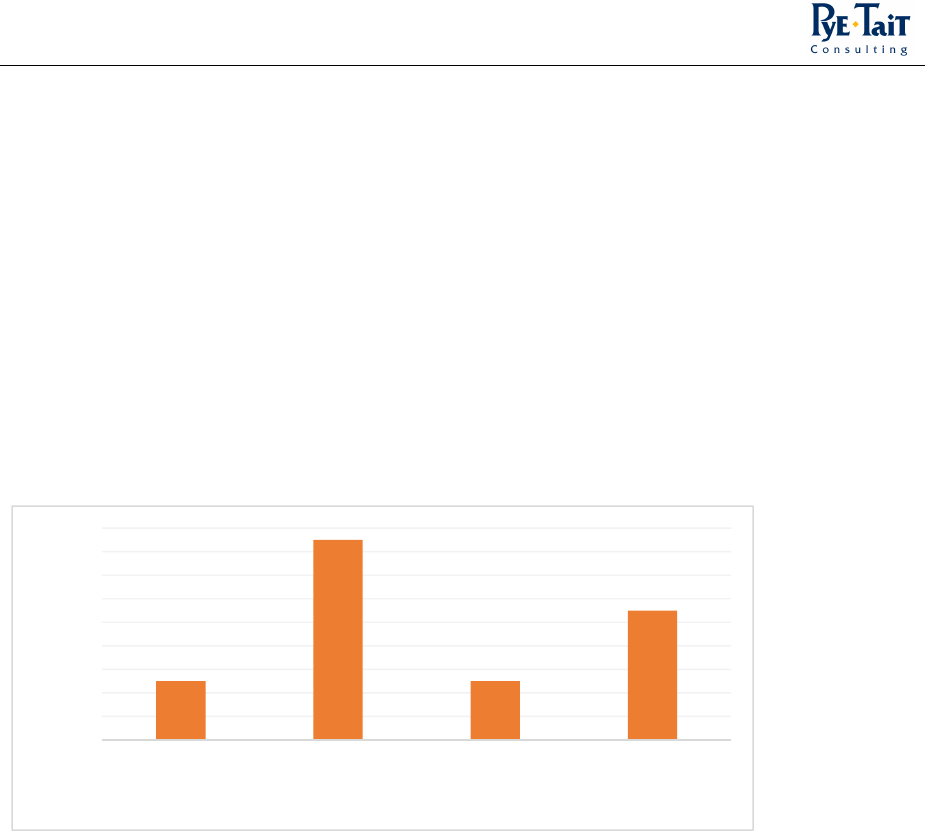
Quality assurance in energy efficiency and low carbon schemes
Page 92 of 136
wanted to check the performance of installers. This would rely upon certified installers reporting
their installation and audit results to their certification bodies, who in turn would feed this
information to UKAS.
3.7 Guarantees and warranties
3.7.1 Fitness of purpose of guarantees and warranties
The majority of those responding to the call for evide
nce said that guarantees and warranties in
relation to energy efficiency and low carbon schemes are generally fit for purpose but with some
issues (Figure 10). Reasons for this are discussed in the sections that follow.
Figure 10
Figure 10Figure 10
Figure 10: Respondent views on the
: Respondent views on the: Respondent views on the
: Respondent views on the
fitness of purpose of guarantees and warranties
fitness of purpose of guarantees and warrantiesfitness of purpose of guarantees and warranties
fitness of purpose of guarantees and warranties
Base 38 respondents
3.7.2
Do not offer universal coverage
(22 respondents)
There are variations as to whether guarantees and warranties apply, depending on the measure(s)
installed, particularly for Green Deal, MCS and ECO. Ofgem publishes a list of appropriate
guarantees for ECO work, which shows that not all measures are covered. Furthermore Ofgem
guidance states that they do not approve or endorse any of the listed guarantees.
Similarly, n
ot all G
r
een
D
eal
measures
are
subject to consumer protection
of this nature,
depending on the type of home. Feedback from the depth interviews pointed out that guarantees
do not always have to be provided for a flat whereas they would do for a house. It is unclear why
there are these conflicting requirements. There are also discrepancies between the guarantees
that need to be offered for Green Deal work and those offered under ECO. The former
encompasses a higher number of measures. For ECO, at the time of writing, only solid and cavity
wall insulation installations require guarantees, however boilers will also need guarantees from
April 2015.
Feedback also stated that warranties and insurances may not always be issued for work
5
17
5
11
0
2
4
6
8
10
12
14
16
18
Completely fit for
purpose
Generally fit for
purpose with some
issues
Not at all fit for
purpose
Don't know
# of respondents

Quality assurance in energy efficiency and low carbon schemes
Page 93 of 136
undertaken through MCS, but reasons
for this were not
given.
3.7.3
Exclusion clauses and caveats
(43 respondents)
There is a consensus among research participants that consumers lack
freedom to shop around
for the best policy, as this is done by the installer. Instead the consumer shops around for their
preferred choice of installer, if at all, and may be unaware that installers can use a range of
different guarantees or warranties. In the absence of one core standard, installers are able to
select the different options which may differ in the cost to the installer and protections for the
consumer. Therefore the consumer may be left without adequate cover, and reliant on general
consumer protections, such as the Consumer Credit Act (CCA) to seek redress.
This issue is also exacerbated by the consumer lack of knowledge and understanding, and a
potential misconception that they will be fully covered by a Government-run scheme. This offers a
‘false sense of security’. Research participants stated that consumers are not made sufficiently
aware of exclusion clauses and caveats in the same way as they are likely to be if buying from the
financial services sector.
‘This [the role of guarantees and warranties in protecting consumers from sub
-
standard work] is
arguably the greatest weakness [of the Green Deal] as the warranties and guarantees are full of
caveats’
Professional body in the energy sector
‘We constantly see examples of insurance backed guarantees that offer little or no protection for
consumers, often with astonishingly generous exclusion clauses for the insurer’
Quality assurance body in the field of energy efficiency
3.7.4 Consumers do not know enough about them
(18 respondents)
The evidence states that in relation to Green Deal
and ECO in particular, guarantees and
warranties are not highlighted particularly well to the consumer, as the time spent assessing the
properties typically focus on products, savings, and installation processes.
It is not clear whether audit processes check whether consumers were either given, or that they
understand the relevant warranties and guarantees. For example many warranties require annual
inspections, and if consumers are unaware of this, their policy would be invalid in the event of a
claim. This raises a question in relation to aftercare, and whether this is sufficient in the event of
installation problems, particularly if consumers do not know how to seek redress or who to
contact.
In Wales, there is a
more clearly defined aftercare programme for N
est
, with consumers able to
contact British Gas with any questions for a 2-year period after the work was installed (work being

Quality assurance in energy efficiency and low carbon schemes
Page 94 of 136
guaranteed during this time). However it is less clear whether managing agents become divorced
from the aftercare process in respect of other schemes in Great Britain.
Another concern for research participants is whether warranties and guarantees are transferred
to the new householder, where properties are sold or tenancies come to an end. This does not
seem clear to consumers.
3.7.5
Issues with m
anufacturer
kite marks
The majority of those responding to the call for evidence consider that manufacturer kite marks
are generally fit for purpose but with some issues (Figure 11).
Figure 11
Figure 11Figure 11
Figure 11
: Respondent views on the fitness of purpose of manufacturer kite mark
: Respondent views on the fitness of purpose of manufacturer kite mark: Respondent views on the fitness of purpose of manufacturer kite mark
: Respondent views on the fitness of purpose of manufacturer kite mark
s
s s
s
Base 43 respondents
A number of reasons were
cited in respect of the issues around kite marks:
• Some manufacturer schemes do not necessarily cover the installation of the product
under all circumstances. As it may be the installation that was at fault, rather than the
product, this can limit the usefulness of manufacturer kite marks. This indicates scope for
potential conflict between manufacturers and installers
• Warranties are typically underpinned by PAS 2030 as the quality standard so if there are
shortcomings in PAS, the warranty may not be effective either
• Different energy efficiency and low carbon measures may be covered through different
schemes. This can add a further layer of complexity making it harder for consumers to
understand what their rights are. This was cited as a particular problem for Green Deal
4
22
3
14
0
5
10
15
20
25
Completely fit for
purpose
Generally fit for
purpose with some
issues
Not at all fit for
purpose
Don't know
# of respondents

Quality assurance in energy efficiency and low carbon schemes
Page 95 of 136
‘Sometimes issues occur when multiple guarantees are
in place
and there is no clear guidance
about which guarantee should be used in which situation’
Green Deal certification body
‘Warranties and insurance are good where they are issued - probably in less than 10% of projects
does proper consumer protection take place [under MCS]’
Guarantee/warranty provider
3.7.6
Insufficient protection where companies fail
(25 respondents)
The consensus among research participants is that certain warranties and guarantees offer
greater security to consumers where they are insurance-backed, ie incorporate provisions for if
the company goes out of business. This is particularly pertinent for the longer warranties, some of
which extend to 25 years. As schemes allow non-insured guarantees to be issued, this leaves
consumers vulnerable if companies fail.
However feedback from the telephone interviews states that even if insurance-backed guarantees
had to be issued in all cases, that this alone would not be sufficient to assure consistent levels of
quality. This is because there is no one standard as to what encompasses a robust insurance-
backed guarantee for the domestic energy efficiency and low carbon market. It would be the role
of the Financial Conduct Authority (FCA) to develop such a standard, but research participants
consider that there is no strong motivation for this to happen, as energy efficiency and low carbon
measures have not been embraced by the mass market.
Furthermore it should be noted that the Renewable Energy Installation Guarantee Agency ceased
trading in January 2014, as a result of the breakdown of negotiations with insurers to provide a
competitively priced deposit and workmanship guarantee, which indicates there may be
difficulties associated with the agreement and introduction of appropriate warranties and
guarantees that meet consumer needs as well as insurer requirements.
Feedback from the telephone interviews stated that consumers would receive stronger protection
if insurance-backed guarantees were used for the Arbed scheme in Wales.
‘There needs to be a new standard for consumer protection guarantees, which ought to be
enforced by the Financial Conduct Authority. In particular, there should be standard requirements
for deposit protection schemes, workmanship/installation protection guarantees and lifetime (5,
10, 25 year) installation guarantees'.
Quality assurance body in the field of energy efficiency
‘An FCA regulated insurance company gives its policy holders automatic access to the Financial
Ombudsman and the financial services compensation scheme if it were to be unable to look after
its policy holders’
Guarantee/warranty provider

Quality assurance in energy efficiency and low carbon schemes
Page 96 of 136
3.7.7
What nee
ds to change?
Feedback from the research data identifies a role for the Financial Conduct Authority (FCA) to set
one core standard for insurance-backed guarantees for energy efficiency and low carbon work.
To be fully effective, warranties and guarantees must be underpinned by a robust quality
framework which may require third party certification on a measure by measure basis.
Participants to the research also identified a need for consumers to be made aware of the
warranties available for each of the energy efficiency measures being installed in their properties,
with fairer and clearer exclusion clauses. This is particularly pertinent given a sense of reliance on
“Government-approved” schemes among consumers, who subsequently may not fully read and
understand all the relevant documentation. An energy efficiency ombudsman could play a role in
preventing consumers from being penalised in such cases.
Research participants also emphasised the need for a process to ensure consumers know about
and crucially, understand warrantees and guarantees, which would include them signing up to
indicate this (in the same way as they would if buying financial services products). This could build
upon the approach already taking place in Wales for the Arbed scheme, whereby consumers
receive a detailed information pack not just about the products that have been installed in their
homes, but tailored advice on how to make best use of the systems, and copies of any guarantees
and warranties. Energy saving behaviour advice could include a reminder of the consumer
responsibility in relation to warranties – for example the need to get boilers serviced annually.
3.8 Standards for installers
3.8.1
PAS 2030
PAS 2030 is the core standard spanning a wide range of energy efficiency
and low carbon
measures. Research participants give this standard an average rating of 5.5 out of 10, in relation
to its role in underpinning quality. One of the main reasons for this is a lack of consistency in
accrediting organisations to PAS 2030, which undermines quality of installers in the industry.
Whilst it is considered that it can be interpreted in different ways by certification bodies, this issue
may be addressed through PAS 2031 guidance on how to apply the PAS 2030.
162
‘As a customer, you t
ake it as gospel that all PAS 2030 accredited installers are the same
–
they are
not’
Professional body in the energy sector
Table 20
provides a summary of feedback about PAS 2030 from the call for evidence
, where
162
However PAS 2031 is not referenced in ECO

Quality assurance in energy efficiency and low carbon schemes
Page 97 of 136
research participants explained their
reasons for providing the rating on the 1
-
10 scale
.
Table 20
Table 20Table 20
Table 20
: Reasons for ratings of usefulness for PAS
: Reasons for ratings of usefulness for PAS: Reasons for ratings of usefulness for PAS
: Reasons for ratings of usefulness for PAS
2030
20302030
2030
Ratings of fewer than 3 (2 respondents)
This lowest rating was given because of the respondent’s concern that there were few checks of the
quality of background of the installer. The respondent identified that certified PAS 2030 installers
“only have to do one installation that is checked in order for them to be certified”
Therefore, the respondent recommended that there be more regular audits of installers to
demonstrate their compliance throughout the year, as the annual audit did not suffice.
Ratings of 5-6 ( 8 respondents)
Justifications for middling scores mainly focused on the above concern regarding the quality of
installers and the perceived shortcomings of the installer audit. Other issues related to conflicting
levels of consistency when accrediting organisations using PAS 2030 as the standard.
There were criticisms of the PAS 2030 for not ensuring compliance in terms of customers; one
respondent remarked:
“PAS 2030 does little to ensure consumers receive a good quality and appropriate installation.”
Ratings of 7 and above (5 respondents)
Those who have higher scores did so because they generally valued the standard, and perceived it to
be a useful base which lent consistency.
“PAS 2030 is effective at assuring quality … as it provides, robust, universal and consistent standards
which all PAS 2030 compliant installers must abide by”
Some respondents praised PAS 2030 in its fundamental form, but pointed to the ongoing nature of
such a standard and the need for constant monitoring:
“PAS 2030 is effective when the required initial assessment and on-going surveillance is carried out by
an independent UKAS accredited certification body.”
However, some felt that better use could be made of the standard, particularly if there was increased
specificity within the scheme. For example,
“It is an umbrella standard covering many installation categories therefore by its nature is isn't
measure specific”
One respondent commented that in Wales, issues in respect of quality in the available workforce,
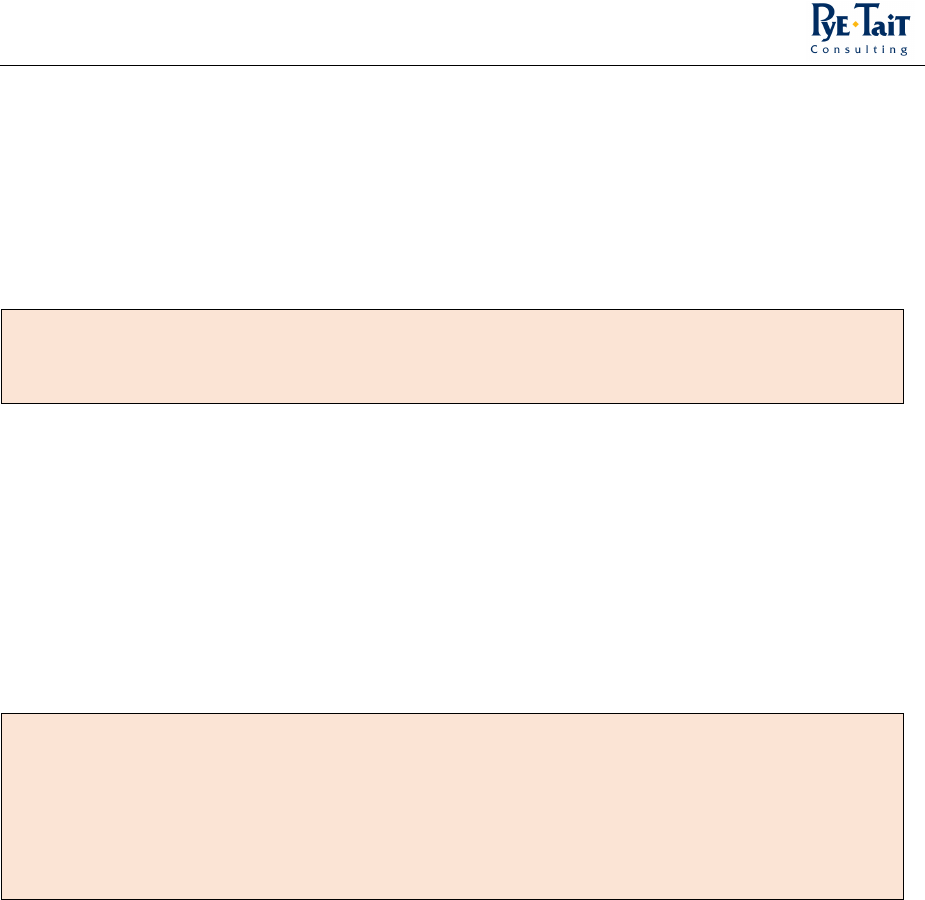
Quality assurance in energy efficiency and low carbon schemes
Page 98 of 136
were not necessarily helped by having PAS 2030 as the standard.
Research participants also stated that it is a
minimum
standard.
As there are multiple
bodies
able
to certify to PAS 2030, it may be too easy to obtain – for example installers seeking PAS 2030
certification do not have to demonstrate a previous track record. Furthermore companies offering
a fast track route to certification can do so using an ‘off the shelf’ Quality Management System
(QMS) which may not be fully fit for purpose.
‘It [PAS 2030] is similar in nature to other Quality Management Standards such as ISO 9001, but is
a lot simpler and quicker to achieve’
Training provider website
3.8.2
Lack of awareness and understanding among consumers
(29 respondents)
Furthermore feedback from the telephone interviews states that the majority of consumers are
unfamiliar with PAS 2030 as the core standard. It is not widely referenced within building
regulations, which focus more on embedding energy efficiency and low carbon measures into
buildings rather than the quality of their installation. Thus any poor performance of PAS 2030
accredited installers may not be passed on to certification bodies to take action, as consumers are
unlikely to be aware of this route.
‘If no
-
one is aware of it [PAS 2030] what is the point?’
Manufacturer of energy efficiency products
‘PAS2030 is a reasonable standard but people don't know whether installations reach that
standard or not’
Green Deal provider
3.8.3
What needs to change?
Research participants pointed to a need to strengthen the PAS 2030 as the main technical
standard for energy efficiency and low carbon installations. This will require clearer wording to
reduce the scope for ambiguity and inconsistent interpretation, and should also integrate scope
for consumer protection through reference to suitable product warranties and insurance-backed
guarantees.
3.9 Lack of impartiality
3.9.1
Lack of impartiality in the infrastructure
(
44 respondents)
Research participants identified a number of loopholes offering scope for mis
-
selling within Green
Deal. The main issue is that Green Deal providers can employ and financially reward Green Deal
assessors for recommending certain measures. This lack of independence undermines the concept
that assessment should be impartial. Some providers do not pay assessors for carrying out a

Quality assurance in energy efficiency and low carbon schemes
Page 99 of 136
survey, but instead on the measures that are recom
mended and subsequently installed. There is
currently no requirement for Green Deal Advice Reports (GDAR) to provide ‘whole house’
recommendations, as opposed to just the ones that have been selected by the assessor, in theory
following a discussion with the consumer).
‘The Green Deal has a serious fundamental flaw. The majority of assessors are salespeople who
only recommend products their company installs’
Manufacturer of energy efficiency products
‘How can anyone give impartial energy saving advice to a customer on this basis?’
Green Deal accredited installer
‘There are huge challenges in delivering impartiality within Green Deal’
Certification body
Issues also relate to ECO and MCS, with some of the same organisations undertaking multiple
roles in carrying out assessments as well as installations, thus they have a vested interest in
recommending certain products, with no guarantee that these are the most suitable for the
consumer. One example cited was of the domestic Feed in Tariff for solar PV, only payable to
consumers with properties in EPC Band D or above, which creates an incentive for solar PV
companies to ensure EPCs generate Band D ratings.
There appears to be greater impartiality in the area
-
based schemes in Scotland and Wales, whe
re
consumer engagement is carried out to understand the level of interest in retrofit schemes,
accompanied by advice and guidance alongside the property assessment survey. There is no
discernible benefit or advantage to scheme managers for recommending certain measures over
others. For example scheme managers for Arbed in Wales receive a management fee but no
incentives for recommending certain products.
Similarly the HEEPS scheme in Scotland uses local authorities to contract with installers and
assessors to undertake work in specific areas, but have no affiliation with any particular providers.
3
.9.2
Rogue salesmen and cold calling ‘scams’
The
Citizens Advice
Service reports that
unsolicited
phone calls or door
-
to
-
door ro
g
u
e salesmen
are a significant consumer problem in the sector. In the six months to the end of February (2014)
it received 1,250 Green Deal complaints to the Citizens Advice consumer helpline
163
, of which 880
were identified as scam or possible scams. Of these 480 were prompted by a cold call.
163
Covering Great Britain

Quality assurance in energy efficiency and low carbon schemes
Page 100 of 136
It is not clear whether this is also an issue for schemes in the devolved nations, which also involve
a certain amount of “door-knocking”; at the time of writing there was no evidence to suggest that
this is the case.
3.9.3
Uninten
tional
mi
s
-
selling
–
Green Deal
(12 respondents)
There are two factors which contribute to
the
unintentional mis
-
selling of a Green Deal plan, one
of which is poor quality training for assessors (discussed in more detail in section 3.12). Where
assessors lack a comprehensive skills and knowledge base, there is a risk that they do not
recommend measures that are the most suitable to meet the consumer needs, taking into
consideration the building fabric as well as consumer behaviour.
The second factor relates to
flaws in assessment tools and approach (discussed in more detail in
section 3.11). If methodology and/or software is not fit for purpose at producing an accurate
occupancy assessment report, this may result in misleading projections about cost savings as a
result of having energy efficiency and low carbon measures installed. A rise in energy prices could
undermine any future savings, unless the rise was less than the amount being saved. Some
respondents thought that the assessment process does not typically make consumers aware of
this risk, in the same way that they would be if buying from the financial services sector.
‘
There remains some room [in the Green Deal] for mis
-
selling which is detrimental for consumers.
The main area relates to the 'payback' for installation of the measures where factors such as
product efficiency performance and return on investment can, to a certain extent, be manipulated
to present a more favourable projection than the reality may deliver. This runs the risk of Green
Deal finance deals being misleading’
Quality assurance body in the field of energy efficiency
Research undertaken by Consumer Focus
164
also questioned whether there could be scope for
‘secondary mis-selling’, where consumers that purchase or rent houses with a Green Deal plan
attached to them, may find they inherit a ‘debt’ without having received any financial or other
form of advice about it, or any information about their right of redress in case of problems.
3.9.4
Green Deal Home Improvement Fund
The voucher scheme designed to promote take up of the Green Deal
in England and Wales
has
prompted concerns among research participants, half of whom reported that it is not at all fit for
purpose (Figure 12). In particular it has been stated that the scheme was poorly designed by trying
to combine a range of measures in order to be eligible for a voucher, which may not be
appropriate to meet consumer needs. Furthermore it is not clear that this scheme has the
consumer protection related to a Green Deal plan, for example research participants consider that
164
http://www.consumerfocus.org.uk/files/2010/12/Green-Deal-misselling-v1.0.pdf
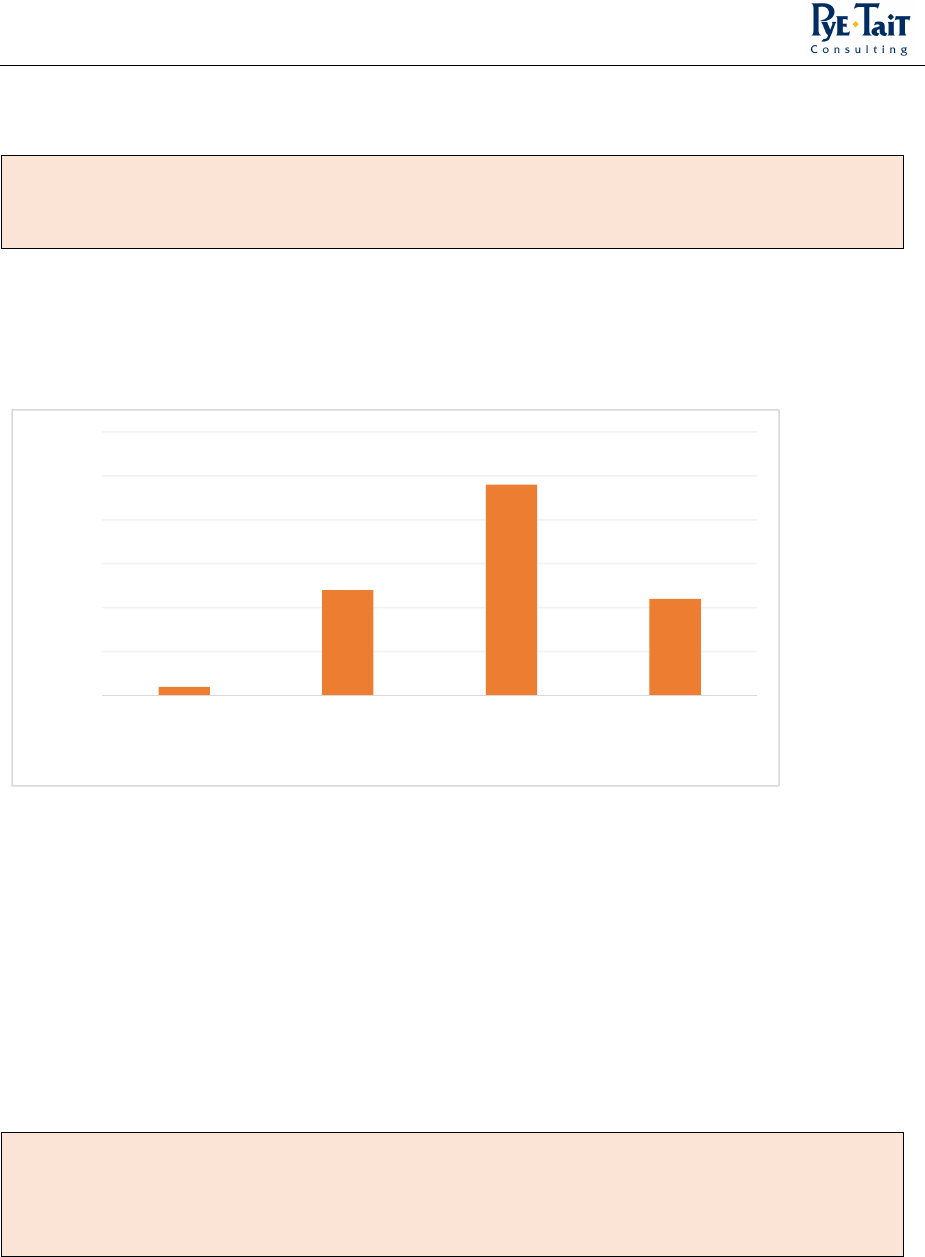
Quality assurance in energy efficiency and low carbon schemes
Page 101 of 136
it sits outside of Ombudsman jurisdiction.
‘Quality issues have resulted from too many organisations trying to offer lots of schemes in the
interest of chasing the available funding’
Installer of energy efficiency measures
No feedback was provided about the equivalent Cashback Scheme in Scotland that would indicate
any concerns in relation to quality assurance for consumers.
Figure 12
Figure 12Figure 12
Figure 12
: Respondent views on the fitness of purpose of the Green Deal H
: Respondent views on the fitness of purpose of the Green Deal H: Respondent views on the fitness of purpose of the Green Deal H
: Respondent views on the fitness of purpose of the Green Deal H
ome Improvement Fund
ome Improvement Fund ome Improvement Fund
ome Improvement Fund
Base 48 respondents
3.10 Audit
3.10.1
Sampling and sample size for audit
(27 respondents)
Feedback from telephone interviews stated that PAS 2030 is not sufficiently independently
monitored, with a need for more regular audits to be undertaken throughout the year, rather
than the minimum of 1 per cent (minimum of 1 installation). This can reduce the opportunity to
drive up quality on an on-going basis.
‘More regular audits should be carried out on installers to show th
at they are compliant
throughout the year and not just when it come to the time of their annual audit’
Green Deal Provider
Research participants state that the sample size for audit can be too low,
ie not enough properties
are audited, and that in particular there is not enough independent technical monitoring of
installations, notably for Green Deal and MCS work. Under ECO there is a commercial and
regulatory requirement for robust technical monitoring. However as previously stated, this
focuses predominantly upon the carbon savings achieved rather than the quality of the
1
12
24
11
0
5
10
15
20
25
30
Completely fit for
purpose
Generally fit for
purpose with some
issues
Not at all fit for
purpose
Don't know
# of respondents

Quality assurance in energy efficiency and low carbon schemes
Page 102 of 136
installation.
Another issue is that sampling may not be as random or independent as it could be, as annual
inspections from certification bodies offer advance warning, and the ability for installers to select
the project. Whilst a number of research participants suggest that a more robust approach would
be an unannounced audit, they acknowledge the difficulties of this as consumers would need to
be in to offer access to the property. An alternative approach would be to introduce mystery
shopping.
‘
Although there is an inspection regime for MCS, it is not particularly well monitored and assessed.
MCS installers are assessed once per year and only a handful of installations are inspected on that
day. These are usually "selected" by the installer to ensure they are "good" installations. So while
the assessment organisations are impartial, they are not always as "random" as they could and
should be’
Quality assurance body in the field of energy efficiency
There are also concerns that certain aspects of quality assurance are not covered through the
audit processes, notably assessments – for example checking whether the consumer was given
the right advice, or whether recommended measures were suitable for the property. Checks are
not in place to see whether consumers were mis-sold or pressured into financial packages.
Issues in relation to sampling and selecting the right aspects to audit relate to the Green Deal, ECO
and MCS predominantly. Arbed and Nest in Wales both adopt a different approach whereby all
properties are subject to inspection post-installation, with part of the approach checking whether
measures are suitable for properties and that systems work correctly. Independent technical
monitoring takes place for the HEEPS scheme in Scotland, however there was no feedback from
respondents about any issues encountered with this process.
3.10.2
Not sufficiently driven by risk
(45 respondents)
Where sampling is low, it me
ans quality issues can take longer to be identified, or ‘slip through the
net’ entirely. To increase sample sizes would, however, have an impact on costs, and could be
unrealistic in practice. A balance needs to be struck in terms of the costs of monitoring as these
will ultimately be paid for by consumers, even where they do not pay directly. Under ECO, the
costs of the scheme are ultimately borne by all energy consumers.
‘
The only way to ensure the best quality is for the work to be randomly inspecte
d by a totally
independent body - the only problem with this is it will add additional costs to the Green Deal and
it will discourage installers from promoting or getting involved in a scheme which in its present
form is struggling to get going’
Energy efficiency installer
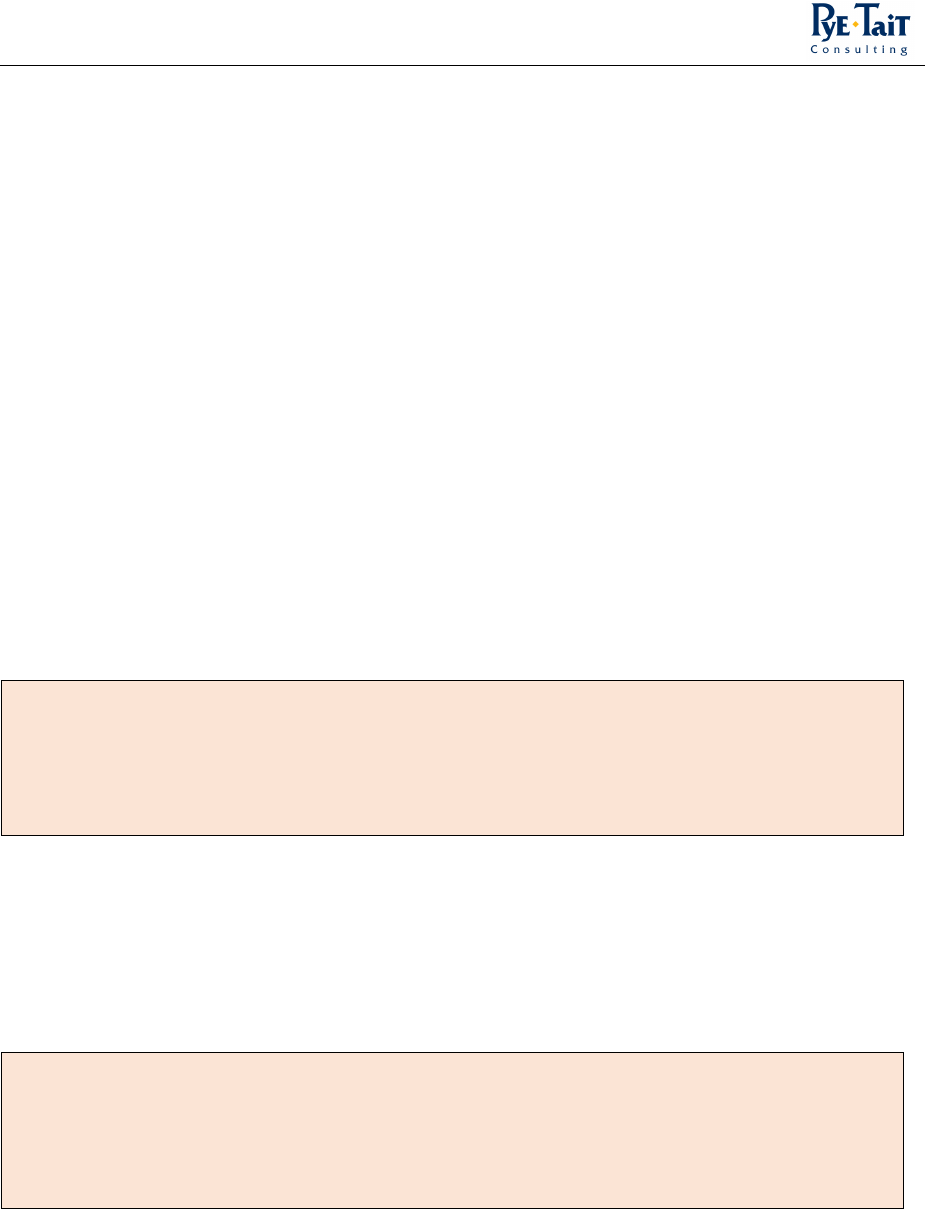
Quality assurance in energy efficiency and low carbon schemes
Page 103 of 136
F
eedback from telephone interviews points to a need to establish a risk
-
based audit regime
. This
could reflect the scale of the financial risk, for example the likes of EPCs compared with a £30,000
loan for Green Deal work. Known loopholes that could enable the system to be exploited could
also be a trigger. For example a certain volume of consumer complaints could also be a trigger.
Work where there is a greater risk would trigger a higher sample size for audit.
3.10.3
Paper
-
base
d ‘light touch and tick
-
box’ approach
(19 respondents)
Concerns were also raised about ‘light touch’ paper
-
based audits for ECO. This relates to an issue
around scheme compliance being focused on paperwork being compliant, rather than a robust
assessment of the quality of the installation as well as its suitability for the property and the needs
of the occupant(s).
3.10.4
Lack of data mining and information sharing
(24 respondents)
There is an
opportunity to undertake more data mining of the infor
mation amassed across all the
energy efficiency and low carbon schemes. This approach may enable ‘red flagging’ of individuals
and companies, which could then be used as a trigger within a risk-based audit regime.
‘The use of data mining could identify
assessors who are persist
ently outside of the "norms",
eg
identify assessors who statistically have a higher incidence of recording lower levels of loft
insulation for a particular age and type of property, compared to the "norm"’
Professional body in the energy sector
Such an approach would be further strengthened by information sharing between organisations
that conduct audits. Research participants consider that Ofgem data in particular would help to
address industry-wide failures and enable action to be taken against installers failing standards. In
the absence of data sharing, non-compliant individuals have the freedom to operate with other
companies or installer networks that would be unaware of this.
‘As Ofgem has collated both RdSAP and qu
ality failure reasons via obligated suppliers technical
monitoring, it would seem obvious that this data is made available to both the software houses
and the PAS 2031 accreditation [certification] bodies’
Energy supplier/utility company
3.10.5 What
needs to change?
Research participants suggest a
risk
-
based approach to auditing would use a ‘red flag’ approach,
generated through data mining, to trigger more regular audits in the event of greater risk, or
patterns that indicate increased likelihood non-compliance. Where feasible, one standard set of
paperwork should be used to help streamline the process and enable data sharing between

Quality assurance in energy efficiency and low carbon schemes
Page 104 of 136
relevant organisations.
Other suggestions included:
• An external quality assurance system established to audit the auditors used by Green Deal
providers
• More auditing of assessments and inspections taking place at pre as well as post
installation stages
• Inspections of RdSAP data (see 3.11 also)
• Longer-term monitoring via repeat audits/inspections, to identify issues that may take
longer to emerge in a property.
3.11 Flaws in assessment tools and methodology
3.11.1
Energy Perfo
rmance Certificate (EPC) underpinning assessments
(31 respondents)
Research participants identified
two
flaw
s
in the use of EPCs to und
erpin occupancy assessment
reports for energy efficiency and low carbon measures. This is because the EPC assessments were
designed for a different purpose, ie to present a cautious estimate of the energy demand of a
house, thus protecting potential house buyers and mitigating the risk that ratings could be
exaggerated.
This approach will have a significant impact in certain scenarios, for example where the age of a
property is unknown, the assessor will enter the older of the likely age ranges. However this now
means that this same process may artificially inflate the potential energy saving assessment,
undermining its accuracy in some cases.
On the other hand, the ‘in-use’ factors used in the GDAR downgrade the predicted energy savings
of certain measures. This potentially has a neutralising effect, however, was not raised by
respondents.
‘EPC conventions were designed for the purposes of being needed upon construction, rental and
sale of buildings. They were not designed for ECO or Green Deal. As a general rule, conventions
will sway the assessor to be cautious, so not to over inflate the rating on the EPC. But of course for
ECO and Green Deal the effect of this is that savings from measures could be overinflated’
Professional body in the energy sector
'EPCs have become a key cornerstone of Government energy efficiency schemes - ECO, Green Deal,

Quality assurance in energy efficiency and low carbon schemes
Page 105 of 136
RHI and FiT, but the Scheme Operating Requirements and audit regimes were put in place before
this use of EPCs evolved, and have not been re-visited and revised to better reflect how EPCs are
now used’
Professional body in the energy sector
Furthermore the process of developing the EPC is based on minimal disruption to the house
holder in the form of a short survey and limited activity in the property. Thus the EPC assumes
mechanisms such as boilers and thermostats work as they should, when they may not, again
putting the accuracy of the assessment at risk. This is also a factor for the Nest scheme in Wales
where EPCs are used to determine householder eligibility.
3.11.2
Flaws in assessment
methodology
(26 respondents)
Feedback from
the call for e
vidence points to issues with the underpinning assumptions used in
the methodology used to measure and generate projections of energy savings in the home. RdSAP
software is used to assess how much energy will be consumed in a dwelling, when delivering a
pre-defined level of comfort and service provision. The assessment is based on standardised
assumptions for occupancy and behaviour.
However research participants identified issues with this approach as follows:
• inaccurate U value conventions for solid wall properties
• incorrect assumption that cavity walls are insulated in homes built from 1982
165
• consumer behaviour can be taken into account, but this can change (some interview
participants acknowledged that it would be difficult to build forecasting of future
behaviours into the assessment methodology)
• some companies use a median projection of energy savings, to offer a more realistic
assessment, but there is nothing in place to stop organisations using the highest
projection of potential savings to encourage the customer to buy the recommended
measures
• the potential for change in the energy price is not taken into consideration, and can affect
the energy savings that can be achieved, although it was acknowledged this would be
impossible to include with any accuracy
The UK Government has announced an intention to review RdSAP “to ensure it remains fit to
165
Consumer Focus, (2012), Filling the Gaps http://www.consumerfocus.org.uk/publications/filling-the-gaps-accuracy-of-green-deal-
advice-for-cavity-walled-homes

Quality assurance in energy efficiency and low carbon schemes
Page 106 of 136
deliver the policy initiatives that it underpi
ns
”
166
.
3.12 Training and competence
3.12.1
Inconsistency in quality of training provision
Research participants gave an average rating of 5.9 out of 10 in relation to the effectiveness of the
Level 3 Diploma in Green Deal Advice. There is a consensus among research participants that the
quality of training for energy efficiency assessors and installers is inconsistent, with many courses
available that do not require prior experience, are too short and are not fit for purpose to provide
the necessary skills and competence. This is fuelled by competition between providers to offer the
shortest and cheapest training courses, and has enabled assessors and installers to gain a relevant
qualification without truly being competent. More detailed feedback is shown in Table 21 below.
166
https://www.gov.uk/standard-assessment-procedure

Quality assurance in energy efficiency and low carbon schemes
Page 107 of 136
Table
Table Table
Table
21
2121
21
: Reasons for ratings of usefulness
: Reasons for ratings of usefulness : Reasons for ratings of usefulness
: Reasons for ratings of usefulness
of the Level 3 Diplom
of the Level 3 Diplomof the Level 3 Diplom
of the Level 3 Diplom
a in Green Deal Advice based on
a in Green Deal Advice based on a in Green Deal Advice based on
a in Green Deal Advice based on
National Occupational Standards (NOS)
National Occupational Standards (NOS)National Occupational Standards (NOS)
National Occupational Standards (NOS)
Ratings of less than 5 (1 respondent)
The respondent disagrees with the nature of the course providers, stating that as long as companies
pay, they receive the qualification:
“What levels of accountability do they hold, or is it about selling products?”
Ratings of 5-6 (8 respondents)
Again, the accessibility, and the perceived poor quality inspired by this accessibility formed most of a
basis for justification for these middling scores. Respondents highlighted that the qualification in its
most raw form met all of the needs, however:
“there are many Green Deal Advisors being trained up from a point of having no knowledge
whatsoever in this sector, trained by training providers who are giving a very poor service, and
seemingly assessors allowing them to qualify with extremely limited knowledge and experience in
some key areas, and in the worst cases I've come across trainers giving trainees blatantly incorrect
information.”
This lack of knowledge of Green Deal Assessors was further criticised by other respondents stating:
“No specific pre-requisite for a technical skill to become a GDA.”
“The depth of assessors’ knowledge is not great enough to cover all the measures and scenarios, so
often they look for standard measures they are comfortable in recommending.”
Ratings of 7-8 (7 respondents)
Justifications for higher scores were varied in reasoning. The “good track record and review process”
was praised, but there were criticisms of the “highly variable and not sufficiently professional” Green
Deal advice and assessment.
One respondent recommended that to remedy this “Energy advisor training should be tougher and
controlled by Local Authority licensing”
Ratings of 9 and above (1 respondent)
The respondent who scored the highest rating found that the qualification was a “very effective way of
following competence standards”

Quality assurance in energy efficiency and low carbon schemes
Page 108 of 136
‘In some cases assessors are allowed to qualify
with extremely limited knowledge and experience
in some key areas…there are too many fast-track options’
Energy assessor
‘For a fee you can qualify in 3-5 days and be capable of assessing almost 50 technical measures
with no prior experience’
Energy efficiency installer
3.12.2
Lack of C
ontinuing Professional Development (CPD)
(11 respondents)
Furthermor
e there is a gap in relation to on
-
going training, with no mandatory requirement for
CPD.
‘Th
e major gap is in CPD for energy assessors where there isn't a common syllabus of training so
quality will be varied. There also needs to be a mechanism where training delivery is more tightly
accredited (particularly regarding length of training). It would also be worth reviewing the entry
pathways for installers as training isn't a mandatory element’
Sector Skills Council
3.12.3 Common Minimum Technical Competencies (CMTCs) for installers
Research participants gave an average rating of 5.3 out of
10 in relation to the effectiveness of the
CMTCs in assuring quality (Table 22). Feedback stated that the CMTCs are too generic, and that
the overarching standard needs to be raised. Furthermore the language used may be complex and
difficult for the workforce to understand.
Table 2
Table 2Table 2
Table 22
22
2: Reasons for ratings of usefulness for
: Reasons for ratings of usefulness for : Reasons for ratings of usefulness for
: Reasons for ratings of usefulness for Common Minimum Technical Competencies
Common Minimum Technical CompetenciesCommon Minimum Technical Competencies
Common Minimum Technical Competencies
(
((
(C
CC
CMTC
MTCMTC
MTCs
ss
s)
))
)
Ratings of 3 or fewer (2 respondents)
The lowest ratings were given predominantly for the perceived poor standard. Respondents
commented:
“It is what it is- minimum! How low can you go?”
“Some installation course only last a day, so how can they ensure that the install is carried out to the
highest standard and that the installer is full competent.”
There was also a call for the raising of these standards in order to protect the consumer.

Quality assurance in energy efficiency and low carbon schemes
Page 109 of 136
Ratings of 4-5 (7 respondents)
Again, the lower scores were given because of the restricted assessment level that was recognised by
some respondents who branded it “subjective, depending on who is doing the assessment”
Such respondents perceived that alternative methods of ensuring competency should be pursued, with
one stating:
“A better way [of ensuring competency] is requiring a better ratio of NVQ or qualification
requirements.”
Ratings of 6-7 (9 respondents)
Respondents who gave a score of 6 or 7 pointed to the non-specific nature of the CMTC, calling it
generic and needing a greater level of detail.
Other respondents echoed earlier concerns of the nature of such a review, as they perceive “it will only
ever tell us about the day the review took place.”
This shows a criticism of the structure of the assessment, and respondents call for a better monitoring
of this in the field and in the office.
Ratings of 8 and above (4 respondents)
Those who gave higher scores did so because they generally valued the CMTCs.
Respondents noted it as being “effective…very useful in defining set competency standards”
However these respondents also were not entirely satisfied by the CMTC, there were criticisms about
its format:
One respondent stated the “language in which they are written is very complicated so interpretation is
often needed”. They proposed that a CMTC Qualification Guide would be “very helpful” to ensure a
standardized interpretation across the industry.
A different respondent noted the need for the certification body to “carry out the appropriate
assessments and surveillance onsite and at the office to demonstrate these competencies in practice.”
Another respondent concurred noting that it is:
“crucial that installers, inspectors have the minimum competency knowledge/experience to ensure the
install and inspection is completed accordingly.”
3.12.4 Competent Persons Scheme (CPS)
Research participants gave an average rating
of 6 out of 10 in relation to the effectiveness of the

Quality assurance in energy efficiency and low carbon schemes
Page 110 of 136
CPS in assuring quality
(Table 23
)
.
A Competent Person must be registered with a scheme
approved by the Department for Communities and Local Government (DCLG). Members of the
scheme are assessed against an independent standard (CMTCs) and the scheme builds in annual
checks.
The scheme also offers financial protection in the event of non-compliant work, and operates a
complaints procedure which can mean escalation to an ombudsman if necessary. However annual
inspections represent only a small proportion of completed work, so there is still scope for an
audit regime to be improved.

Quality assurance in energy efficiency and low carbon schemes
Page 111 of 136
Table
Table Table
Table
23
2323
23
: Reasons for ratings of usefulness for
: Reasons for ratings of usefulness for : Reasons for ratings of usefulness for
: Reasons for ratings of usefulness for
the Competent Persons Scheme
the Competent Persons Schemethe Competent Persons Scheme
the Competent Persons Scheme
Ratings of less than 6 (1 respondent)
This respondent rated the Competent Persons Scheme 1 out of a possible 10, questioning its
robustness and role in the quality assurance framework.
Ratings of 6-7 (12 respondents)
The middling and higher ratings were for mixed reasons. One respondent considered the CPS as a
“success in the construction industry as a whole, as it offers a benchmark for a specific skill set.”
However others who rated this as a 6 or 7 held reservations about the effectiveness of the CPS in terms
of the overarching quality this can account for as “the inspections are a small percentage of the work
completed” and because of this the CPS is “not fool-proof”.
Ratings of 8 (5 respondents)
The higher ratings considered the scheme effective, and for some respondents this lies specifically in
the financial protection within the scheme. One such respondent stated that this meant that quality is
“effectively assured” for customers, as in the event of non-compliant work, customers can claim the
CPS’s financial protection.
Another respondent who scored the CPS highly commended the quality assurance that stems from
“Assessment of members against independent standard which applies to them before acceptance on
the scheme and annual assessments of competence”.
Others had no further comment stating that “this is currently working well”, and others claiming that
they are “generally happy with the scheme”.
Criticisms from these respondents were few, but some flagged up the effectiveness of the scheme as
existing only when “the required initial assessment and on-going surveillance is carried out by an
independent UKAS accredited certification body”, thus highlighting the importance of impartial, regular
checks on quality.
Ratings of 9 and above (3 respondents)
Those who scored the scheme highest commended the simplicity of the scheme and the effectiveness
thereof. One of these respondents noted that the scheme works “well both from a technical
monitoring basics and also quality of installation and in our opinion should be used on all schemes”.

Quality assurance in energy efficiency and low carbon schemes
Page 112 of 136
[CPS is an] ‘effective use of delegation for self
-
certification by the national body(ies) for
accreditation to particular trade disciplines’
Quality assurance body in the field of energy efficiency
3.12.5
What needs to change?
There is a need to standardise training provision and raise quality standards, which research
participants suggest can be achieved through:
• a requirement for CPD
• minimum number of guided learning hours to be a requirement of all relevant training
courses
• pre-requisite skills and experience for acceptance on to relevant training courses
3.13 Risks and potential consequences for consumers
3.13.1
Lack of trust among consumers
(37 respondents)
This research has found that
the perception of industry stak
eholders is that
trust among
consumers is steadily waning, as the number of stories in the press about rogue traders and
flawed installations increases, and this is particularly in relation to the Green Deal. Research
participants stated that ‘a badge is no guarantee of competence or quality’. Action needs to be
taken to enforce the scheme’s rules. A recent statement in Parliament announced that around 10
per cent of Green Deal assessor organisations and 12 per cent of Green Deal installers have had
their authorisations removed, in consequence of non-compliance issues against the Green Deal
Code of Practice.
167
‘If adhered to, the [Green Deal] Code of Practice is excellent. However, many people in the
industry are not adhering to it’
Energy assessor
3.13.2
Complaints
may
not
be
pursued,
which may mask
the full extent of problems
(29
respondents)
As there are multiple organisations with different remits and responsibilities across the various
schemes, it can be difficult for consumers to know where to go when trying to make a complaint
or seek redress.
167
http://www.parliament.uk/business/publications/written-questions-answers-statements/written-question/Commons/2015-02-
12/224408 [Accessed 17th March 2015]

Quality assurance in energy efficiency and low carbon schemes
Page 113 of 136
Research participants echoed findings from a study undertaken in 2011, which stated that ‘i
f
consumers are expected to pursue complaints through the certification bodies or through UKAS
there is great potential for consumer confusion and detriment. There is a risk that consumers will
be “pushed from pillar to post” and find the whole process so daunting that they give up before it
is resolved’.
168
‘The whole framework of consumer protection is confu
sing with many different organisations
offering many, sometimes overlapping consumer protection policies. This can result in no or
delayed action while the consumer establishes who to contact in event of a complaint’
Green Deal certification body
Wit
h ECO there is no
scheme
-
specific
complaints
handling process
, and complex contracting
arrangements can make it difficult for consumers to know is responsible for the quality of their
installation. Also consumer protection bodies have noted that consumers may be less likely to
complain where they receive measures for free
169
.
This issue is less prevalent for the HEEPS scheme in Scotland, and Arbed and Nest in Wales, where
there are fewer delivery organisations and a clearer understanding among consumers about how
to gain further information, have questions answered, or make complaints.
3.13.3 Financial and emotional detriment where remedial work is not done or incurs high costs
(19 respondents)
The g
aps and loopholes in
the quality assurance framework pr
esent
a high risk for consumers,
with the full extent of possible damage unclear at this stage. There are concerns among some
research participants that damage to properties could occur, resulting in high costs to put the
work right in the longer-term, as well as the risk that damage may not be uncovered for some
time because consumers would be unlikely to spot problems.
‘
Problem is no
-
one really knows about quality standards so householders wouldn't know if they
had poor work done’
Manufacturer of energy efficiency products
Whilst sanctions for organisations and individuals that are authorised to undertake energy
efficiency and low carbon work largely involve the removal of their authorisation, it is less clear
what this means for the consumer at the end of the process. For example they may not
understand how they are able to have sub-standard work and damage to their homes rectified.
168
Consumer Focus: Centre for Consumers and Essential Services, University of Leicester (2011) Making the connection: strengthening the
advice, complaint handling and redress framework
169
Consumer Futures (2014) Response to the Energy and Climate Change Select Committee on the Green Deal watching brief part 2
http://data.parliament.uk/writtenevidence/committeeevidence.svc/evidencedocument/energy-and-climate-change-committee/green-
deal-watching-brief-part-2/written/6187.pdf

Quality assurance in energy efficiency and low carbon schemes
Page 114 of 136
‘The main weakness in this area [ECO] is that of the customer's ability to get remedial work done.
Because the installer isn't contracted direct to the customer (but to the managing agent or energy
company), it is harder for the customer to get redress’
Energy efficiency installer
It is less clear whether this risk is quite so prevalent in the HEEPS, Arbed
and N
est
schemes in
Scotland and Wales, due to the way in which they are managed – respondents have not raised any
particular concerns.

Quality assurance in energy efficiency and low carbon schemes
Page 115 of 136
4.Conclusionsandrecommen dations
4.1 Conclusions
Overview
Analysis of the research data reveals a highly convoluted landscape for domestic energy efficiency
and low carbon assessments and installations, complicated by multiple schemes, organisations,
remits and standards.
On paper there is a wide range of quality assurance mechanisms,
particularly for
the Green Deal,
including Quality Marks, Codes of Practice, operating standards, guarantees and warranties.
However this overarching framework is undermined by a lack of consumer knowledge and
understanding – for instance numerous quality marks do not have the same level of currency as
one overarching and well-understood standard such as GasSafe – and as a result of numerous
gaps and loopholes, which in turn weakens the level of consumer protection.
Gaps and loopholes in the quality assurance framework
Some of the most critical issues relate to the Green Deal and the Energy Company Obligation
(ECO). A major concern for the Green Deal is a lack of impartiality in the infrastructure, which
means that assessors have a vested interest in recommending certain products and measures for
installation. This creates scope for mis-selling. As the majority of consumers do not know ‘what
good looks like’ in this context, it is unlikely they would know whether recommended measures
were actually suitable for their property, and there is no means to check this except by seeking
multiple assessments (which may identify discrepancies but still would not necessarily help the
consumer recognise which was accurate).
On paper, ECO has the least consumer protection built int
o the scheme, compared with the other
initiatives in scope of this research. There is no scheme-specific complaints process or right of
redress for consumers, and audits focus on whether predicted carbon savings have been achieved,
rather than on the quality of the assessment or installation (Although at 5 per cent sample of
installations audits are more extensive than some other schemes). These are particularly pertinent
issues considering the bulk of ECO recipients are likely to be more vulnerable consumers who may
be in fuel poverty.
Similarly, the audit process for Green Deal
and the Microgenera
tion Certification Scheme (MCS),
contains gaps in that there is no discernible requirement to check the quality of the assessment –
that is, were recommended measures actually suitable for the property – and the advice given to
the consumer, notably to identify any potential mis-selling.
Other
principal issues
relate to the certification
bodies and accreditation
processes, and to

Quality assurance in energy efficiency and low carbon schemes
Page 116 of 136
warranties and guarantees:
• A range of certification bodies means there can be inconsistencies in their approach to
accredit and certify companies, hence some apply higher standards of quality than others;
furthermore there is a lack of clear guidance about sanctions/actions that should be taken
in the event of non-compliance among assessors and installers
• Assessors are able to engage with multiple certification bodies, therefore if they fail an
audit with one, they are able to by-pass this body and move to another for subsequent
work, meaning that quality issues could take a long time to be identified or even slip
through the net entirely
• ‘Rogue’ traders (assessors and installers) have the capacity to close down and re-open
under another name and start trading again, which is predominantly made possible
because organisations with a role in assuring quality do not share information about
problem companies
• The PAS 2030 is not deemed to be sufficiently strong enough as the main technical
standard for energy efficiency work against which to accredit organisations
• Sanctions against non-compliant assessors and installers do not necessarily compel them
to remedy any defective work, therefore the consumer could be left with the financial and
emotional cost of putting the problems right
• Warranties and guarantees can have exclusion clauses which the consumer may not be
aware of or fully understand; furthermore it is not clear whether they transfer to the
ownership of a new householder if the property is sold or a tenancy is ended (a particular
for Green Deal where the new home owner inherits the ‘debt’)
• Insurance-backed guarantees do not have to be issued in all cases, leaving consumers
vulnerable if installer companies become insolvent.
Best practice in assuring quality
Best practice in relation to quality assurance is more prevalent in the Scottish and Welsh schemes,
with consumer protections including:
Information pack provided at the time of assessment with advice and guidance around
energy saving behaviours and proposed measures for the property ie tailored to meet the
consumer’s specific needs (Arbed 2, Nest)
An area-based approach means that fewer organisations are involved in scheme
management, so there is one clear point of contact for the consumer in relation to quality

Quality assurance in energy efficiency and low carbon schemes
Page 117 of 136
assura
nce issues, and there is also a more robust approach to evaluating the competence
and suitability of assessors and installers used to deliver the work (Arbed 2, Nest, HEEPS)
All properties are inspected post-installation, not just a sample, and for the Arbed 2
scheme, there is a further inspection a year after work is completed; while for the Nest
scheme the consumer has access to aftercare for 2 years post installation
Advice and assessment is decoupled from the recommendation of measures and
installations ie assessors have no vested interest in proposing certain products or
measures due to an affiliation with a company (Arbed 2, Nest, HEEPS)
Lessons may be learned from these approaches for improving consumer protection in other
schemes.
Customer jour
ney mapping
The following Figures 13 to 18 summarise the customer journey in relation to each of the main
schemes in scope of this research, showing where the main gaps and loopholes are within the
quality assurance framework.
The key below, used in th
e customer journey mapping, emphasises that highlighted risks to the
consumer are only potential risks, and do not necessarily mean that the risks will materialise or
issues will arise for all or even many consumers. Similarly this shows where consumers are most
likely to be protected but again this is not guaranteed, due to different approaches adopted
between the likes of energy suppliers, installers, assessors etc. The number of the potential risks
and likely protections therefore do not indicate their relative importance.
KEY
indicates consumer is likely to be protected due to adequate quality assurance
indicates potential risk(s) to the consumer due to gaps and/or issues in quality assurance
Indicates
potential
impact as
a result, e.g. recommended measures not suitable for a
property because assessor was not fully competent
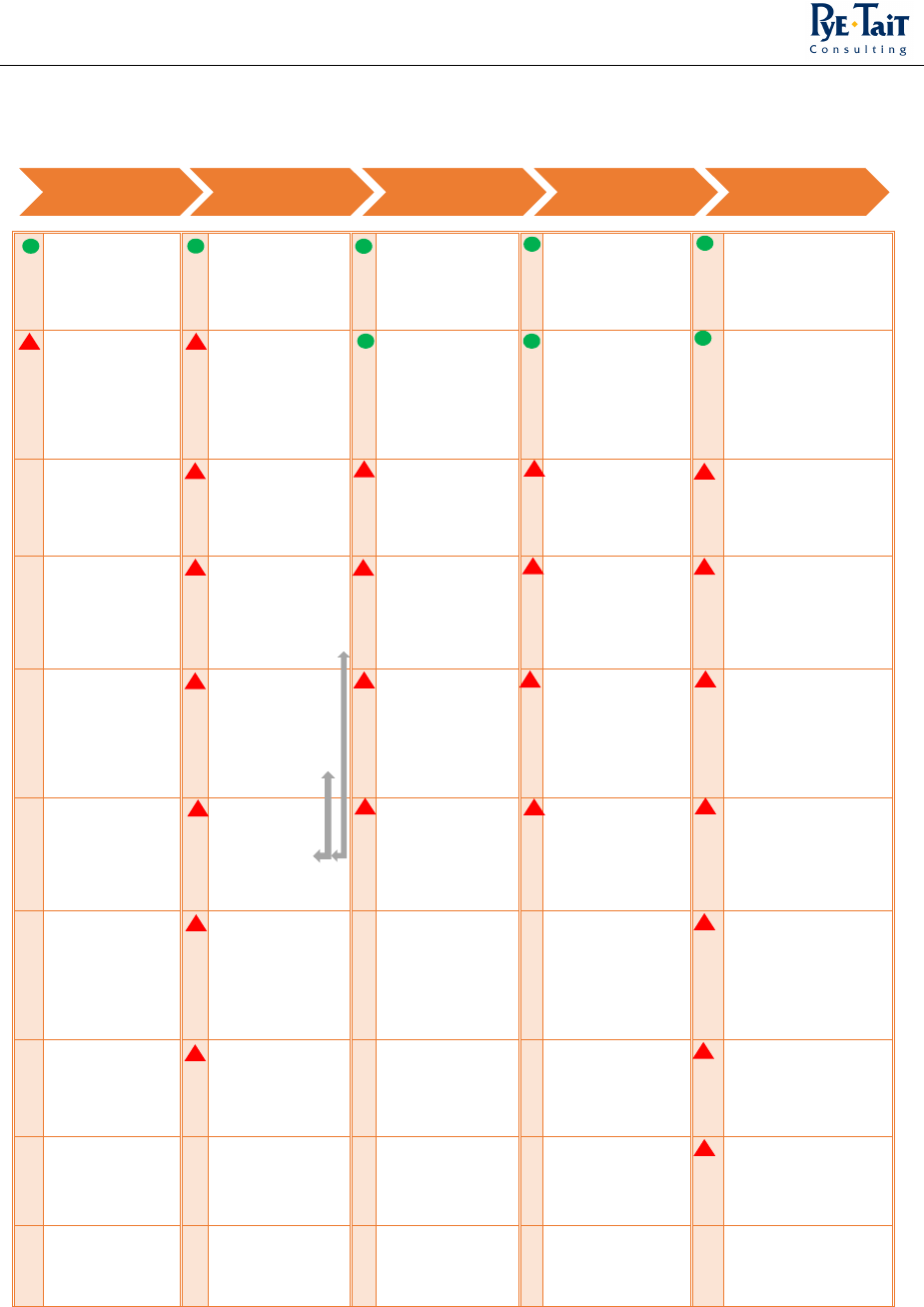
Quality assurance in energy efficiency and low carbon schemes
Page 118 of 136
Figure
Figure Figure
Figure
13
1313
13
: Customer journey showing
: Customer journey showing : Customer journey showing
: Customer journey showing
potential
potential potential
potential
consumer protections and risks within the quality
consumer protections and risks within the quality consumer protections and risks within the quality
consumer protections and risks within the quality
assurance framework for Green Deal
assurance framework for Green Deal assurance framework for Green Deal
assurance framework for Green Deal
Green Deal
Quality Mark and
Code of Practice
Green Deal
Quality Mark and
Code of Practice
Green Deal
Quality Mark and
Code of Practice
Audit of a sample
of properties
(minimum 1% per
annum by
certification body)
Guarantees and/or
warranties ranging
from 5 to 25 years
depending on
products installed
Rogue sales
,
consumer
pressurised into
sale or
false advertising
Financing options
not clearly/fully
explained
(consumer sold
inappropriate
financing plan)
Green Deal
Kitemark
Green
Deal
Guarantee –
insurance fulfilled
if Green Deal
provider fails to
comply or is
insolvent
10
-
year warranty for
consequential building
damage and Green
Deal Kitemark
Recommended
measures not
suitable for
property (not
impartial)
Installer
not fully
competent,
resulting in sub-
standard work and
potential damage
Quality of
assessment and
whether measures
suitable for
property not
inspected/audited
Predicted cost/energy
savings based on
behaviour of previous,
not new householder
Asse
ssor
n
ot fully
competent,
resulting in
inaccurate or
flawed
assessment
Consumer may
not know ‘what
good looks like’
Not all properties
audited, hence
some quality issues
may slip through
the net
Cost/
energy
savings
cannot be guaranteed
EPC an
d/or
assessment data
not fit for
purpose,
undermining
accuracy of
assessment
Consumer not
made aware of
complaints/
sanctions process
or how to seek
redress
Consumer not
made aware of
complaints/
sanctions process
or how to seek
redress
Longer
-
ter
m d
amage
caused to the
property not
identified in absence
of longer-term
monitoring
Recommended
measures not
suitable for
property
Consumer not
made aware (or
fully aware) of
exclusion clauses
within warranties
and/or guarantees
Variances i
n level
of consumer
protection
depending on
length and type of
warranties and/or
guarantees
House sale or
mortgage decisions
potentially affected by
Green Deal financing
attached to the
property
Consumer not
made aware (or
fully aware) of
complaints/
sanctions process
or how to seek
redress
Consumer leaves
property (sale or end
of tenancy); new
householder inherits
Green Deal liability
having had no
financial advice
Consumer may
not know ‘what
good looks like’
Consumer leaves
property (sale or end
of tenancy); new
householder disputes
inherited Green Deal
liability
New householder has
no contractual
relationship with
Green Deal provider
?
Unclear whether
warranties/guarantees
can be transferred to
new householder
Approach Assessment Installation
Post-
installation
Longer-term
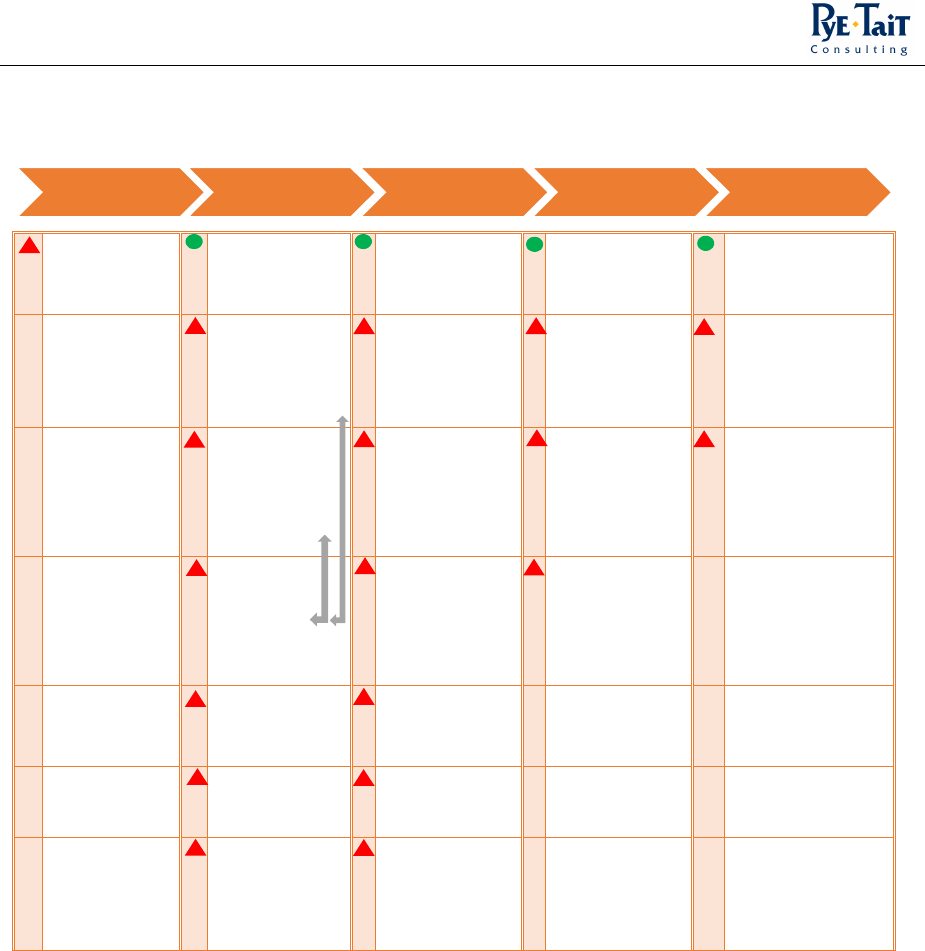
Quality assurance in energy efficiency and low carbon schemes
Page 119 of 136
Figure 14
Figure 14Figure 14
Figure 14
: Customer journey showing potential consumer protections and risks within the quality
: Customer journey showing potential consumer protections and risks within the quality : Customer journey showing potential consumer protections and risks within the quality
: Customer journey showing potential consumer protections and risks within the quality
assurance framework for ECO
assurance framework for ECOassurance framework for ECO
assurance framework for ECO
Not driven by
consumer choice
Renewable Energy
Code of Practice
(RECC)
MCS
Accreditation/PAS
2030 standards
Audit of a sample
of installations
(5%)
Guarantees and/or
warranties ranging up
to 25 years depending
on products installed
Assessor not fully
competent,
resulting in
inaccurate or
flawed
assessment
Installer not fully
competent,
resulting in sub-
standard work and
potential damage
Audits
predominantly
focus on carbon
savings achieved
not quality of
assessment or
installation
Longer
-
term damage
caused to the
property not
identified in absence
of longer-term
monitoring
EPC and/or
assessment data
not fit for
purpose,
undermining
accuracy of
assessment
Consumer may not
know ‘what good
looks like’
Not all properties
audited, hence
some quality
issues may slip
through the net
Cost/
energy
savings
cannot be guaranteed
Recom
mended
measures not
suitable for
property
Variances in level
of consumer
protection
depending on
length and type of
warranties and/or
guarantees
No scheme
-
specific consumer
route to redress
?
Unclear whether
warranties/guarantees
can be transferred to
a new householder
No scheme
specific
complaints/
sanctions process
Not all measures
require
guarantees/
warranties
Consumer not
made aware of
how to seek
redress
No requirement
for insurance-
backed guarantees
Consumer m
ay
not know ‘what
good looks like’
Consumer not
made aware (or
fully aware) of
exclusion clauses
within warranties
and/or guarantees
Approach Assessment Installation
Post-
installation
Longer-term
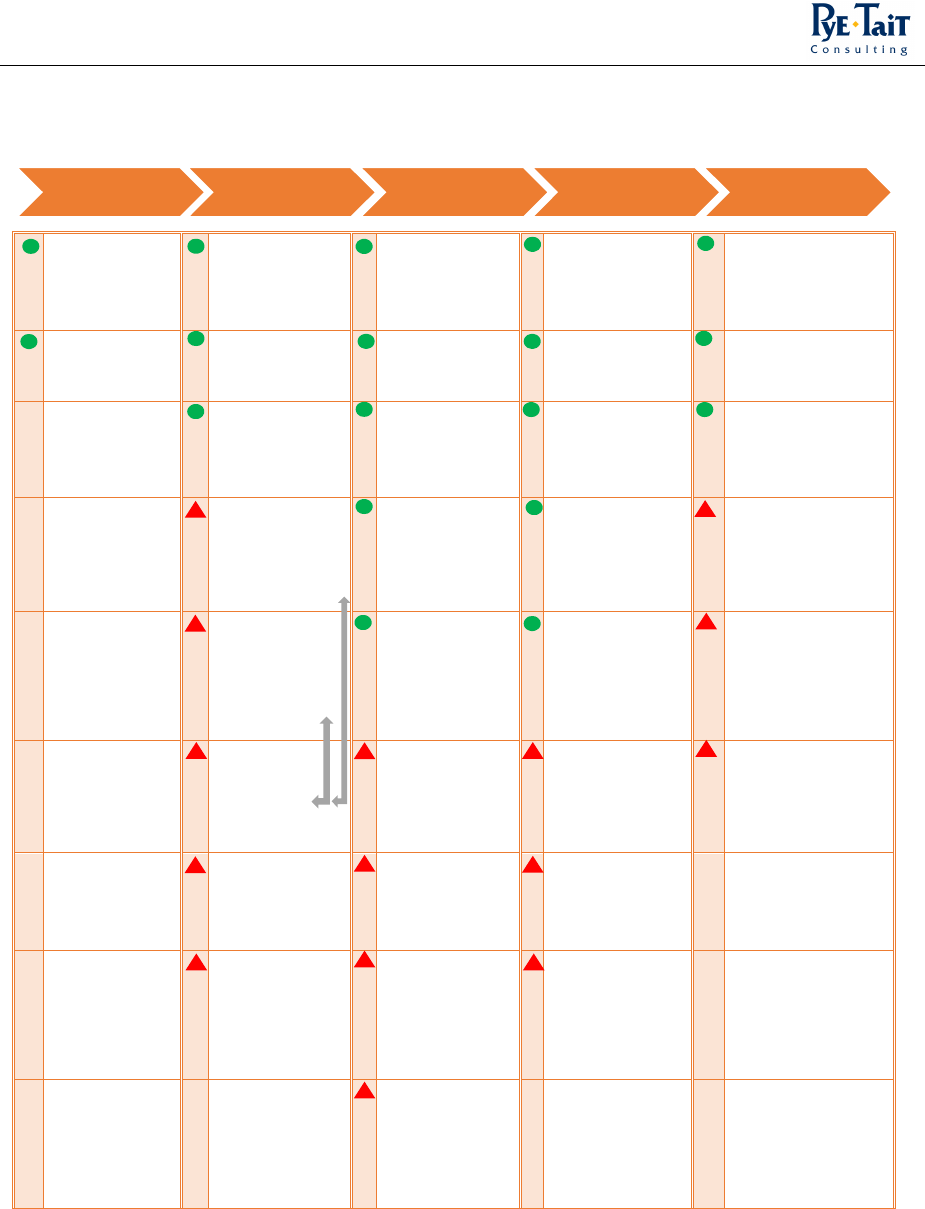
Quality assurance in energy efficiency and low carbon schemes
Page 120 of 136
Figure 15
Figure 15Figure 15
Figure 15
: Customer journey showing potential consumer protections and risks within the quality
: Customer journey showing potential consumer protections and risks within the quality : Customer journey showing potential consumer protections and risks within the quality
: Customer journey showing potential consumer protections and risks within the quality
assurance fr
assurance frassurance fr
assurance framework for MCS
amework for MCSamework for MCS
amework for MCS
Quality Mark
Quality Mark
Quality Mark
Annual inspections
of sample of MCS
installations per
installer
Guarantees and/or
warranties ranging
from 5 to 25 years
depending on
products installed
Renewable
Energy Code of
Practice (RECC)
Renewable Energy
Code of Practice
(RECC)
Renewable Energy
Code of Practice
(RECC)
Renewable Energy
Code of Practice
(RECC)
Renewable Energy
Code of Practice
(RECC)
Assessor has no
incentives to
recommend
certain measures
over others
MCS Kitemark
MCS Kitemark
MCS Kitemark
Assessor not fully
competent,
resulting in
inaccurate or
flawed
assessment
Scheme
-
specific
complaints and
sanctions process
MCS Warranty
protects consumer
if installer ceases
trading
Co
st/
energy
savings
cannot be guaranteed
EPC and/or
assessment data
not fit for
purpose,
undermining
accuracy of
assessment
MCS Warranty
Insurance-backed
guarantees to be
introduced
Consumer has
access to
independent
dispute resolution
provider
Longer
-
term damage
caused to the
property not
identified in absence
of longer-term
monitoring
Recommended
measures not
suitable for
property
Consumer may
not know ‘what
good looks like’
Quality of
assessment and
whether measures
suitable for
property not
inspected/audited
Predicted cost/energy
savings based on
behaviour of previous,
not any new
householders
Consumer may
not know ‘what
good looks like’
Installer not fully
competent,
resulting in sub-
standard work and
potential damage
Not all properties
audited, hence
some quality issues
may slip through
the net
?
Unclear whether
warranties/guarantees
can be transferred to
a new householder
Consumer not
made aware (or
fully aware) of
complaints/
sanctions process
or how to seek
redress
Consumer not
made aware (or
fully aware) of
exclusion clauses
within warranties
and/or guarantees
Installer is able to
select installations
for audit,
undermining
objectivity of the
process
Variances in level
of consumer
protection
depending on
length and type of
warranties and/or
guarantees
Approach Assessment Installation
Post-
installation
Longer-term
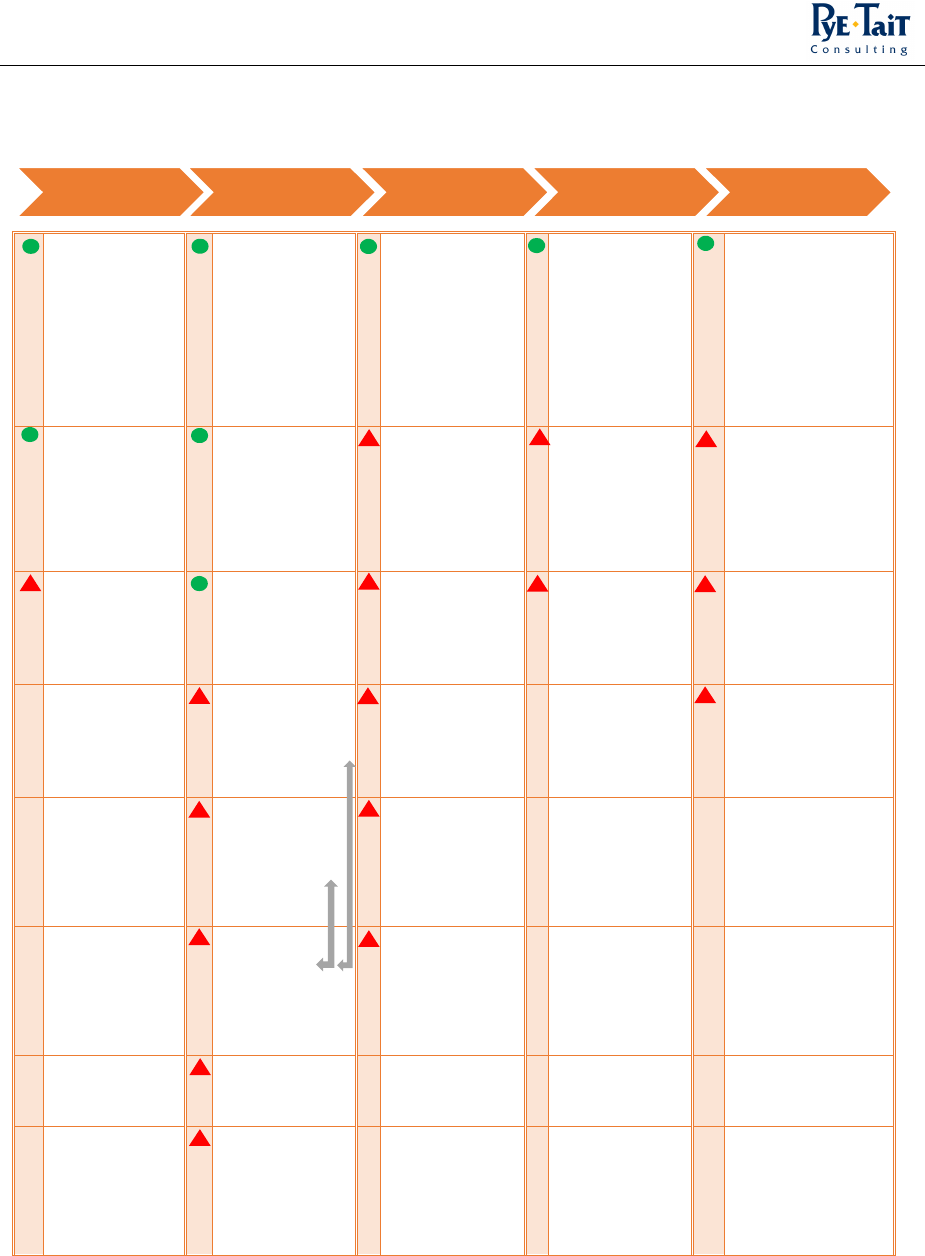
Quality assurance in energy efficiency and low carbon schemes
Page 121 of 136
Figure 16
Figure 16Figure 16
Figure 16
: Customer journey showing potential consumer protections and risks within the quality
: Customer journey showing potential consumer protections and risks within the quality : Customer journey showing potential consumer protections and risks within the quality
: Customer journey showing potential consumer protections and risks within the quality
assurance framework for HEEPS
assurance framework for HEEPSassurance framework for HEEPS
assurance framework for HEEPS
Comprehensive
information,
advice and
guidance available
to consumer on
all aspects of
energy efficiency,
measures, tariffs
and relevant
schemes (not just
HEEPS)
Local authorities
enter into
contracts with
assessors, and
have no particular
affiliation or
vested interest in
working with one
company over
another
Local authorities
enter into
contracts with
installers, and
have no particular
affiliation or
vested interest in
working with one
company over
another
Consumer
has one
clear point of
contact at the
local authority in
case of complaints
or queries
Guarantees and/or
warranties ranging up
to 25 years depending
on products installed
Face
-
to
-
face and
outreach advice
available for
consumers
Independent
technical
inspections
undertaken to
check property
suitability for
proposed
measures
Installer is not
fully competent,
resulting in sub-
standard work and
potential damage
Not all properties
audited, hence
some quality
issues may slip
through the net
Predicted cost/energy
savings based on
behaviour of previous,
not any new
householders
Some
components of
the scheme ECO
funded/facilitated
and not driven by
consumer choice
Assessor has no
incentives to
recommend
certain measures
over others
Consumer may
not know ‘what
good looks like’
Consumer not
made aware of
complaints/
sanctions process
or how to seek
redress
Cost/
energy
savings
cannot be guaranteed
Assessor not fully
competent,
resulting in
inaccurate or
flawed
assessment
Consumer not
made aware of
complaints/
sanctions process
or how to seek
redress
Longer
-
term damage
caused to the
property not
identified in absence
of longer-term
monitoring
EPC and/or
assessment data
not fit for
purpose,
undermining
accuracy of
assessment
Consumer not
made aware (or
fully aware) of
exclusion clauses
within warranties
and/or guarantees
?
Unclear whether
warranties/guarantees
can be transferred to
any new householders
Recommended
measures not
suitable for
property
Variances in level
of consumer
protection
depending on
length and type of
warranties and/or
guarantees
Consumer may
not know ‘what
good looks like’
Consumer not
made aware (or
fully aware) of
complaints/
sanctions process
or how to seek
redress
Approach Assessment Installation
Post-
installation
Longer-term

Quality assurance in energy efficiency and low carbon schemes
Page 122 of 136
Figure 17
Figure 17Figure 17
Figure 17
: Customer journey showing potentia
: Customer journey showing potentia: Customer journey showing potentia
: Customer journey showing potentia
l consumer protections and risks within the quality
l consumer protections and risks within the quality l consumer protections and risks within the quality
l consumer protections and risks within the quality
assurance framework for Arbed 2
assurance framework for Arbed 2assurance framework for Arbed 2
assurance framework for Arbed 2
Consumers
approached by
engagement
company with no
vested interest in
‘selling’
Initial assessment
followed by a
further technical
appraisal to check
proposed
measures suitable
for property
Consumer given
completion pack
including advice
on energy
efficiency
behaviours,
measures
installed, and
associated
guarantees and/or
warranties
Inspection of 100%
of properties to
check quality of
installation
Guarante
es and/or
warranties ranging up
to 25 years depending
on products installed
Assessor has no
incentives to
recommend
certain measures
over others
One point of
contact for
consumer in the
event of
complaints or
queries
One point of
contact for
consumer in the
event of
complaints or
queries
Further technical
inspection of 100% of
properties a year after
installation
Assessor not fully
competent,
resulting in
inaccurate or
flawed
assessment
Installer not fully
competent,
resulting in sub-
standard work and
potential damage
Cost/
energy
savings
cannot be guaranteed
EPC and/or
assessment data
not fit for
purpose,
undermining
accuracy of
assessment
Consumer may
not know ‘what
good looks like’
?
Unclear whether
warranties/guarantees
can be transferred to
a new householder
Recommended
measures not
suitable for
property
Consumer not
made aware (or
fully aware) of
exclusion clauses
within warranties
and/or guarantees
Consumer may
not know ‘what
good looks like’
Variances in level
of consumer
protection
depending on
length and type of
warranties and/or
guarantees
Approach Assessment Installation
Post-
installation
Longer-term

Quality assurance in energy efficiency and low carbon schemes
Page 123 of 136
Figure 18
Figure 18Figure 18
Figure 18
: Customer journey showing potential consumer protections and risks within the quality
: Customer journey showing potential consumer protections and risks within the quality : Customer journey showing potential consumer protections and risks within the quality
: Customer journey showing potential consumer protections and risks within the quality
assurance framework for N
assurance framework for Nassurance framework for N
assurance framework for Nest
estest
est
A
wareness raised
about the scheme
and referrals
made from Nest
development
managers and
their partnership
organisations,
none of whom
have any vested
interest in
‘selling’
Initial assessment
informs
development of
an installation
plan to confirm
proposed
measures are
suitable for
property
Consumer given
completion pack
including advice
on energy
efficiency
behaviours,
measures
installed, and
associated
guarantees and/or
warranties
100% of properties
checked by
assessors after
work completed
Aft
ercare available to
consumer for 2 years
post installation
Advice and
guidance for
consumers about
energy efficiency
measures and
behaviours
available via
Resource Efficient
Wales
Assessor has no
incentives to
recommend
certain measures
over others
One point of
contact for
consumer in the
event of
complaints or
queries
Installations
guaranteed for 2
years
Cost/
energy
savings
cannot be guaranteed
Assessor not fully
competent,
resulting in
inaccurate or
flawed
assessment
Installer
not fully
competent,
resulting in sub-
standard work and
potential damage
One point of
contact for
consumer in the
event of
complaints or
queries
Predicted cost/energy
savings based on
behaviour of previous,
not any new
householders
EPC and/o
r
assessment data
not fit for
purpose,
undermining
accuracy of
assessment
Consumer
may
not know ‘what
good looks like’
?
Unclear whether the
2-year guarantee can
be transferred to a
new householder
Recommended
measures not
suitable for
property
Consumer not
made aware (or
fully aware) of
exclusion clauses
within warranties
and/or guarantees
Consumer may
not know ‘what
good looks like’
Approach Assessment Installation
Post-
installation
Longer-term

Quality assurance in energy efficiency and low carbon schemes
Page 124 of 136
4.2 Recommendations
In summary, there is no guarantee for the consumer that work w
ill be ‘right first time’. This points
to an urgent need to simplify the overarching landscape for consumers, and to close the loopholes
and fix the issues in the quality assurance framework. Such issues and loopholes create the
potential for sub-standard work to be carried out, and which furthermore could become rife, in
light of limited consumer understanding as to ‘what good looks like’. There could be longer-term
consequences for consumers experiencing financial and emotional detriment as a result.
We therefore recommend that the Citizens Advice Service consider the following actions:
• Advocate for the UK Government to transfer of responsibility and accountability of all
energy efficiency related schemes and mechanisms currently managed by multiple UK
Government departments, into one department (likely to be DECC)
• Advocate for the UK Government to incorporate stronger consumer protection into ECO,
notably offering some form of redress for consumers where sub-standard work is carried
out. For future schemes, this should be extended to the Scottish Government that will
have responsibility for design of schemes in Scotland
• Develop a guidance document and checklist for consumers that will help them to identify
potential problems with the assessment and installation process, including aspects to look
for such as Quality Mark ‘badges’
• Consider how best practice in the Scottish and Welsh schemes might be incorporated into
Great Britain-wide initiatives Green Deal, ECO and MCS, with particular attention given to:
- decoupling advice and assessment from recommendation of measures
- improving information given to consumers about guarantees and warranties
- improving aftercare and incorporating longer-term monitoring (for example
technical inspections take place a year after the work was completed for Arbed 2)
Increasing the sample size for audit/inspection to 100 per cent as it is for the Welsh
schemes, is likely to be cost prohibitive, and further research may be required to identify
potential funding streams
• Advocate for UK and national Governments to work towards the creation of one
170
energy
efficiency and low carbon framework that integrates quality assurance with technical
operating standards, and includes one clear and seamless process for customers to make
complaints and seek redress. This could include for example:
170
Further discussion/research may be required to consider whether this should be Great Britain-wide or whether there should be one
framework per nation

Quality assurance in energy efficiency and low carbon schemes
Page 125 of 136
-
guidance for certification bodies about investigating and taking action against
instances of non-compliance among assessors and installers, and in setting and
enforcing quality standards
- a requirement for insurance-backed guarantees to increase consumer
protection
171
- a requirement for consumers to be given independent financial advice for
schemes such as the Green Deal and any future similar initiative which is based on
a loan financing mechanism
• Consider how the PAS 2030 could be strengthened as the main technical standard for
energy efficiency work. This is likely to require:
- clearer wording to reduce the scope for ambiguity and inconsistent interpretation
- scope for consumer protection through reference to suitable high quality product
warranties and insurance-backed guarantees (see below)
• Advocate for the Financial Conduct Authority (FCA) to set one core standard for robust
high quality guarantees and warranties for energy efficiency and low carbon work
• Advocate for the UK Government to put in place a single Ombudsman to cover energy
efficiency and low carbon, considering how this would fit in with the wider redress
landscape
172
• Advocate for the UK Government to introduce a risk-driven audit regime which would
include:
- information sharing between relevant organisations about audit results
- auditing of quality of advice/assessment as well as installations
- a requirement for longer-term monitoring to identify problems that may emerge
over time
173
• Advocate for measures to improve the quality of training provision and competency
standards, for energy assessors and installers to require:
- on-going CPD
- minimum entry criteria (for example a certain amount/type of relevant industry
experience) for training courses
- a minimum number of Guided Learning Hours (GLH) for training courses
171
This is already being addressed for MCS
172
Further discussion/research may be required to consider whether this should be Great Britain-wide or whether there should be one
organisation per nation
173
Determining the most appropriate time frame for longer-term monitoring may require further specialist technical input

Quality assurance in energy efficiency and low carbon schemes
Page 126 of 136
•
Undertake a regular programme of mystery shopping across all schemes in scope of this
research, focusing particularly on the advice and assessment component which at present
is under-represented at audit

Quality assurance in energy efficiency and low carbon schemes
Page 127 of 136
Bibliography
Amgen Renewables (2014)
Biomass boiler s
ervice.
Amgen Renewables. Available:
http://www.amgenrenewables.com/press-releases/biomass-boiler-service/ [Accessed on 4
th
December 2014]
Asset Skills (2014, I) “Level 4 Diploma in Green Deal Non-Domestic Advice” The Sector Skills Council
for the places where we live and work. Asset Skills.
Asset Skills (2014, II) “Level 3 Diploma in Green Deal Domestic Advice” The Sector Skills Council for
the places where we live and work. Asset Skills.
Association of Plumbing and Heating Contractors (No Date Given) Certification schemes. Association
of Plumbing and Heating Contractors. Available:
http://www.aphc.co.uk/certification_schemes.asp [Accessed on 24
th
November 2014]
BBC News, Business (2014) “Rogues using Green Deal scheme as cover says Citizens Advice” BBC
News. Available: http://www.bbc.co.uk/news/business-27139117 [Accessed on 18th March
2015]
Benchmark Certification Limited (2013) Scheme rules. Benchmark Certification Limited.
BM TRADA (No Date Given) Minimum Technical Competence. BM TRADA. Available:
http://www.bmtrada.com/en-gb/certification/product-certification/personnel-
certification/minimum-technical-competence [Accessed on 2nd December 2014]
BRE (2013) Green Deal Guide: The Green Deal explained. BRE.
BRE (No Date Given) Environmental certification schemes. BRE. Available:
http://www.bre.co.uk/page.jsp?id=1763 [Accessed on 20
th
March 2015]
British Assessment Bureau (The) (2013) The Green Deal and ISO 9001. The British Assessment
Bureau. Available: http://www.british-assessment.co.uk/articles/the-green-deal-and-iso-9001
[Accessed on 2
nd
December 2014)
British Board of Agrément (2014) “BBA Solid Wall Insulation Competent Person Scheme — how will it
help installers?” British Board of Agrément. Available:
http://www.bbacerts.co.uk/download/document-types/literature/BBAdatasheet_060i2.pdf%20
[Accessed on 20
th
March 2015]
British Standards Institution (2012) PAS2030:2012 Edition 2: Improving the energy efficiency of
existing buildings. Specification for installation process, process management and service

Quality assurance in energy efficiency and low carbon schemes
Page 128 of 136
provision.
British Standards Institution.
British Standards Institution (No Date Given) Kitemark, Microgeneration Products: New technology
with traditional values. British Standards Institution.
British Standards Institution (The) (No Date Given) The Energy Efficient Buildings Kitemark. The
British Standards Institution. Available: http://www.bsigroup.co.uk/en-GB/the-green-
deal/Energy-Efficient-Buildings-Kitemark/ [Accessed on 3
rd
December 2014]
Building Futures Group (The) (2014) Energy Assessment and Advice Suite of NOS. The Building
Futures Group. Available: http://www.thebuildingfuturesgroup.com/wp-
content/uploads/2014/03/EnergyAssessmentandAdviceSuiteofNOSStatusofNOS.pdf [Accessed:
2
nd
December 2014]
Cabinet Office & Efficiency and Reform Group (2013) Compliance with European Union laws and
regulation, Business and enterprise. Cabinet Office.
Cavity Insulation Guarantee Agency (2015) About CIGA. Cavity Insulation Guarantee Agency.
Available: http://www.ciga.co.uk/about-ciga/ [Accessed on 3
rd
December 2014]
CEN Certification (2012, I) Specific CEN Keymark scheme Rules for Solar Thermal Products. European
Committee for Standardisation.
CEN Certification (2012, II) Keymark: one standard, one test, one mark. European Committee for
Standardisation.
Centre for Sustainable Energy (2014) The ECO: an evaluation of year 1: Final report to Energy UK.
Centre for Sustainable Energy.
Citizens Advice Bureau (2002) Advice guide: guarantees. Citizens Advice Bureau.
Citizens Advice Bureau (2012) Advice guide: safety. Citizens Advice Bureau.
Citizens Advice Bureau (2014) Advice guide: tenancy deposits. Citizens Advice Bureau.
Citizens Advice Bureau (No Date Given) “Finding a qualified, registered electrician or gas engineer”
Advice guide. Citizens Advice Bureau. Available:
http://www.adviceguide.org.uk/england/consumer_e/consumer_energy_supply_e/consumer_
energy_and_your_home_e/consumer_energy_work_e/finding_a_qualified_registered_electrici
an_or_gas_engineer.htm [Accessed on 28
th
November 2014]
Citizens Advice Bureau (No Date Given) Advice guide: consumer contracts. Citizens Advice Bureau.
Available:

Quality assurance in energy efficiency and low carbon schemes
Page 129 of 136
http://www.adviceguide.org.uk/england/consumer_e/consumer_protection_for_the_consume
r_e/consumer_contracts_e.htm [Accessed on 4
th
December 2014]
Competent Roofer (2011) Available: http://www.competentroofer.co.uk/ [Accessed on 20
th
November 2014]
Construction Industry Training Board (The) (2013) Qualifications, Competence and Green Deal Work.
The Construction Industry Training Board. Available: http://www.citb.co.uk/health-safety-and-
other-topics/sustainability-new/training/qualifications-competence-and-green-deal-work/
[Accessed on 2
nd
December 2014]
Consumer Focus (2009) Microgeneration. Consumer Focus.
Consumer Focus: Centre for Consumers and Essential Services, University of Leicester (2011) Making
the connection: Strengthening the advice, complaint handling and redress framework.
Consumer Focus.
Consumer Focus, (2012), Filling the Gaps http://www.consumerfocus.org.uk/publications/filling-the-
gaps-accuracy-of-green-deal-advice-for-cavity-walled-homes. Consumer Focus.
Consumer Futures (2014) Response to the Energy and Climate Change Select Committee on the
Green Deal watching brief part 2. Consumer Focus. Available:
http://data.parliament.uk/writtenevidence/committeeevidence.svc/evidencedocument/energy
-and-climate-change-committee/green-deal-watching-brief-part-2/written/6187.pdf
Department for Business, Innovation & Skills (2012) Consumer rights and issues. Department for
Business, Innovation & Skills.
Department for Business, Innovation & Skills (2013) Consumer protection partnership: priorities
report 2013-14: Report on the Partnerships work to fate and future priorities. Department for
Business, Innovation & Skills.
Department for Communities and Local Government (2011) Common Minimum Technical
Competency requirements. Department for Communities and Local Government.
Department for Communities And Local Government (2012) Building regulations: Competent Person
self-certification Schemes 1 - conditions Of authorisation. Department Of Communities and
Local Government.
Department for Communities and Local Government (2014) Minimum competence requirements
work undertaken through competent person schemes. Department Of Communities and Local
Government.

Quality assurance in energy efficiency and low carbon schemes
Page 130 of 136
Department of Energy & Climate Change & the Rt Hon Chris Huhne MP (2010, II)
No place for
cowboys in Green Deal: Helping households to cut their energy bills, Energy & Climate change.
Department of Energy & Climate Change.
Department of Energy & Climate Change (2006) Final Stage Impact Assessment for the Green Deal
and Energy Company Obligation. Department of Energy & Climate Change.
Department of Energy & Climate Change (2010, I) The Green Deal: A summary of the Government’s
proposals. Department of Energy & Climate Change.
Department of Energy & Climate Change (2012, I) Final Stage Impact Assessment for the Green Deal
and Energy Company Obligation. Department of Energy & Climate Change.
Department of Energy & Climate Change (2012, II) Progress on setting up the Green Deal Framework.
Department of Energy & Climate Change.
Department of Energy & Climate Change (2012, III) The Green Deal and Energy Company Obligation:
Government Response to the November 2011 Consultation. Department of Energy & Climate
Change.
Department of Energy & Climate Change (2012, IV) Helping households to cut their energy bills.
Department of Energy & Climate Change.
Department of Energy & Climate Change (2012, V) Government response to: ‘Home insulation: a
report on the call for evidence to be carried out by the OFT’’ Department of Energy & Climate
Change.
Department of Energy & Climate Change (2014, II) “The Green Deal home Improvement Fund:
Upfront cash to help you save more on your energy bills” Department for Environment and
Climate Change Blog. Department of Energy & Climate Change. Available:
https://decc.blog.gov.uk/2014/06/09/the-green-deal-home-improvement-fund-upfront-cash-to-
help-you-save-more-on-your-energy-bills/ [Accessed on 19
th
March 2015]
Department of Energy & Climate Change (2014, III), Answering consumer questions about the closure
of the Green Deal Home Improvement Fund, GDHIF Closure Consumer FAQs - Version 1.1.
Department of Energy & Climate Change.
Department of Energy & Climate Change (2014, IV) Domestic Green Deal and Energy Company
Obligation in Great Britain, Monthly report: statistical release: Experimental statistics.
Department of Energy & Climate Change.
Department of Energy & Climate Change (2014, V), The future of the Energy
Company Obligation: Government response to the 5 March 2014 consultation,

Quality assurance in energy efficiency and low carbon schemes
Page 131 of 136
Dep
artment of Energy & Climate Change
,
14D/270 22 July 2014
https://www.gov.uk/government/uploads/system/uploads/attachment_data/file/342178/The_
Future_of_the_Energy_Company_Obligation_Government_Response.pdf
Department of Energy & Climate Change (2015, I) “First release vouchers extended until 31
st
March
2015” Department of Energy & Climate Change. Available:
https://www.gov.uk/government/news/gdhif-release-1-vouchers-to-be-extended-to-31-march-
2015 [Accessed on 19
th
March 2015]
Department of Energy & Climate Change (2015, II), Domestic Green Deal and Energy Company
Obligation in Great Britain, Monthly Report Statistical release: National Statistics. Department
of Energy & Climate Change.
Department of Energy & Climate Change (2014, V) “Green Deal home improvement fund details
announced”. Department of Energy & Climate Change.
Available: https://www.gov.uk/government/news/green-deal-home-improvement-fund-
details-announced [Accessed on 19
th
March 2015]
Department of Energy & Climate Change, (2015, III), “£70 million for home energy efficiency through
the Green Deal Home Improvement Fund Release 3” Department of Energy & Climate Change.
Available: https://www.gov.uk/government/news/70-million-for-home-energy-efficiency-
through-the-green-deal-home-improvement-fund-release-3 [Accessed on 19
th
March 2015]
Department of Energy and Climate Change (2014, I) Green Deal Code of Practice (Version 4).
Department of Energy and Climate Change.
Draft Statutory Instruments (2012) Energy conservation: The Green Deal Framework (Disclosure,
Acknowledgement, Redress etc.) Regulations 2012. Draft Statutory Instruments.
Electrical Competent Person Scheme Operators Ltd (2014) About us. Electrical Competent Person
Scheme Operators Ltd. Available: http://www.electricalcompetentperson.co.uk/About-Us
[Accessed on 28
th
November 2014]
Energy and Utility Skills Register (2011) About us. Energy and Utility Skills. Available:
http://www.eusr.co.uk/about-us [Accessed 3
rd
December 2014]
Energy Saving Trust (2014, I) Product standards. Energy Saving Trust. Available:
http://www.energysavingtrust.org.uk/businesses/content/product-standards [Accessed on 27
th
November 2014]
Energy Saving Trust (2014, II) Air source heat pumps. Energy Saving Trust. Available:
http://www.energysavingtrust.org.uk/domestic/content/air-source-heat-pumps [Accessed on
4
th
December 2014]

Quality assurance in energy efficiency and low carbon schemes
Page 132 of 136
Energy Saving Trust (2014, III) Green Deal and ECO. Energy Saving Trust. Available:
http://www.energysavingtrust.org.uk/domestic/content/green-deal-and-eco [Accessed on 1
st
December 2014]
Energy Star (2014) How products earn the Energystar label. Environmental Protection Agency &
Department of Energy. Available: http://www.energystar.gov/products/how-product-earns-
energy-star-label [Accessed on 3
rd
December 2014]
Food Standards Agency (2012) Livestock & food and farming. Food Standards Agency.
Gas Safe Register (2011) Rules of registration. Version 3.0. Gas Safe Register.
Gas Safe Register (2014) What is the Gas Safe Register?. Gas Safe Register. Available:
http://www.gassaferegister.co.uk/about/what_is_gas_safe_register.aspx [Accessed on 14
th
November 2014]
GOV.UK (2014) Current Competent Person Schemes and how schemes are authorised. GOV.UK
Available: https://www.gov.uk/competent-person-scheme-current-schemes-and-how-schemes-
are-authorised#how-schemes-are-authorised [Accessed on 27
th
November 2014]
GOV.UK (No Date Given) The role of the Green Deal oversight and registration body: summary.
GOV.UK. Available:
https://www.gov.uk/government/uploads/system/uploads/attachment_data/file/66666/3745-
role-green-deal-oversight-body.pdf [Accessed on 20
th
March 2015]
GOV.UK (No Date Specified) The role of the Green Deal oversight body. GOV.UK Available:
https://www.gov.uk/government/uploads/system/uploads/attachment_data/file/66666/3745-
role-green-deal-oversight-body.pdf [Accessed on 21
st
November 2014]
Government Online (2013) Delivery of energy efficiency measures through HEEPS ABS Programmes.
Government Online. Available:http://www.government-online.net/delivery-of-energy-
efficiency-measures-through-heeps-abs-programmes/ [Accessed on 4
th
December 2014]
Green Book Live (2014) ISO 14001 Environmental Management System certification. BRE Global.
Available: http://www.greenbooklive.com/search/scheme.jsp?id=122 [Accessed on 3
rd
December 2014]
Green Book Live (2015) Microgeneration products and installers. BRE Global. Available:
http://www.greenbooklive.com/search/scheme.jsp?id=4 [Accessed on 18
th
March 2015]
Green Deal Installer Hub (2014) “How Many GDHIF Voucher are Phantom Vouchers?” News. YES
Energy Solutions.

Quality assurance in energy efficiency and low carbon schemes
Page 133 of 136
http://www.greendealinstallerhub.co.uk/190,news,how_many_gdhif_vouchers_are_phantom_
vouchers.html [Accessed on 19
th
March 2015]
Green Deal Oversight and Registration Body (2014) Green Deal Provider. Department of Energy and
Climate Change. Available: http://gdorb.decc.gov.uk/providers [Accessed on 19
th
December
2014]
Green Deal Skills Alliance (2014) Green Deal Competency Framework. Cut the Carbon. Available:
http://cutcarbon.info/media/50393/green_deal_competency_framework_march_2014.pdf
[Accessed on 18
th
March 2015]
Heating & Hot Water Industry Council (2014) Green Deal’s quality assurance scheme for installers
does not imply quality. Heating & Hot Water Industry Council. Available:
http://www.centralheating.co.uk/news/green-deal%E2%80%99s-quality-assurance-scheme-for-
installers-does-not-imply-quality [Accessed on 20
th
March 2013]
Institute of Environmental Management and Assessment (2014) What is the EIA Quality Mark
Register?. Institute of Environmental Management and Assessment. Available:
http://www.iema.net/eiaq-what [Accessed on 3
rd
December 2014]
Kent County Council (2013) Become a Green Deal installer. Kent County Council.
Lainé, L (2011) Green Deal or no deal: Building customer confidence in energy efficiency services.
Consumer Focus.
Microgeneration Certification Scheme (2015) Available:
http://www.microgenerationcertification.org/ [Accessed on 18
th
March 2015]
Microgeneration Certification Service & Department of Energy & Climate Change (2014, I) Low and
zero carbon technologies: opportunities and the MCS. Department of Energy & Climate Change.
Microgeneration Certification Service & Department of Energy & Climate Change (2014, II)
Microgeneration Installation Standard: MCS 001: Installer certification scheme requirements:
Issue 2.4. Department of Energy & Climate Change.
Microgeneration Certification Service & Department of Energy & Climate Change. (2014, III)
Microgeneration Installation standard: MIS 3001: Requirement for contractors undertaking the
supply, design installation, set to work commissioning and handover of solar heating
Microgeneration systems. Department of Energy & Climate Change.
Money Advice Service (2014) The financial services compensation scheme - a quick guide. Money
Advice Service. Available: https://www.moneyadviceservice.org.uk/en/articles/the-financial-
services-compensation-scheme---quick-guide [Accessed on 28
th
November 2014]

Quality assurance in energy efficiency and low carbon schemes
Page 134 of 136
National Inspection Council for Electrical Installation Contracting (2014) Making your mark: Logo
usage guidelines. National Inspection Council for Electrical Installation Contracting.
National Inspection Council for Electrical Installation Contracting. The NICEIC insulation warranty
scheme. National Inspection Council for Electrical Installation Contracting.
National Insulation Association (2010) Code of professional practice. National Insulation Association.
National Occupational Standards (2011) COSVR450 Install cavity wall insulation. National
Occupational Standards.
National Occupational Standards (2012) ASTGDA1: Provide information to customers on the
principles financing and operation of the Green Deal (or equivalent programme). National
Occupational Standards.
National Warranties: A Kinnell Group Company (2014) The deposit and workmanship warranty
insurance scheme. National Warranties: A Kinnell Group Company.
Nest (2011-2012) Annual report. Welsh Assembly Government.
Nest Wales (2014) About Nest. Welsh Assembly Government. Available:
http://www.nestwales.org.uk/about-nest [Accessed on 4
th
December 2014]
NIBE Energy Systems Limited (2013) Standard NIBE warranty Terms and Conditions. NIBE Energy
Systems Limited. Available:http://www.nibe.co.uk/Listor-pa-startsidan/Hitta-installator/NIBE-
Warranty-Terms-and-Conditions/Guarantee-Terms-and-Conditions/ [Accessed 4
th
December
2014]
Office of Communications (2013) Section nine: commercial references in television programming.
Office of Communications.
Office of Fair Trading (2012) Home insulation: a report on the call for evidence. Office of Fair Trading.
Office of Gas and Electricity Markets (2014, I) Energy Companies Obligation (ECO). Office of Gas and
Electricity Markets. Available: https://www.ofgem.gov.uk/environmental-programmes/energy-
companies-obligation-eco [Accessed on 21
st
November 2014]
Office of Gas and Electricity Markets (2014, II) Energy Companies Obligation: appropriate
guarantees. Office of Gas and Electricity Markets.
Office of Gas and Electricity Markets E-serve (2013, I) Feed-in Tariff: Guidance for Licensed Electricity
Supplier. Office of Gas and Electricity Markets.

Quality assurance in energy efficiency and low carbon schemes
Page 135 of 136
Office of Gas and Electricity Markets E-serve (2013, II) Renewable Heat Incentive: annual report.
Office of Gas and Electricity Markets.
Office of Gas and Electricity Markets E-serve (2013, III) Energy Companies Obligation (ECO): guidance
for suppliers. Office of Gas and Electricity Markets.
Office for Standards in Education, Children's Services and Skills (2009) Common inspection
framework for further education and skills 2009. Office for Standards in Education, Children's
Services and Skills.
Ombudsman Service Limited (The) (No Date Given) The Green Deal. The Ombudsman Service
Limited. Available: http://www.ombudsman-services.org/green-deal.html [Accessed on 21
st
November 2014]
Oxlade, A (2014) “Green Deal: £7,000 home improvement scheme could make a comeback” The Daily
Telegraph. Available: http://www.telegraph.co.uk/finance/personalfinance/energy-
bills/11145427/Green-Deal-7000-home-improvement-scheme-could-make-a-comeback.html.
[Accessed on 27
th
October 2014]
Palmer, K (2014) “Green Deal: How to claim £5,600 on home improvements” The Daily Telegraph.
Available: http://www.telegraph.co.uk/finance/personalfinance/household-
bills/11279871/How-to-save-5600-on-home-improvements-with-Green-Deal-cashback.html
[Accessed 19
th
March 2015]
Renewable Energy Consumer Code (2014) Renewable Energy Consumer Code: For supplying small-
scale renewable and low carbon heat or power generating systems to domestic consumers.
Department of Energy & Climate Change.
Scottish Government (2013) Home energy programmes summary report 2009/2013. Scottish
Government.
Soil Association Certification (2011) Our Credentials. The Soil Association. Available:
http://www.sacert.org/aboutus/ourcredentials [Accessed 1
st
December 2014]
SolarEnergy.net (2014) Guide to Understanding Solar Warranties. Solar Energy Net. Available:
http://solarenergy.net/solar-power-resources/guide-to-understanding-solar-warranties/
[Accessed on 4
th
December 2014]
The Solar Keymark, CEN Keymark Scheme (2010) The Solar Keymark/ The Quality Label for Solar
Thermal Products in Europe. European Committee for Standardisation.
The Statutory Office (2012) Energy Conservation: The Green Deal Framework (Disclosure,

Quality assurance in energy efficiency and low carbon schemes
Page 136 of 136
Acknowledgement, Redress etc.) Regulations 2012
:
Draft Statutory i
nstruments
Trading Standards Institute (2013) Consumer Codes Approval Scheme: Core criteria and guidance.
Trading Standards Institute
Trustmark (2014) Core Criteria 2014. Trustmark Limited.
Welsh Assembly Government (2013) Arbed - Strategic energy performance investment programme.
Welsh Government. Available:
http://wales.gov.uk/topics/environmentcountryside/energy/efficiency/arbed/?lang=en[Accesse
d on 4
th
December 2014]
Welsh Assembly Government (2014) Home energy efficiency schemes: the facts. Welsh Assembly
Government.
